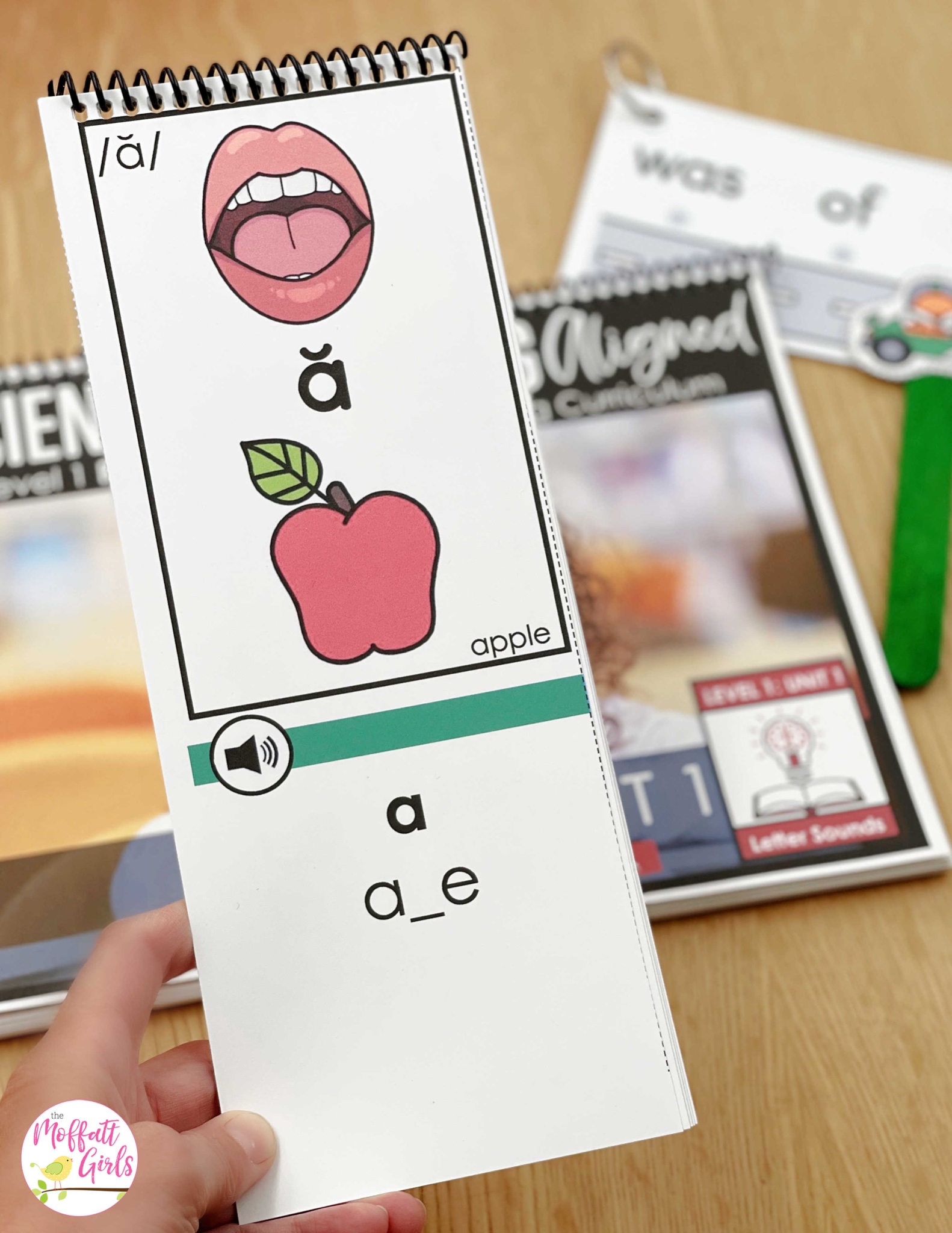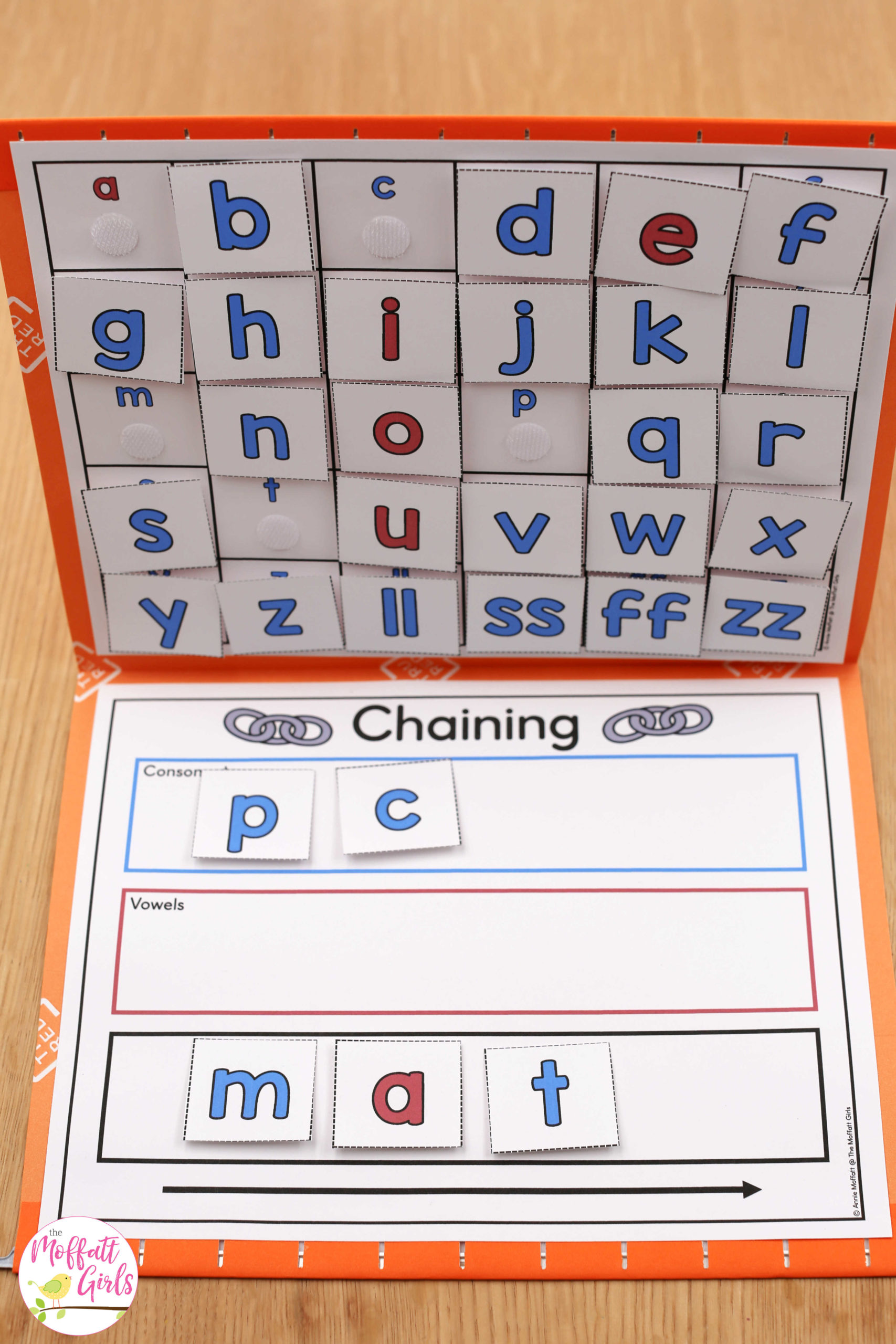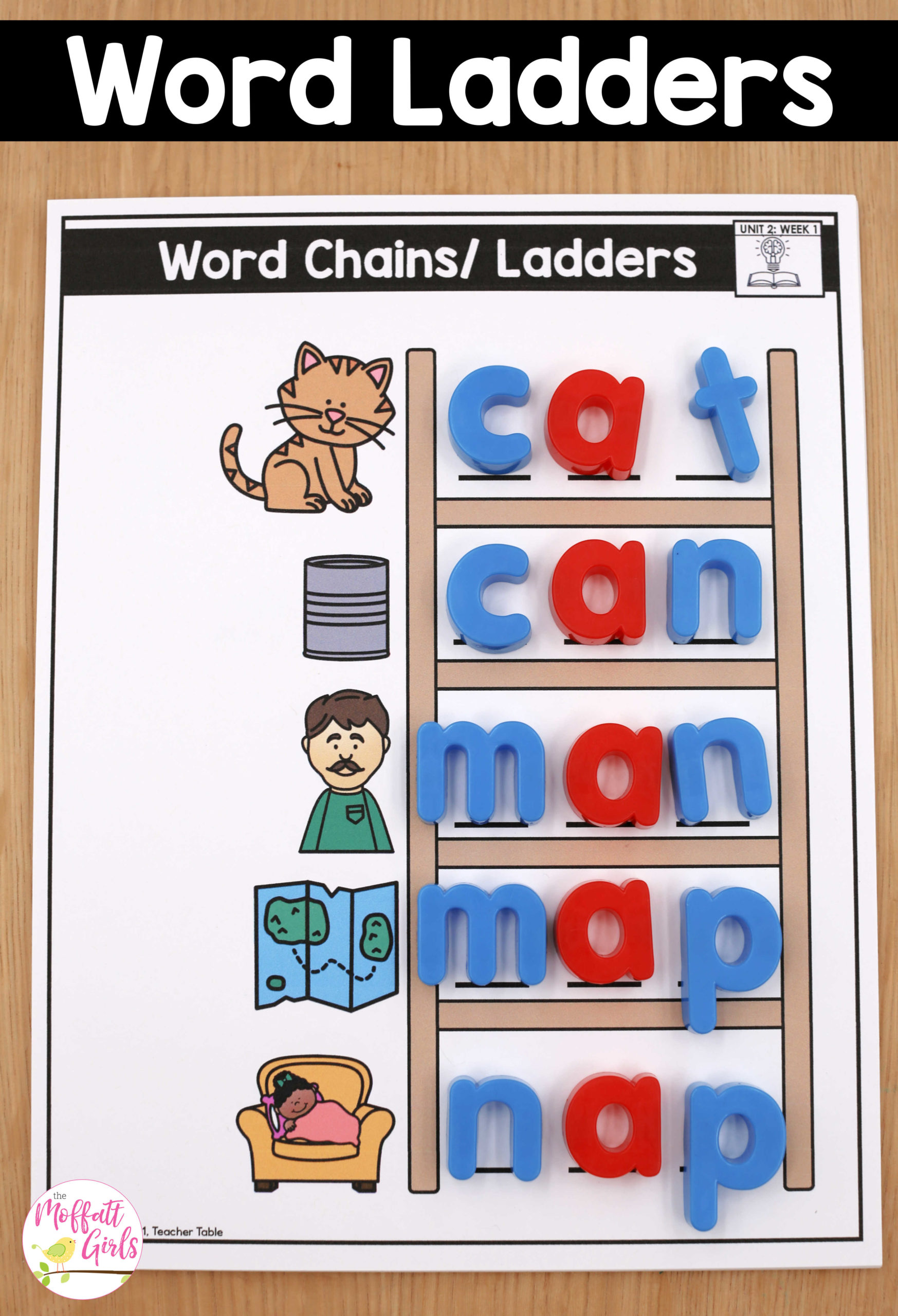Pathway to Fluency: Unit 2
Unit 2 of Pathway to Fluency is here, and it’s packed! Unit 2 is where you really start seeing all of the hard work of teaching phonological awareness, letter sounds and heart word practice pay off! Students can begin taking the basic phonics skills practiced in Unit 1 to start decoding and encoding CVC (Consonant, Vowel, Consonant), simple double consonant, plural CVC, and CVCe words. This is a HUGE milestone for many beginning readers. Therefore, it’s one of my favorites!
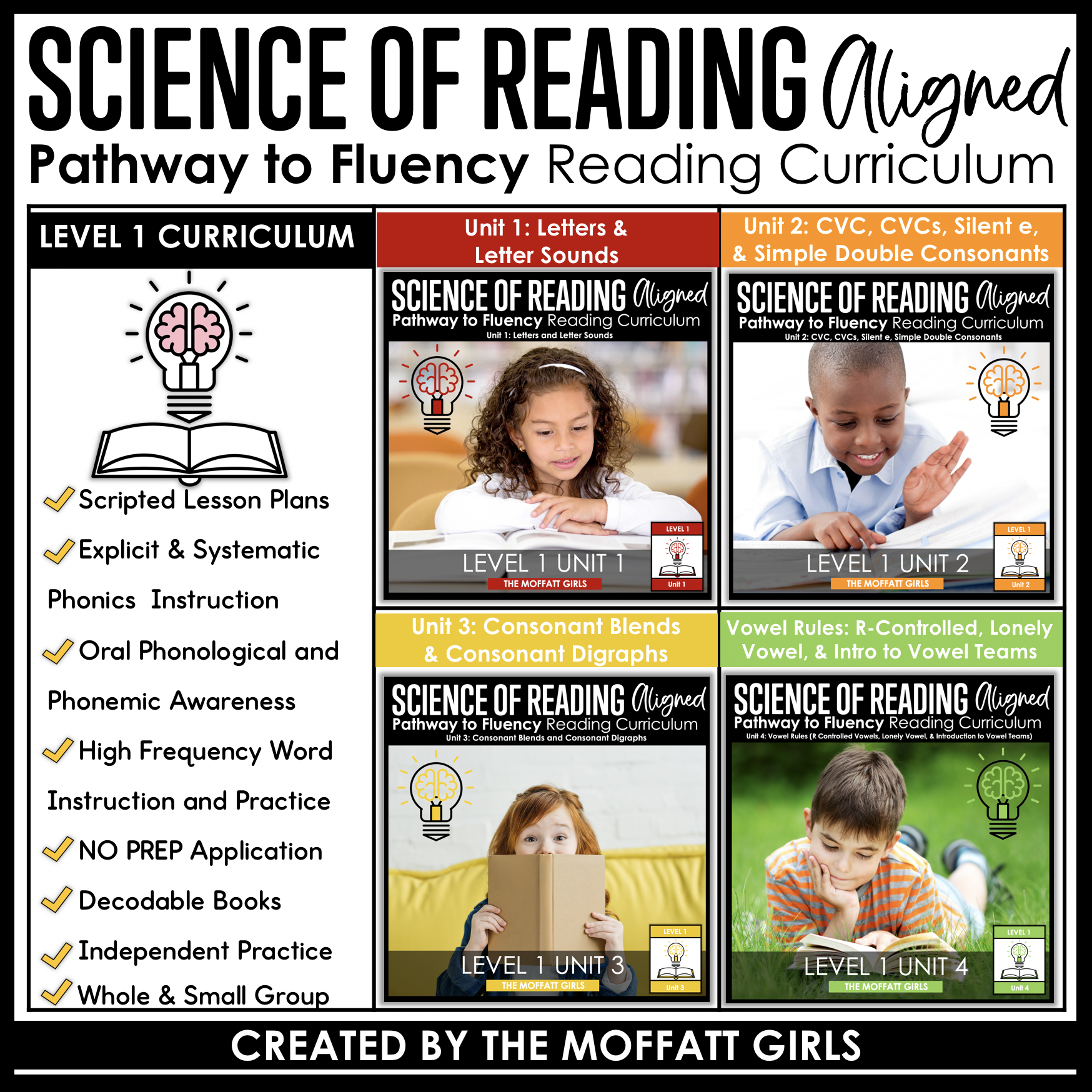
If you are unfamiliar with this reading program, I’ll break it down for you. Pathway to Fluency is a complete and comprehensive Science of Reading (SoR) Aligned Curriculum! Simply stated, it has everything you need for your whole-group, small-group and one-on-one reading instruction. Furthermore, Pathway to Fluency has been developed to teach everything from phonological awareness to fluency and spelling in a systematic way using methods that have been proven to be effective.
In the blog post for Pathway to Fluency Unit 1, I offered an explanation of what Science of Reading is and why it is vitally important when teaching children how to read. The Unit 1 blog post also includes an outline of the scope and sequence of the Pathway to Fluency Curriculum. To read the Unit 1 blog post, Click Here.
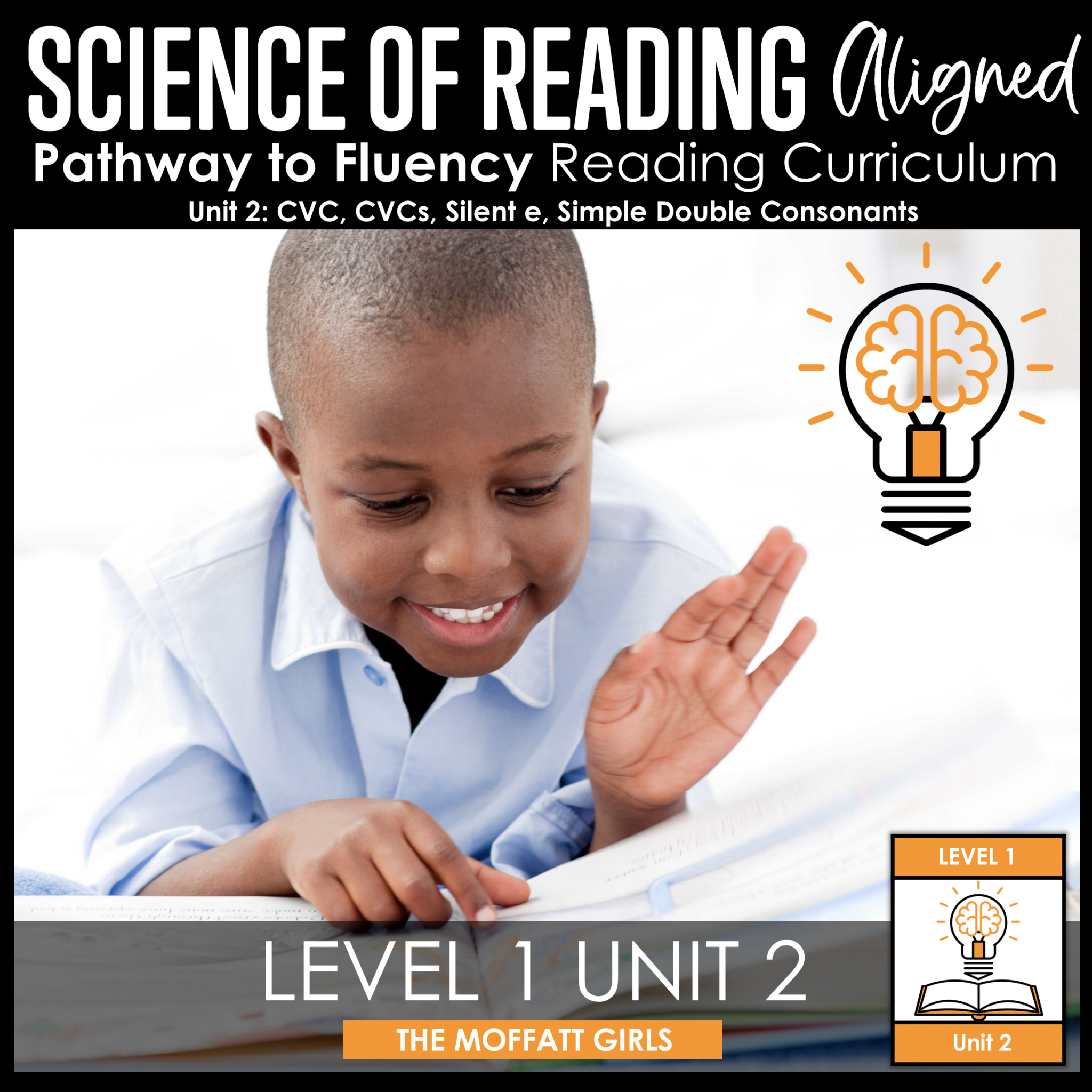
What’s included in Pathway to Fluency Unit 2?
Start Here File
I have included the Start Here file to give you an introduction to Pathway to Fluency Unit 2. It also provides a brief overview of what the term science of reading means and how to implement best practices in your classroom using the Pathway to Fluency Curriculum. I encourage you to refer to this file as you teach through Unit 2 for helpful reminders.
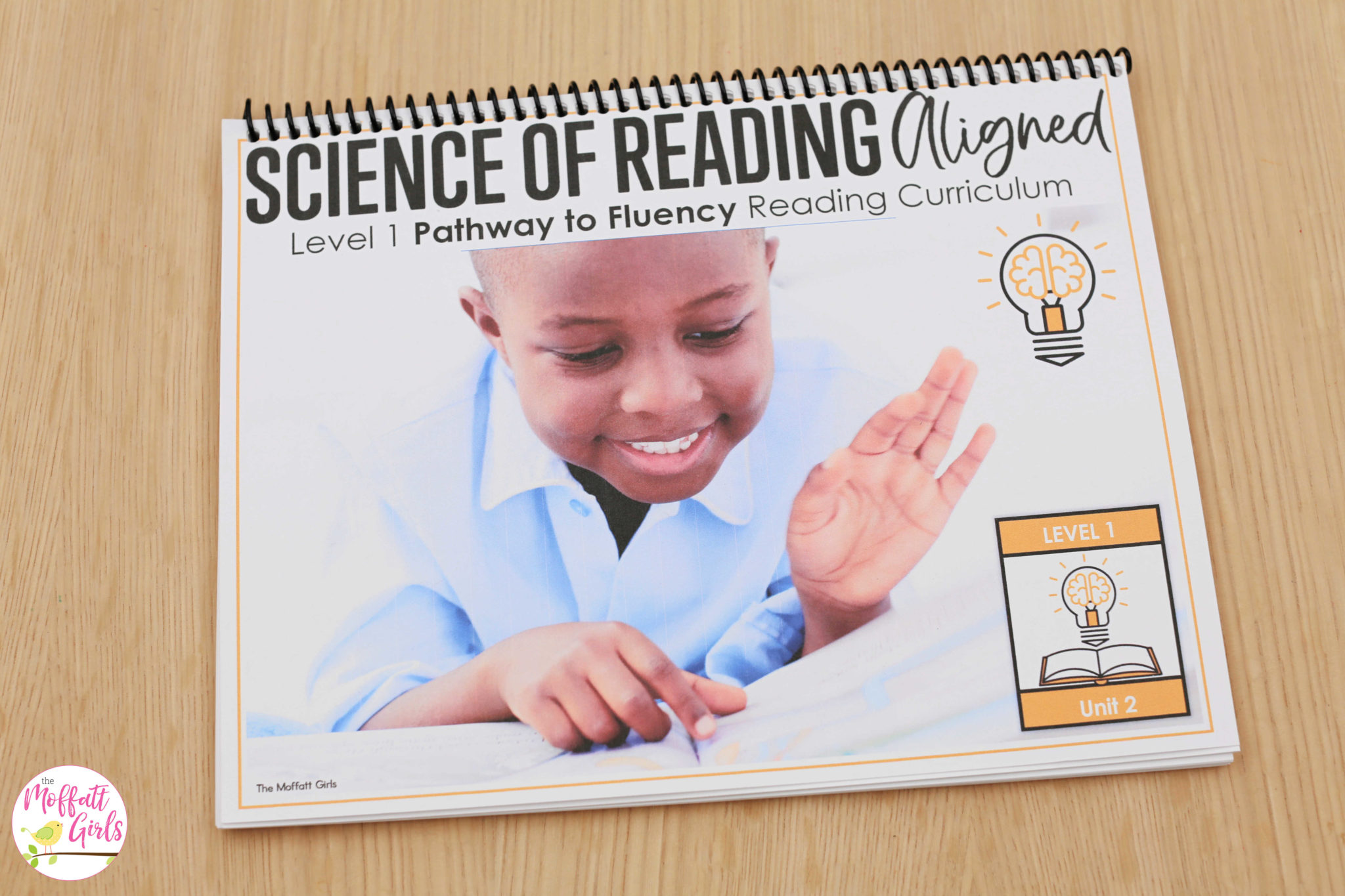
Folder #1: Lesson Plans and Assessments
Unit 1 includes 9 weeks of instruction with lesson plans for whole group lessons and small group center practice. These easy-to-follow lesson plans provide a structured approach to help you introduce, practice and apply the Pathway to Fluency materials and concepts in your classroom. More specifically, each lesson is broken down into 4 categories: Oral Phonological & Phonemic Awareness, Phonics, High Frequency Words, and Application & Independent Practice. The first three categories are done in a whole-group setting, while the Application & Independent Practice is done in small-group centers.
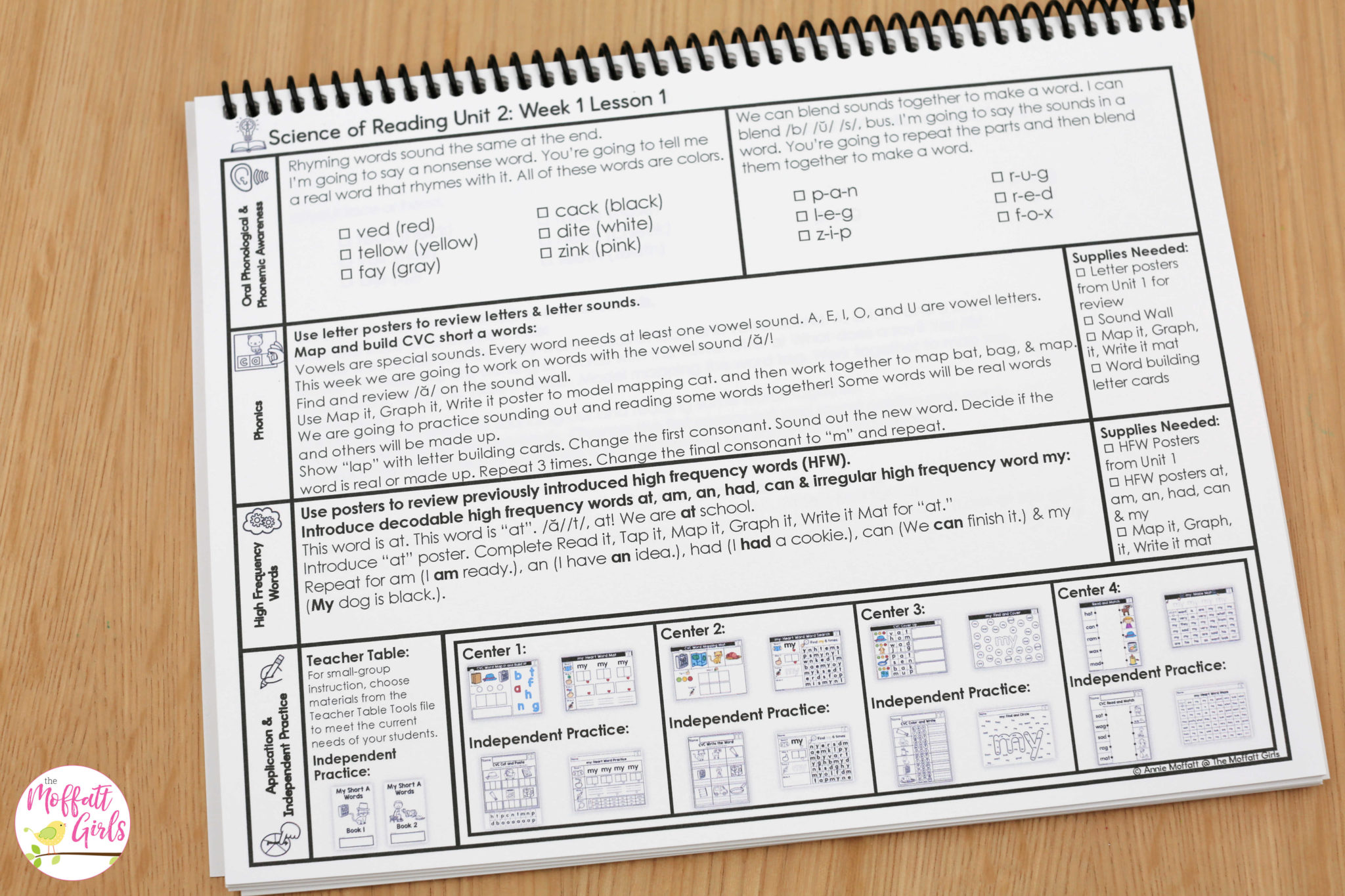
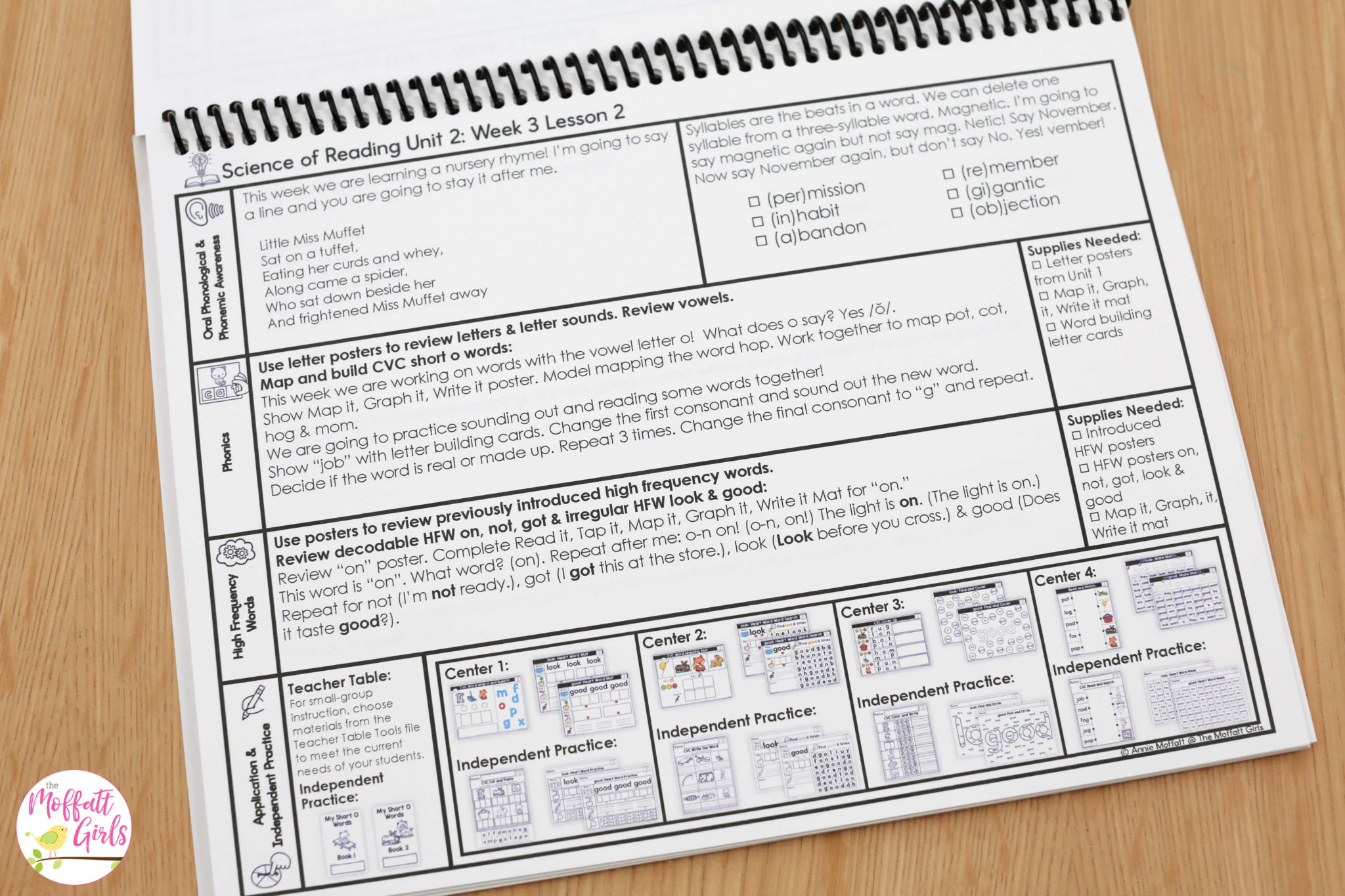
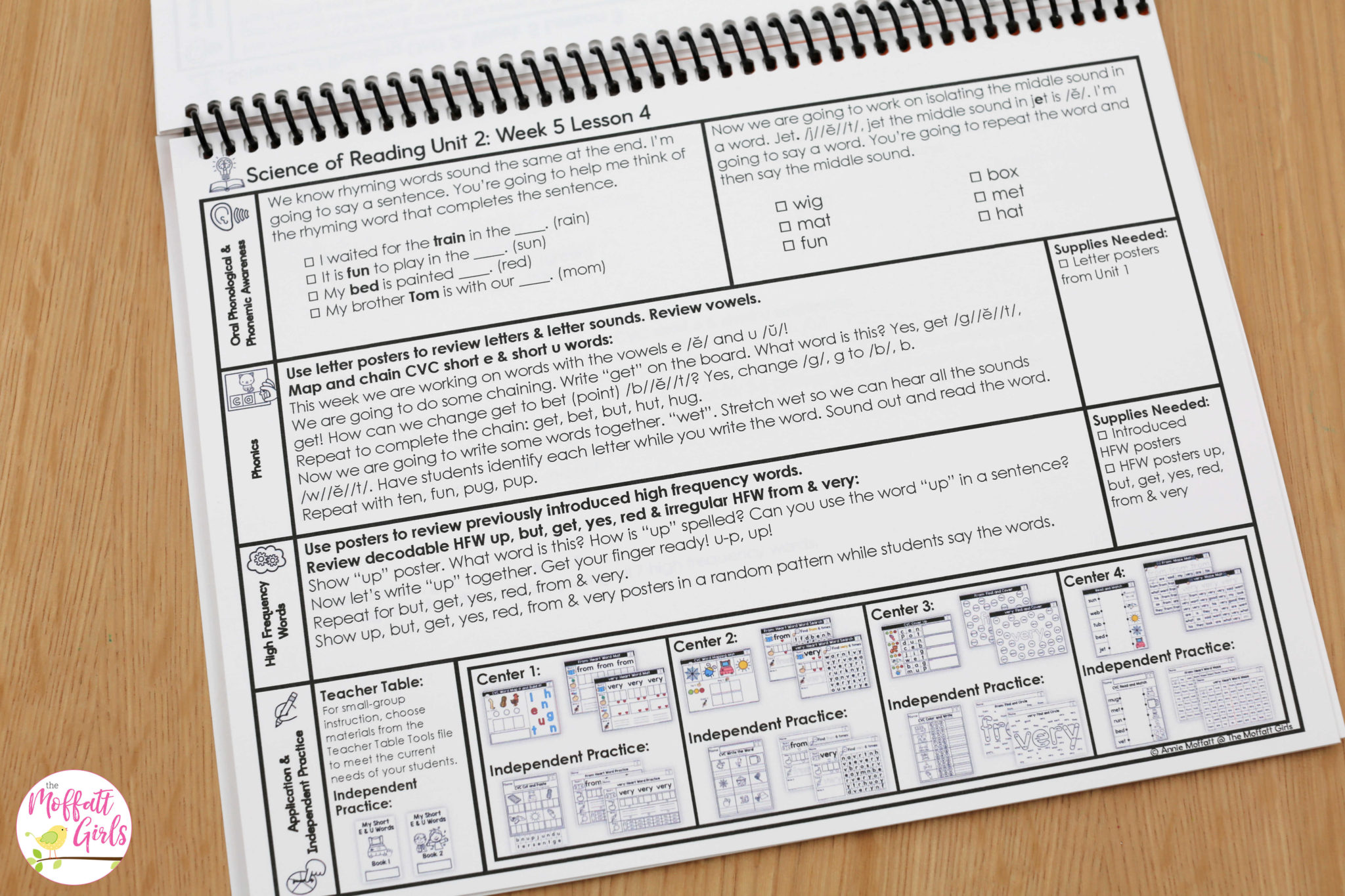
Each unit also includes a mid-assessment and post-assessment to help you gauge your students’ progress and to help drive instruction. The Unit 2 Assessments check for understanding in phonological and phonemic awareness, letter name and sound identification, and reading high frequency words (heart words). These assessments are quick and easy to administer one-on-one.
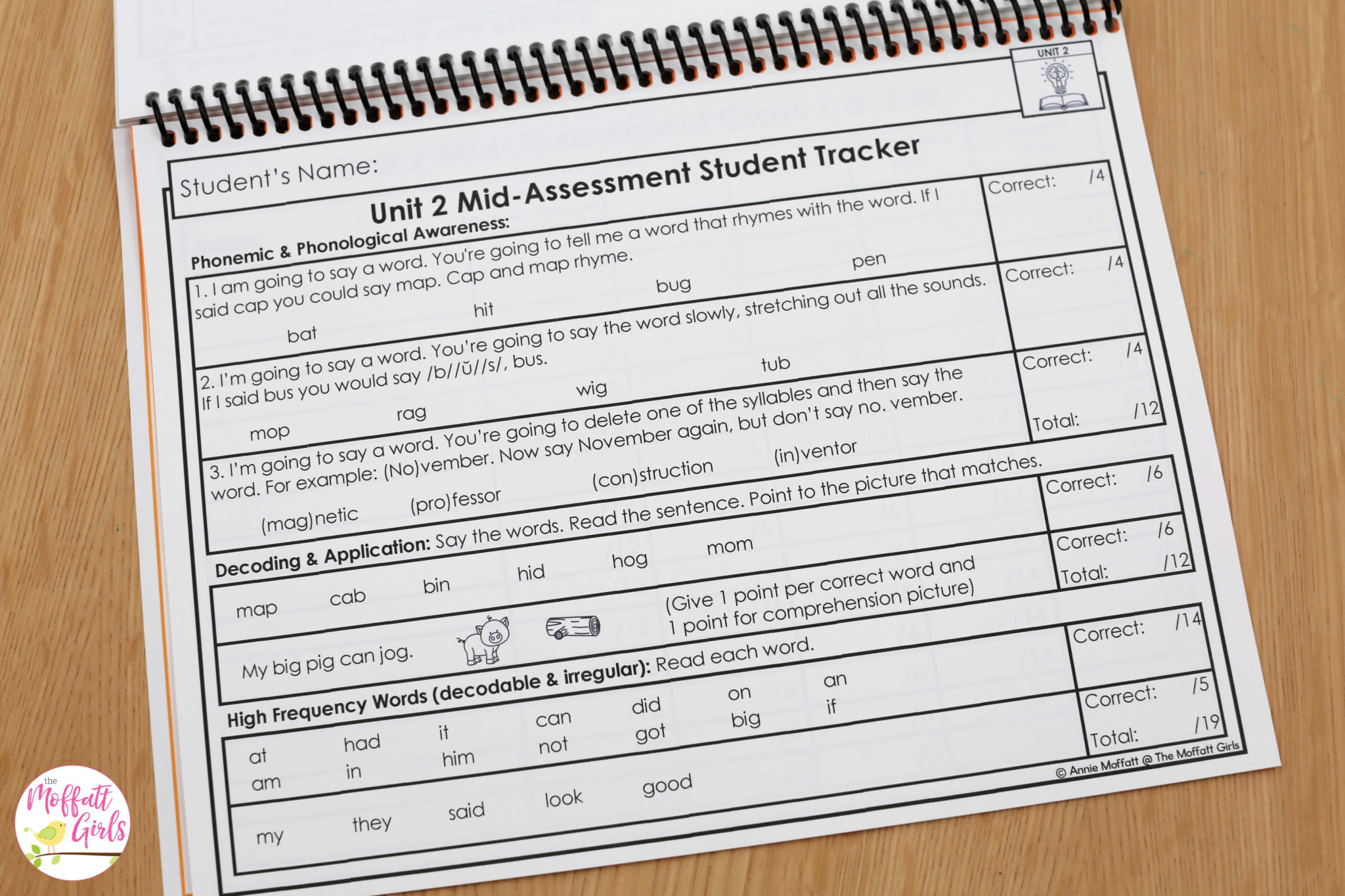
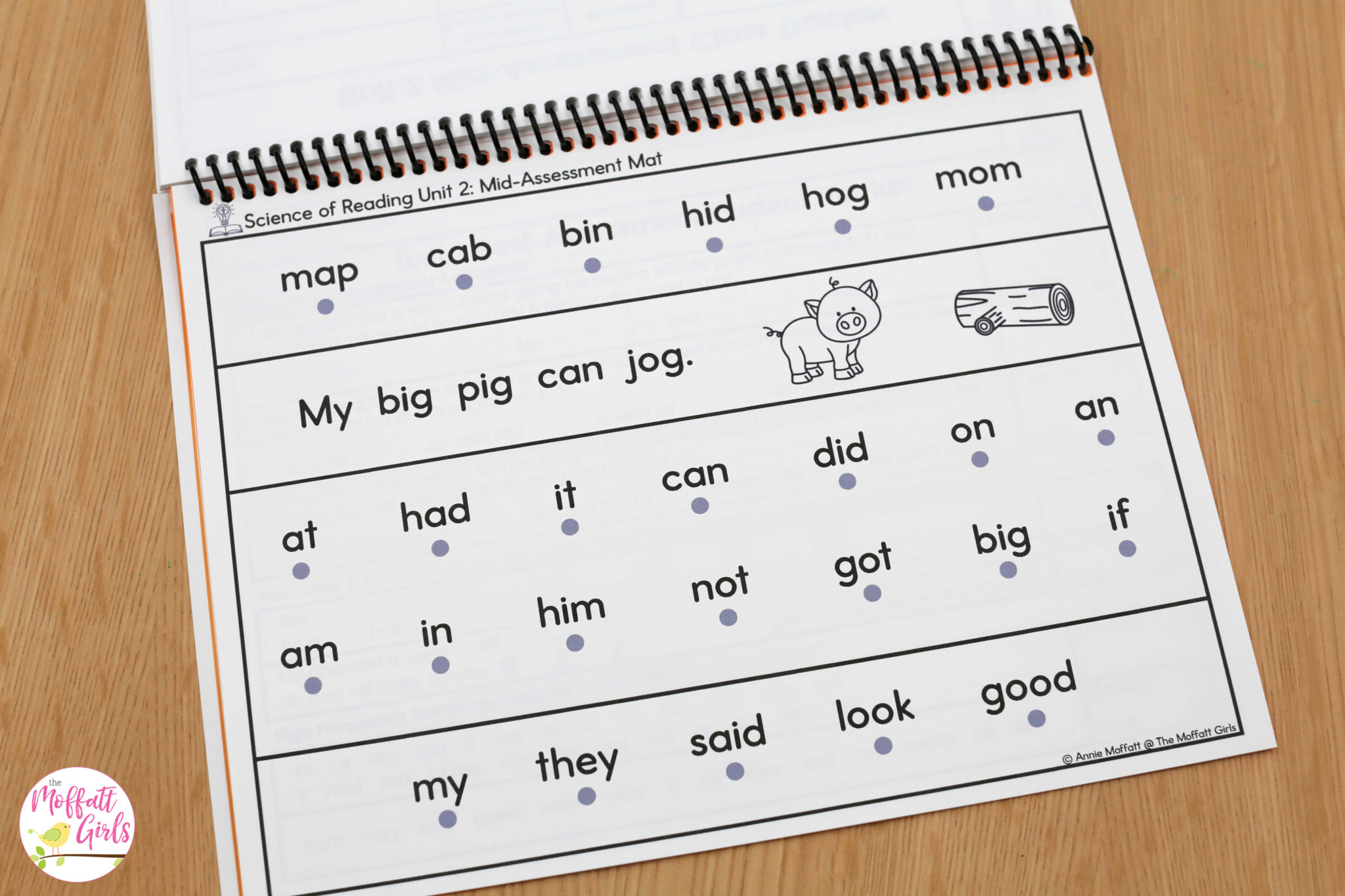
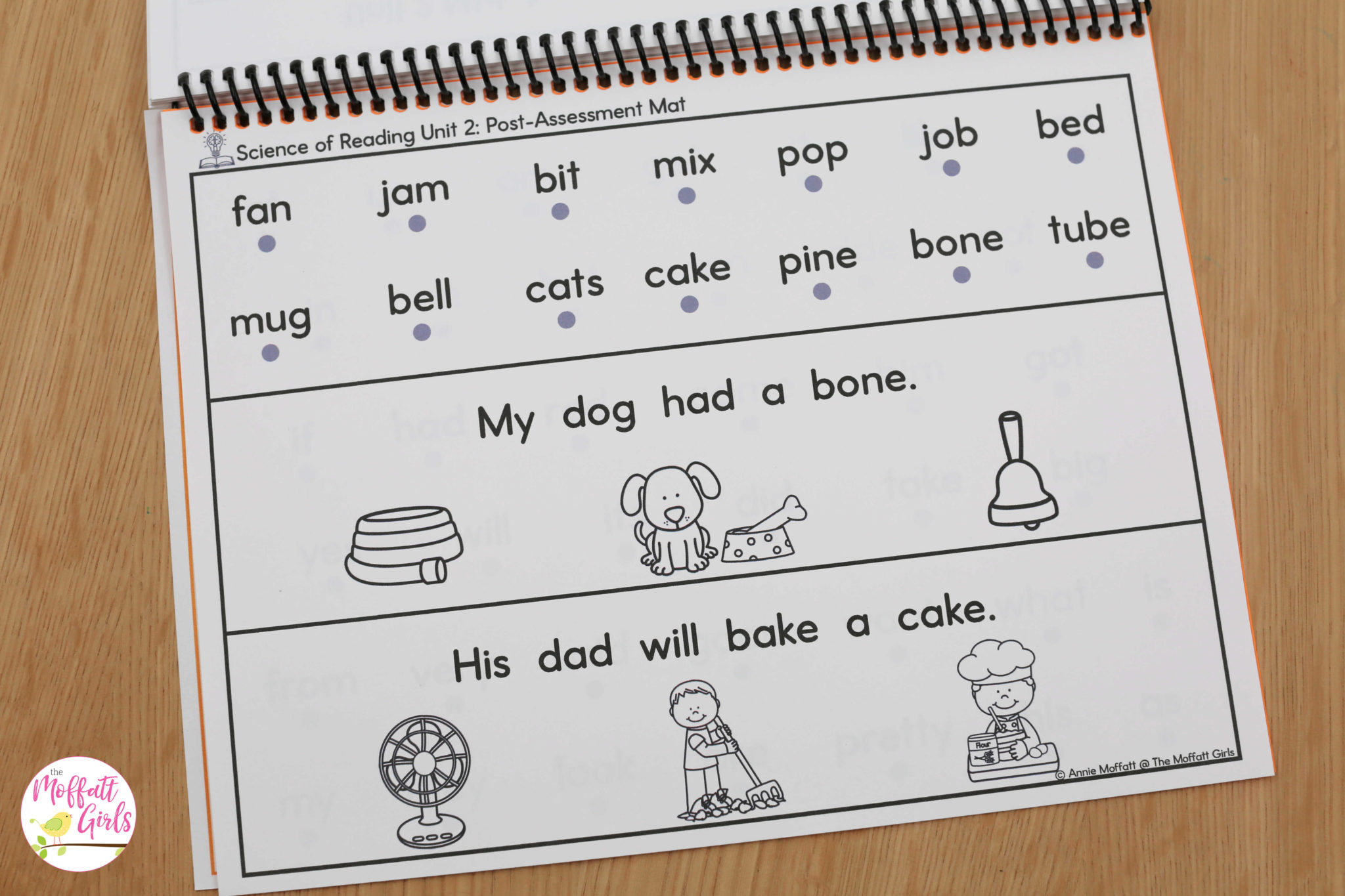
Folder #2: Whole Group Resources
This folder has all of the cards and posters that you will need to support the whole-group instruction. More specifically, the files include sound wall cards, letter formation and letter sound posters, and high frequency word posters. These visual aids can be displayed on a classroom wall for easy reference as students are working on the centers.
Sound Wall Cards
The sound wall cards can be used to form the Vowel Valley and Consonant Sounds charts. There are a total of 44 sound (phoneme) cards to help introduce each phoneme. Each card shows proper mouth formation, an example of the sound within a word, whether the sound is unvoiced or voiced, and the possible spelling combinations (graphemes) that can create the sound. You can choose use the locks to cover the graphemes that have not been introduced.
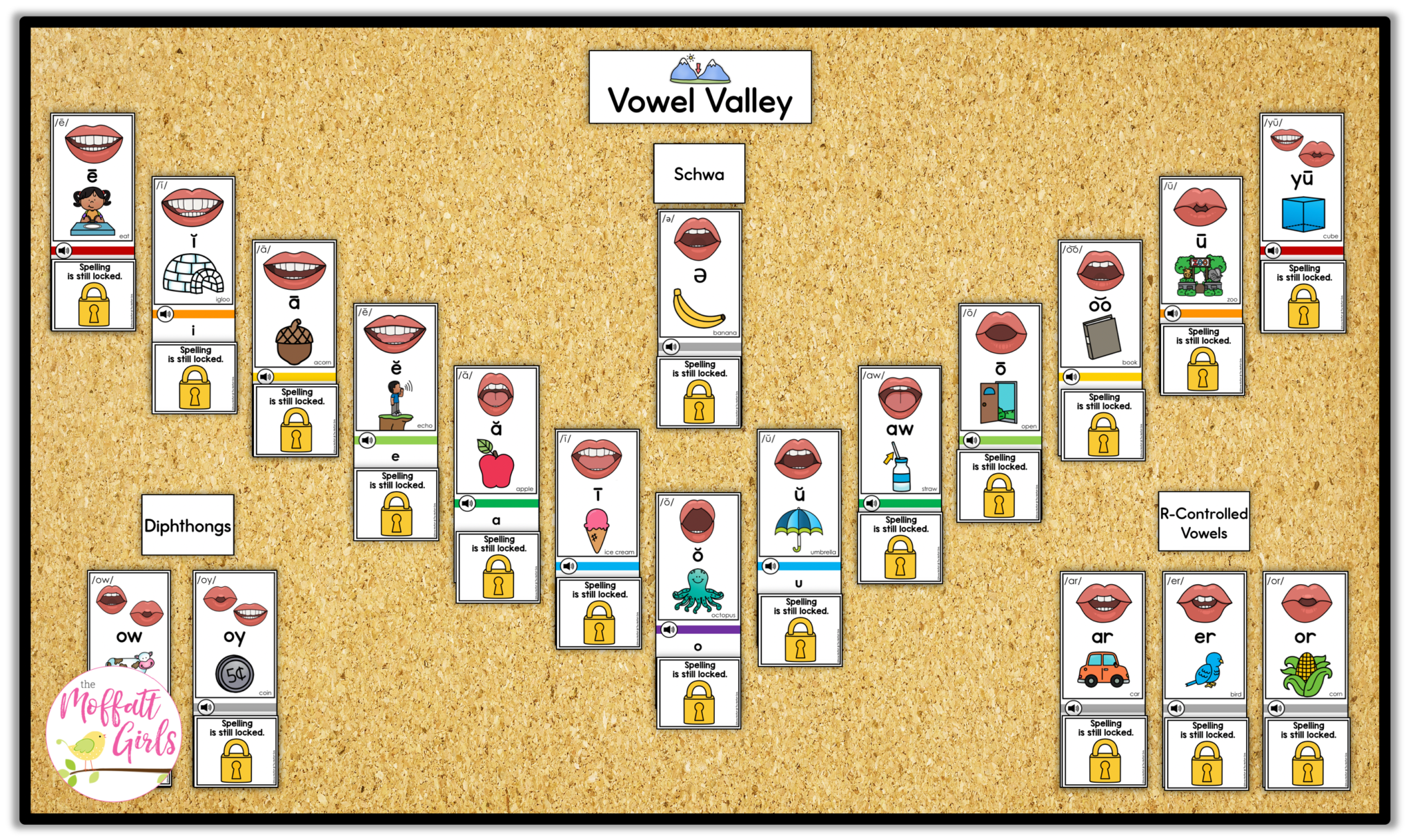
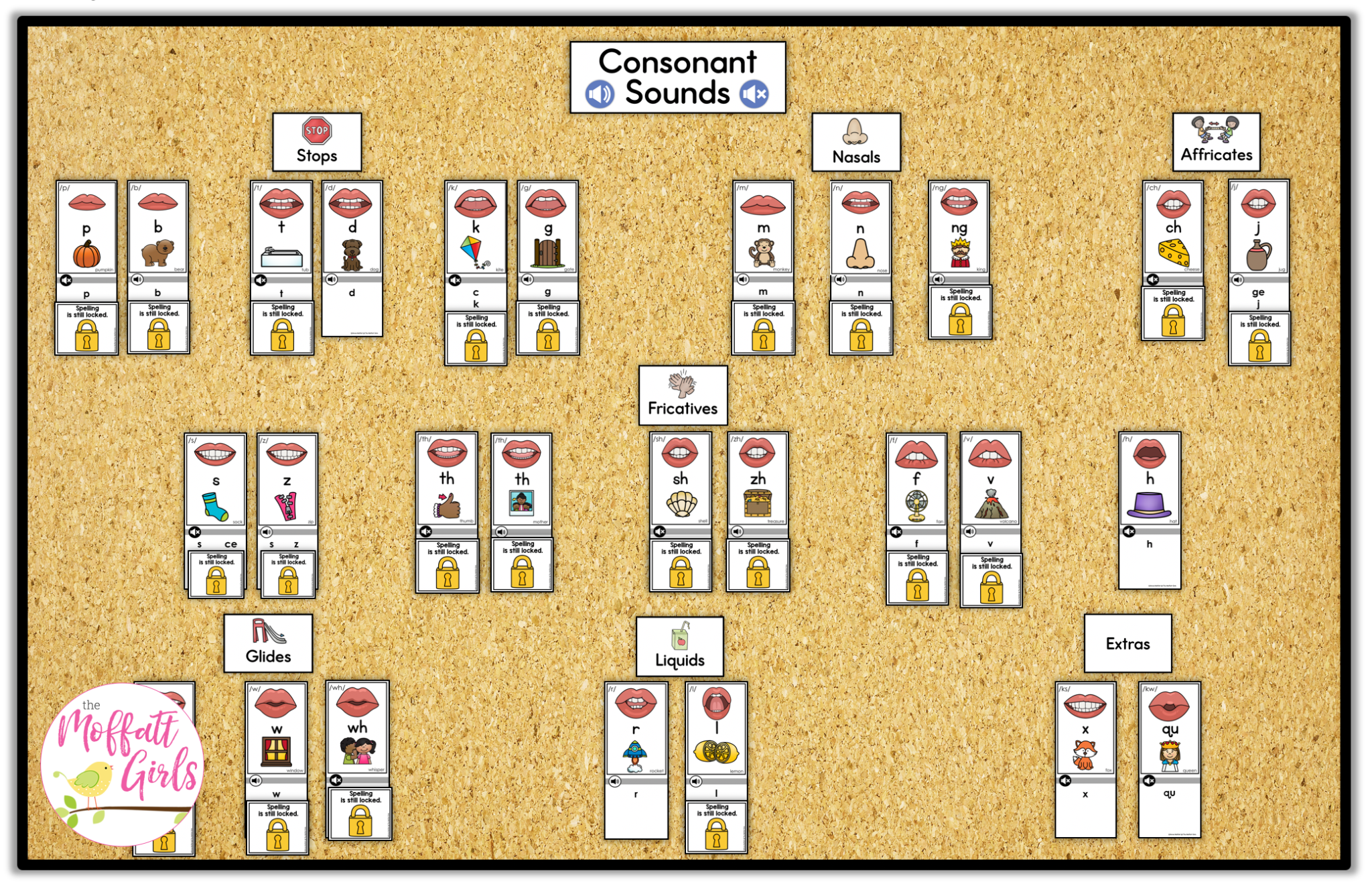
You can also choose to print and spiral bind the sound wall cards to use as an extra teacher table tool.
Word-Building Letter Cards
These cards can be used to review letter sounds and build to sound-out and read words. They can also be used for word chaining during a whole-group lesson. Below is an example of how word chaining works. Switch out one letter at a time to form a new word.
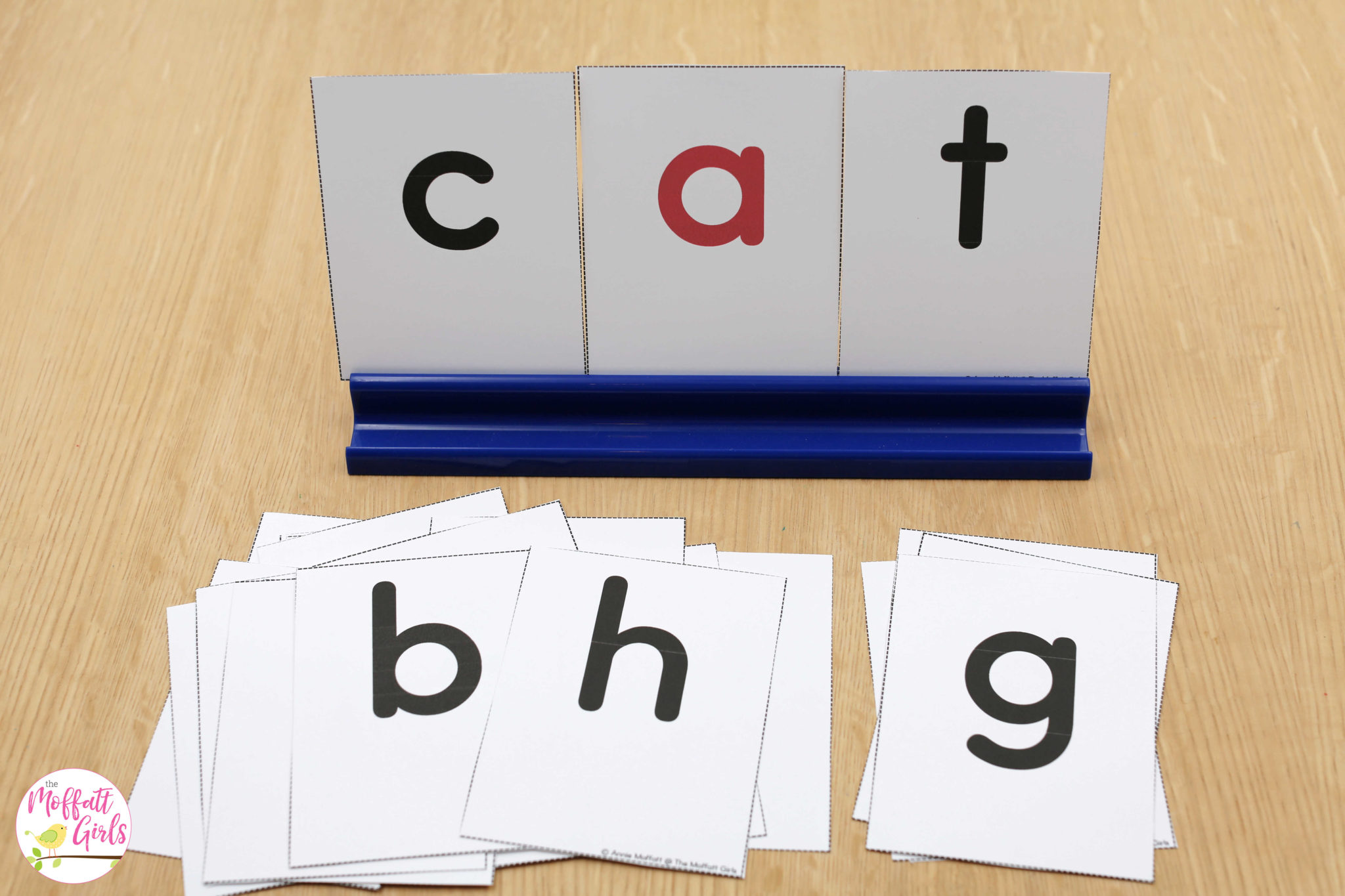
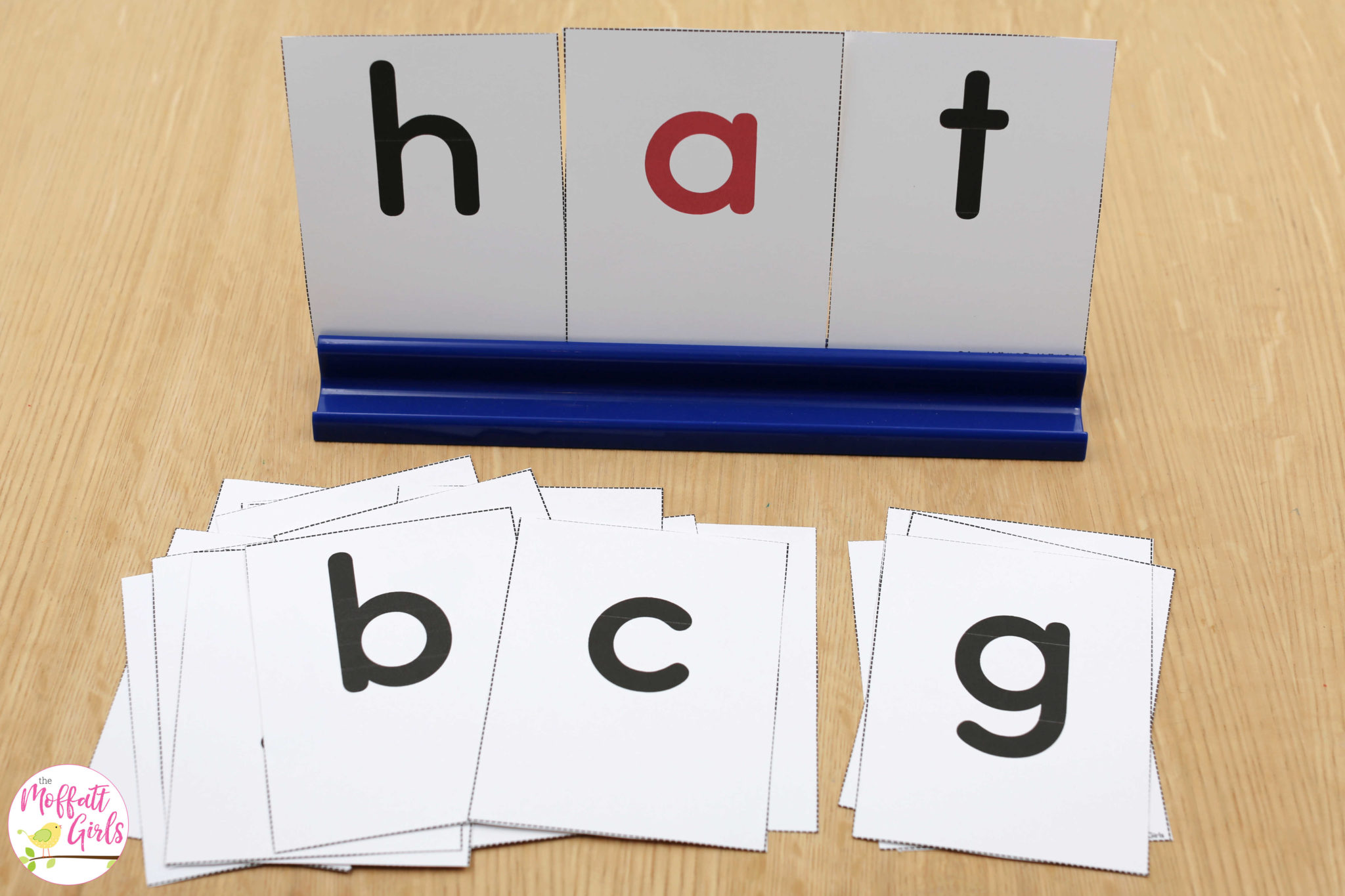
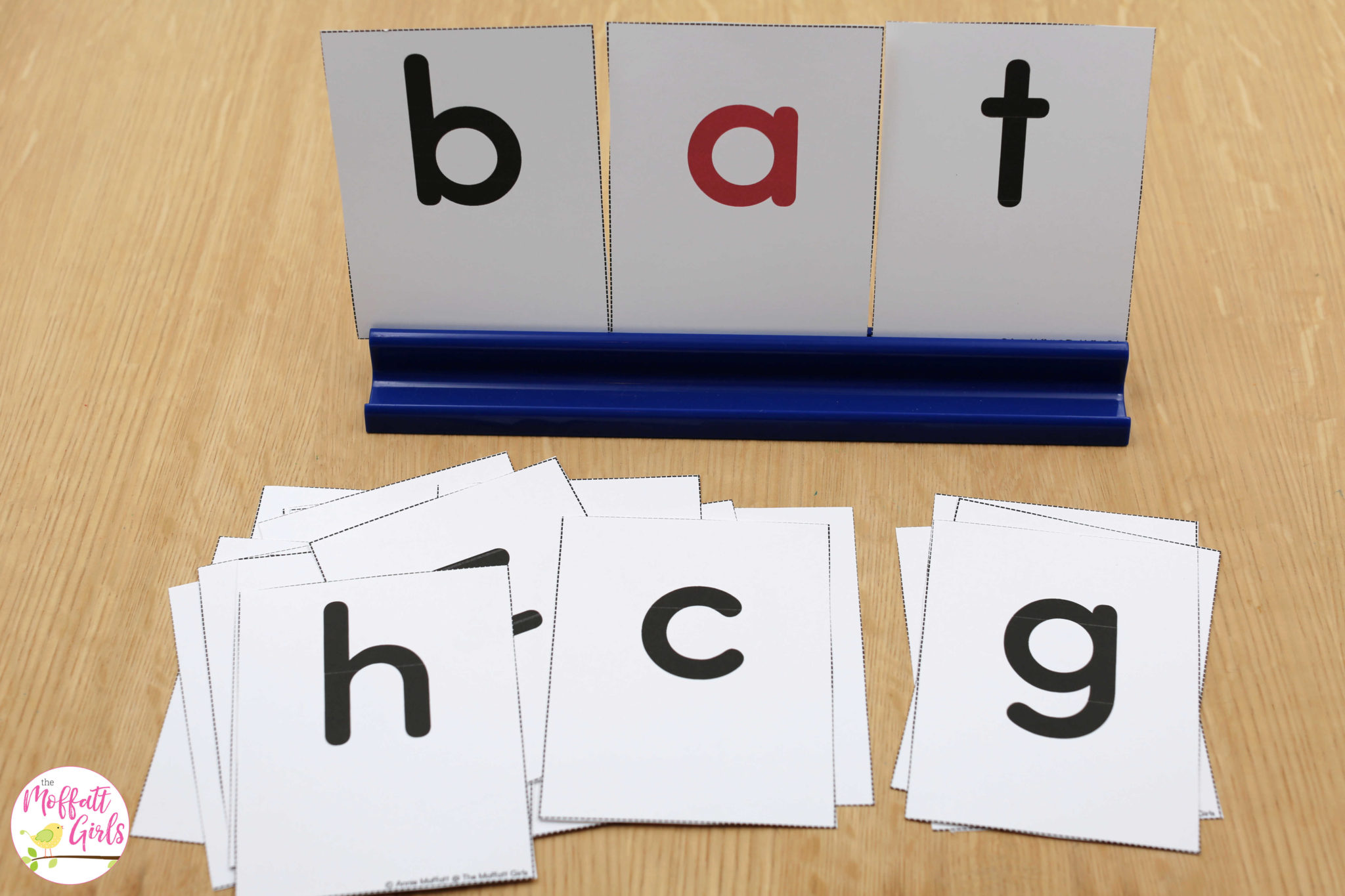
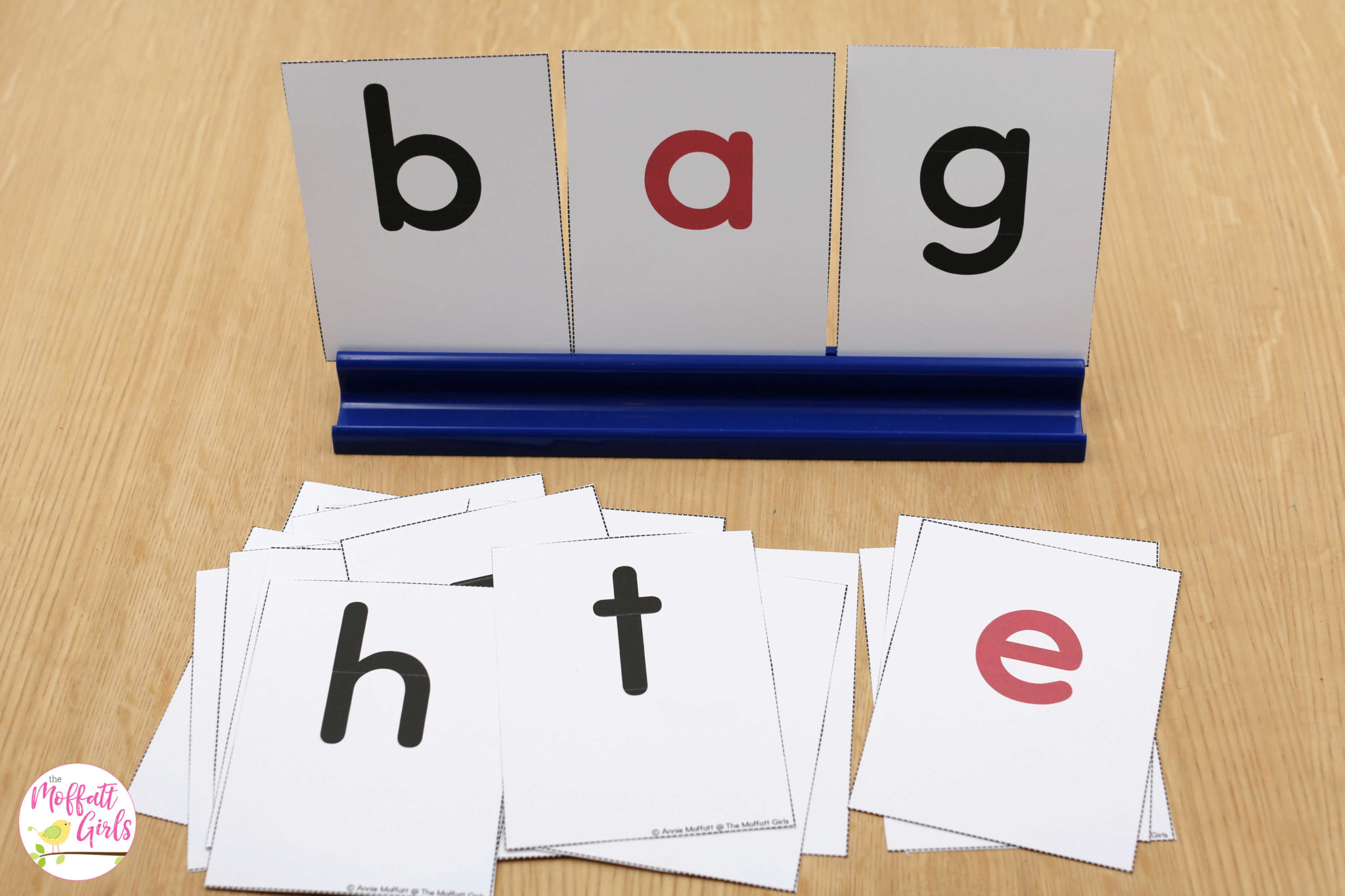
High Frequency Word Posters
These posters show the word, letter groupings, and hearts to represent irregularly pronounced letters within the word. In addition, the cues at the bottom should be said as you introduce the irregular letter groups.
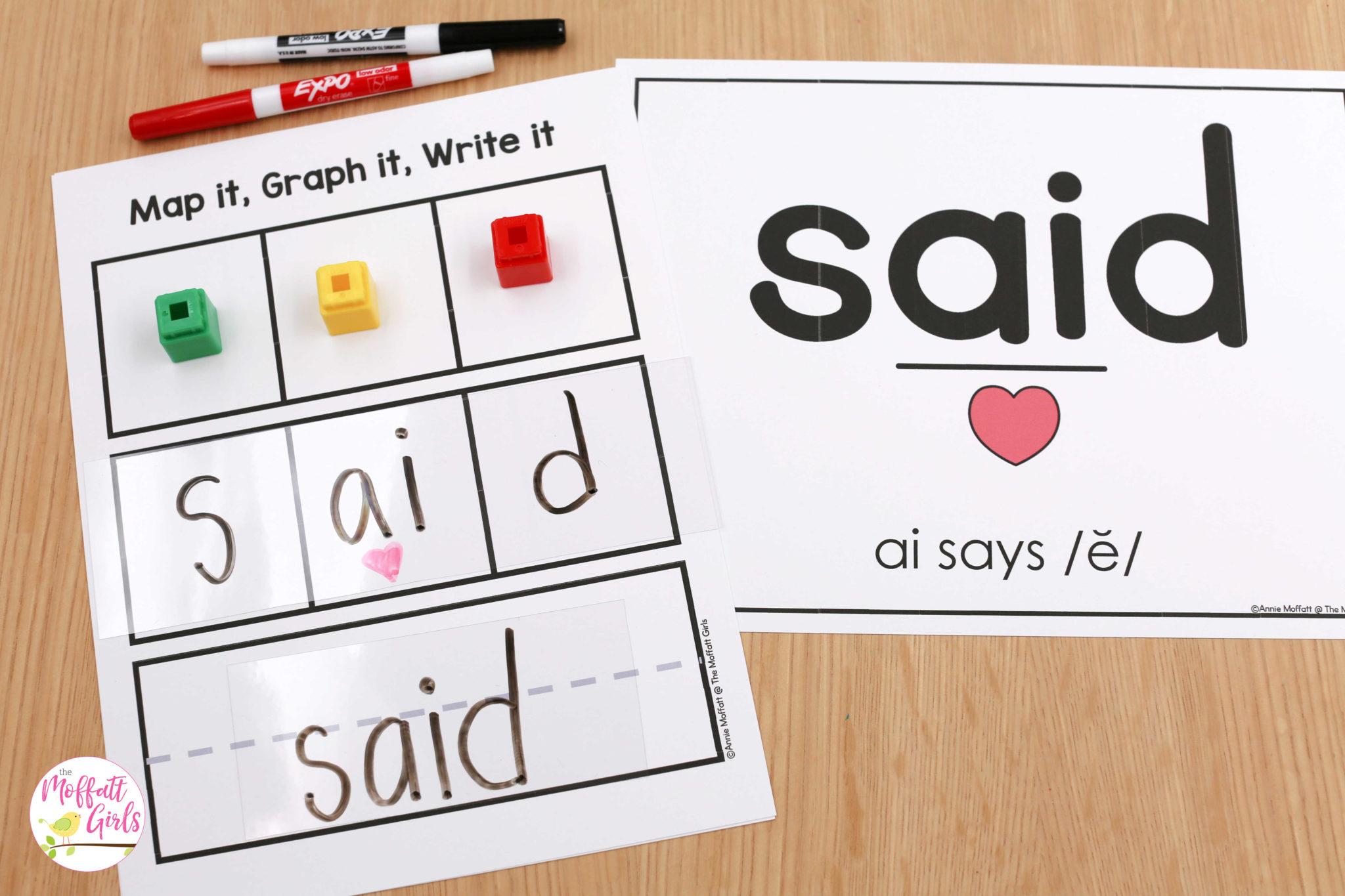
Folder #3: Center Activities
Each week includes 4 centers for small group practice. These no-prep centers provide a hands-on way for students to take what they have learned in the whole-group instruction and practice those skills in a smaller group. This practice helps them become more fluent readers.
There are a total of four centers each week. You may want to consider dividing your class in one of two ways depending on your classroom size and schedule:
- Five groups- Four groups will each be at one of the four centers. The fifth group will be meeting for small group instruction at the Teacher Table. Each group would meet with the teacher once a week.
- Four groups- Each group will be at one of the four centers. The teacher will pull one group at a time for small group instruction at the Teacher Table. This option allows for each group to meet with the teacher daily, but requires slightly larger group sizes.
Each center includes a phonics and a high frequency word activity, with additional practice pages that correspond to the activities. Also, each center activity comes with multiple versions of each for repeated practice. For consistency, the activities are the same from week to week.
Weeks 1-3 & 5-8: Introduction to Letter Sounds & High Frequency Words
Center 1 Phonics Activity: CVC Word Map it and Build it!
Students say the CVC word, tap and map the sounds in the word, build the word with magnet letters and write the word in the box.
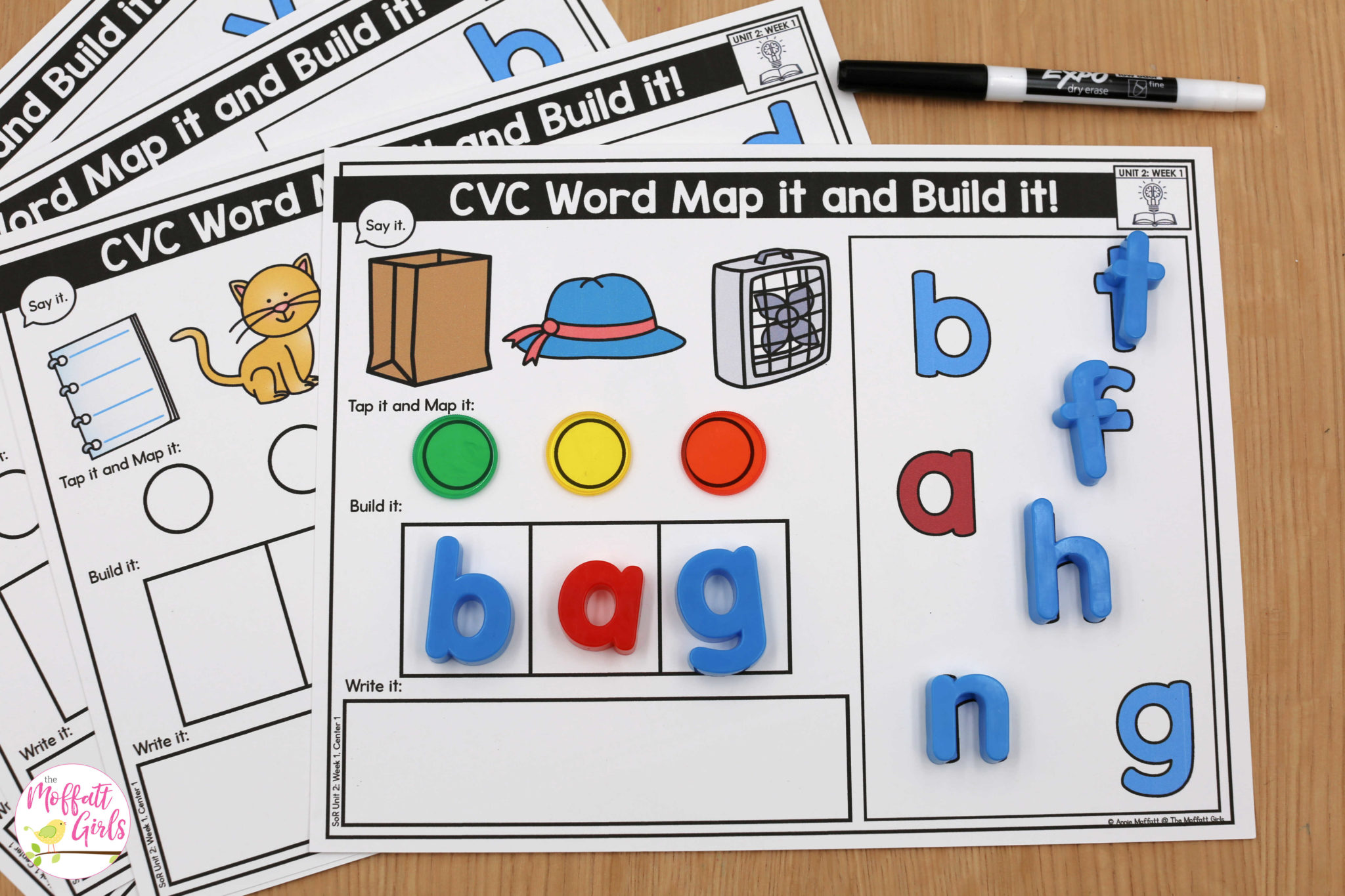
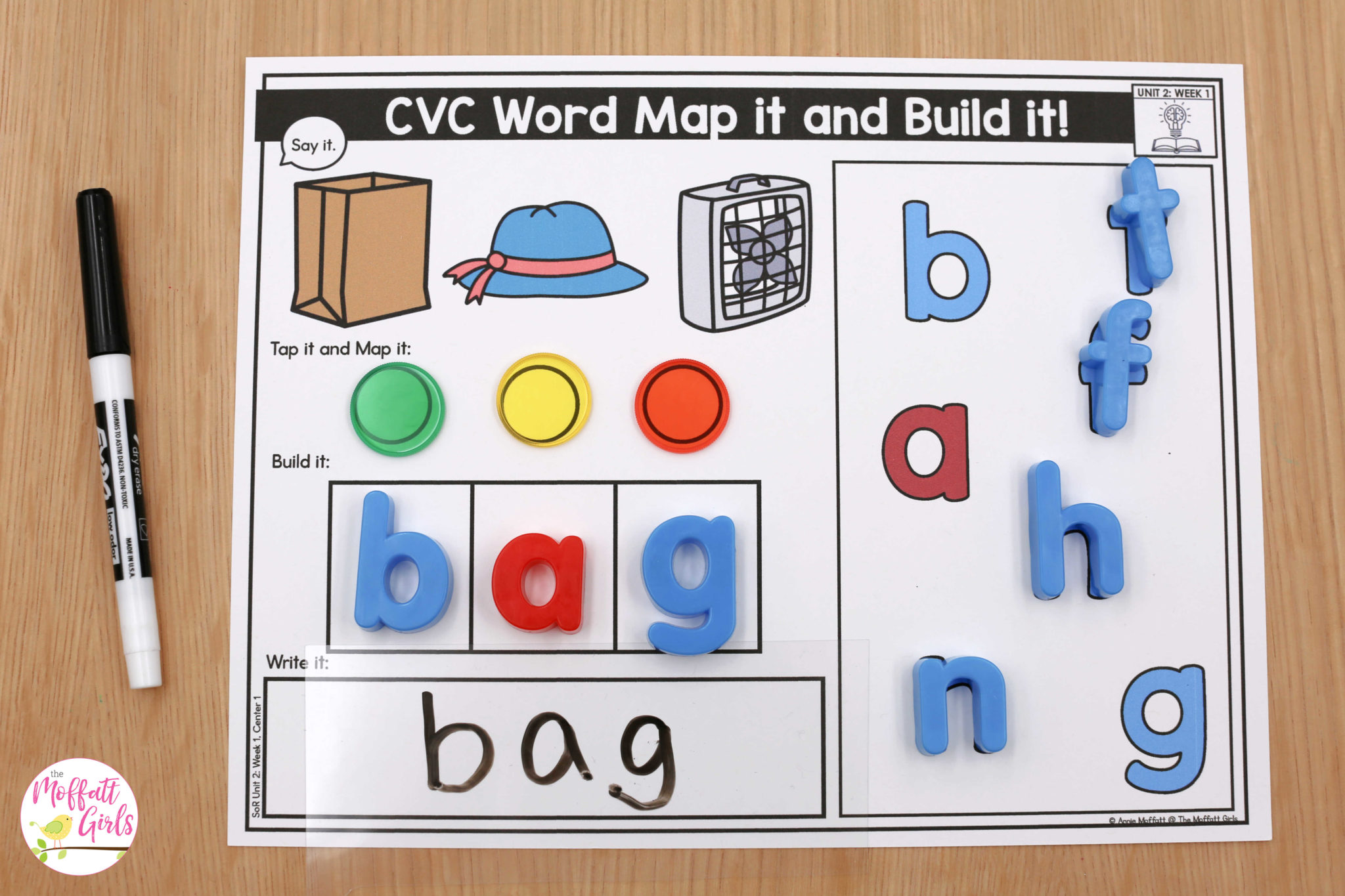
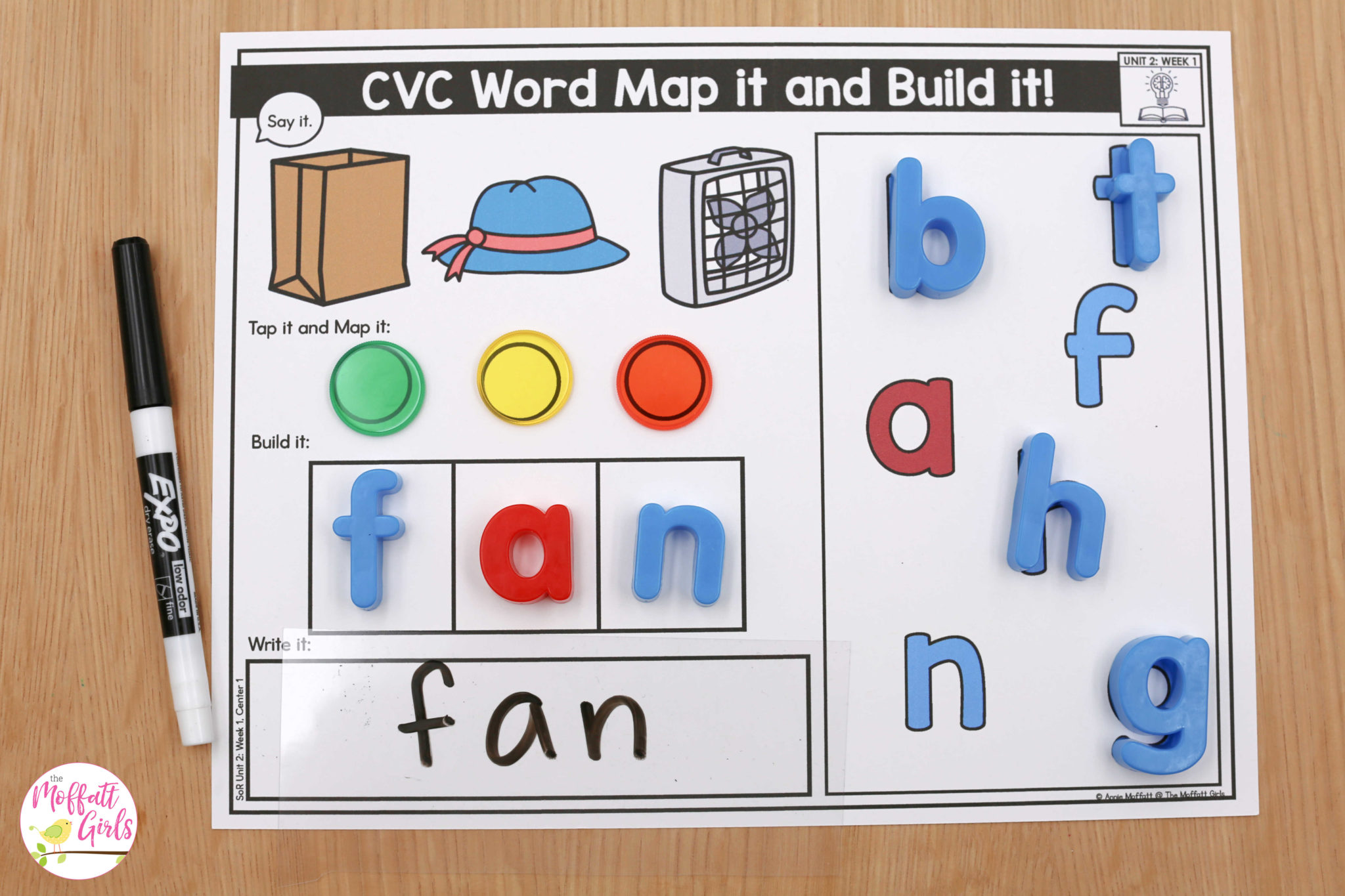
For the independent practice page, students cut and paste the letters to build the word.
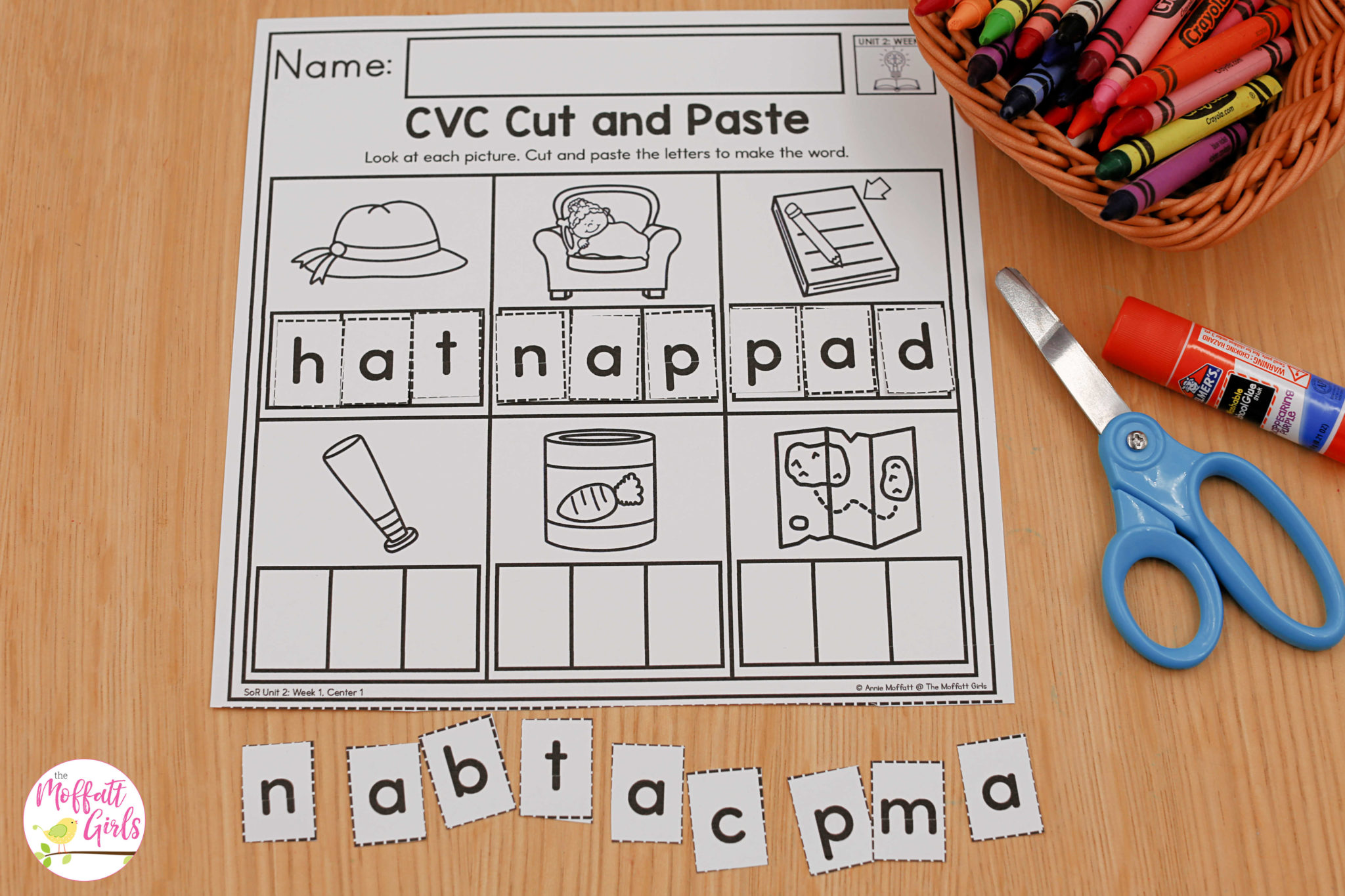
Center 1 High Frequency Words Activity: Heart Word Mats
Students practice reading, mapping, building and writing the high frequency word.
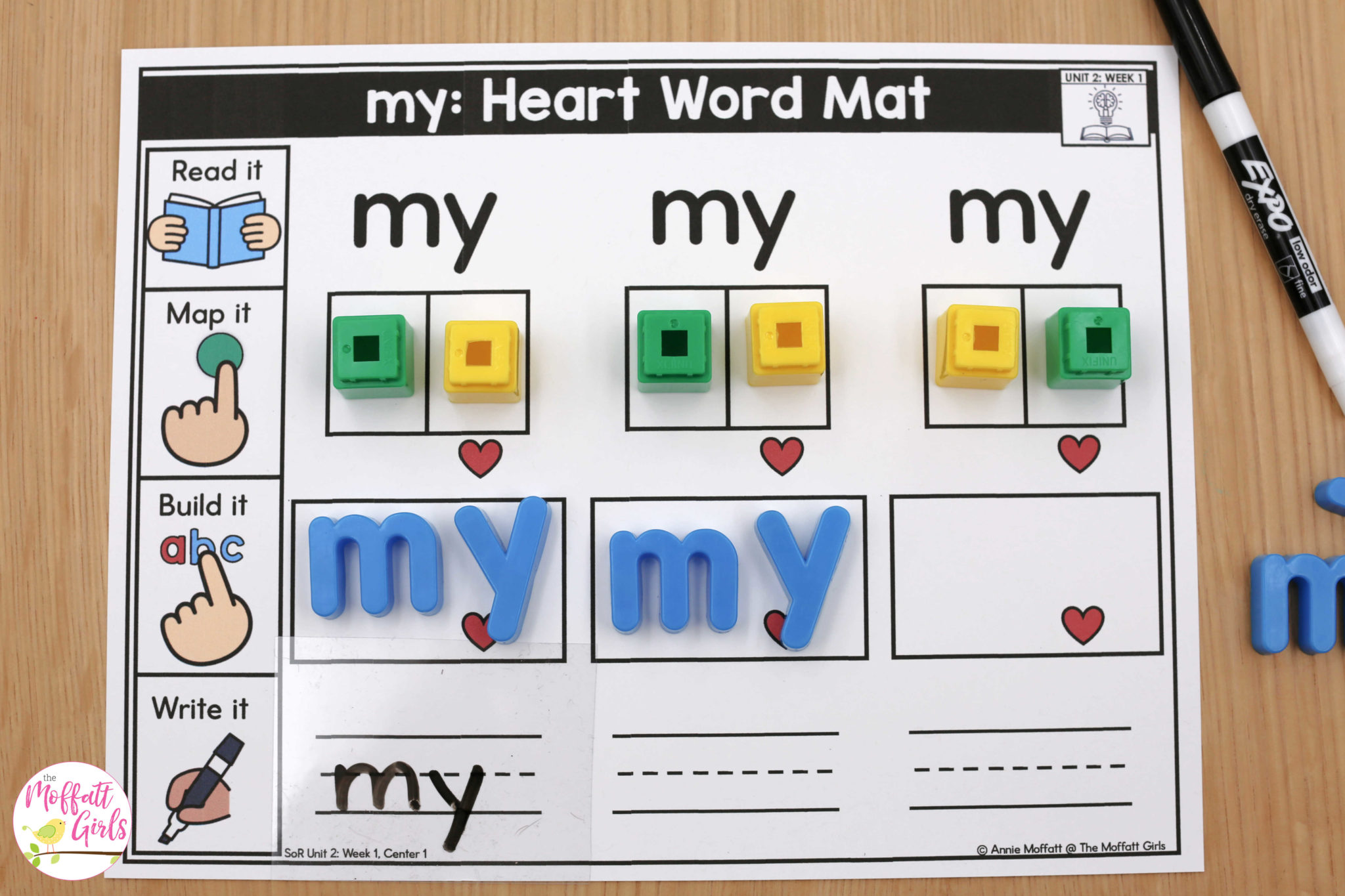
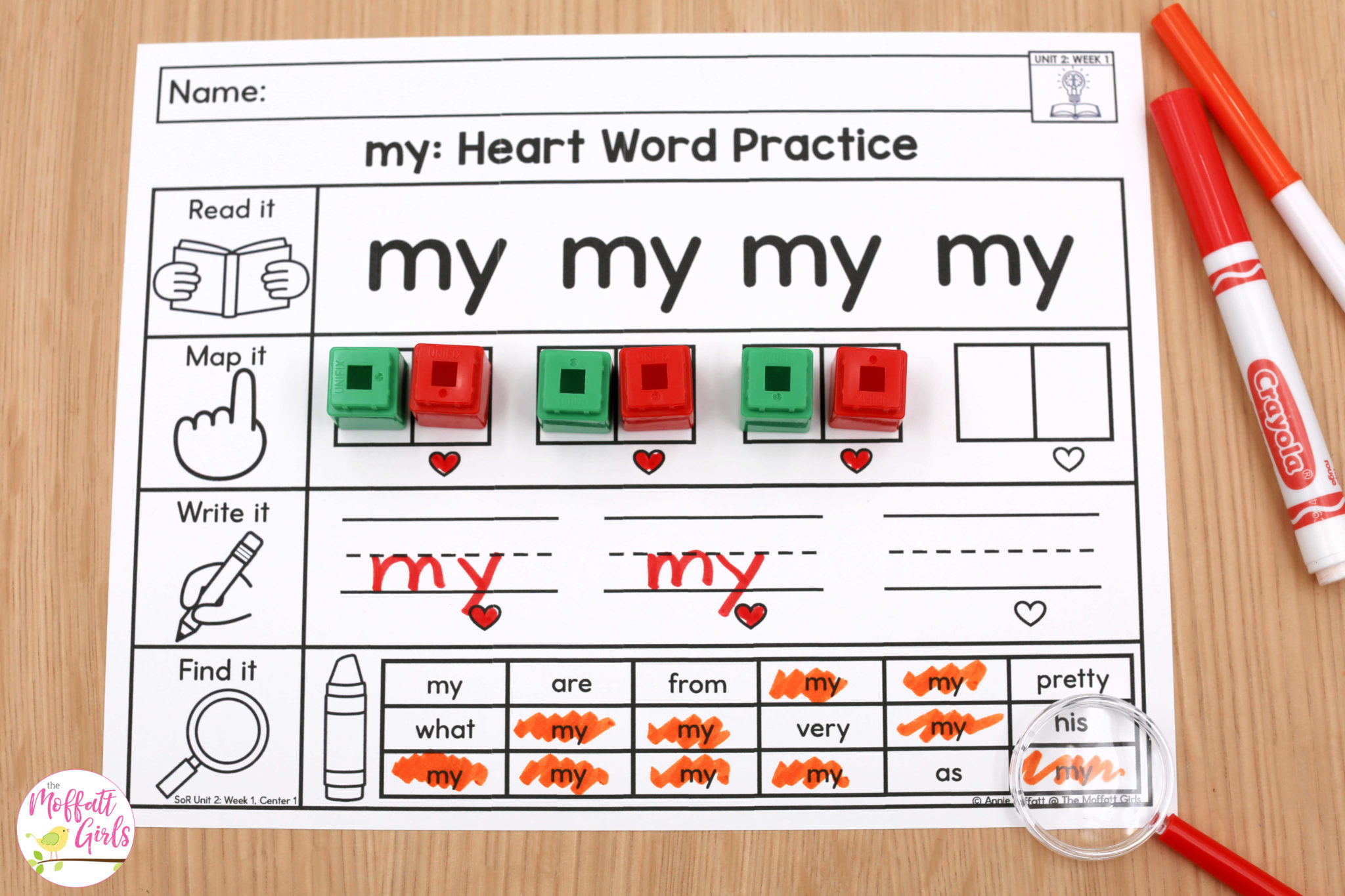
Center 2 Phonics Activity: CVC Word Mapping Mat
Students say the word, use manipulatives to map the sounds in the word and graph the letters for the sounds within the boxes.
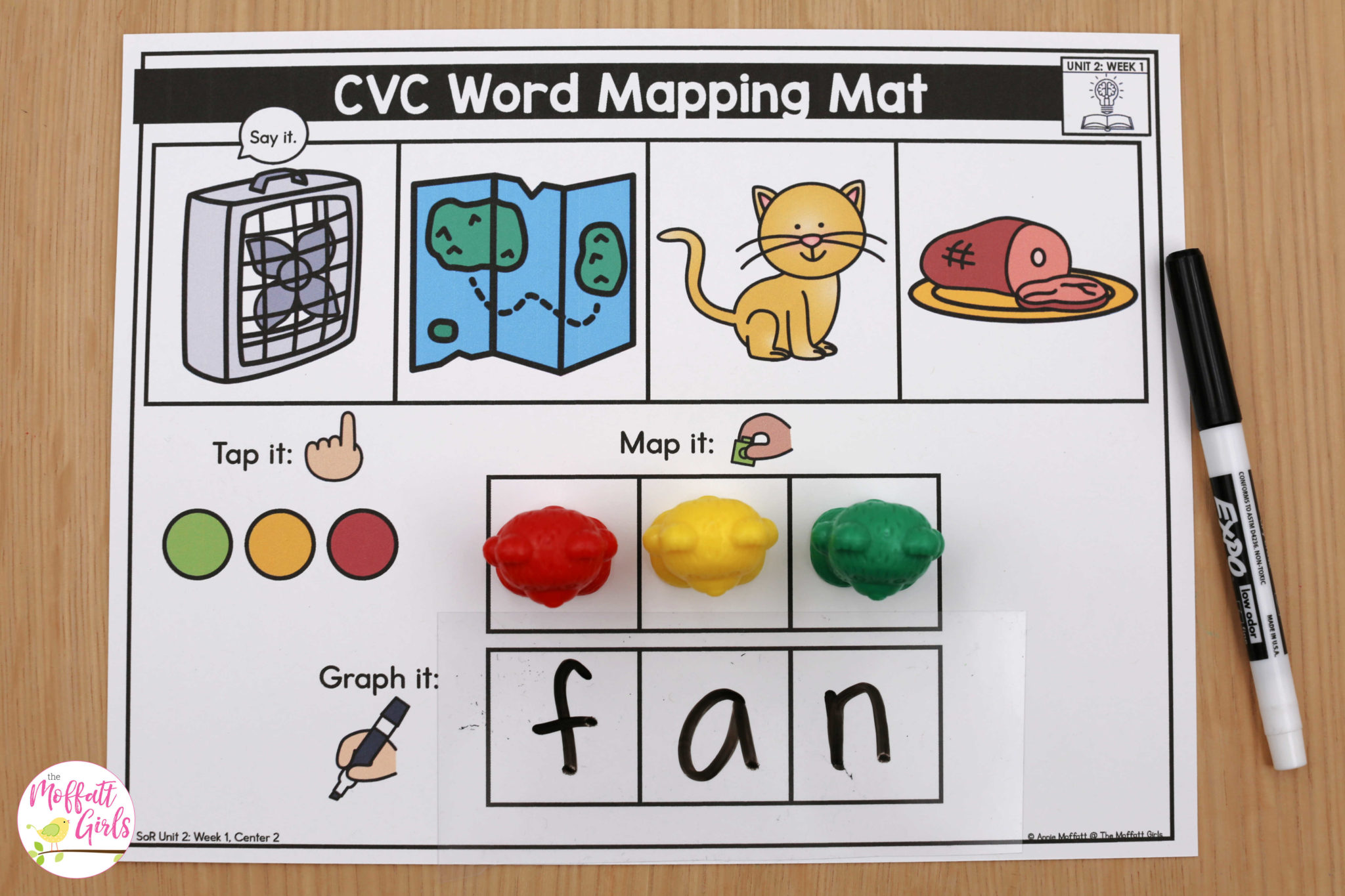
For the independent practice page, students sound out and write the CVC word on the lines.
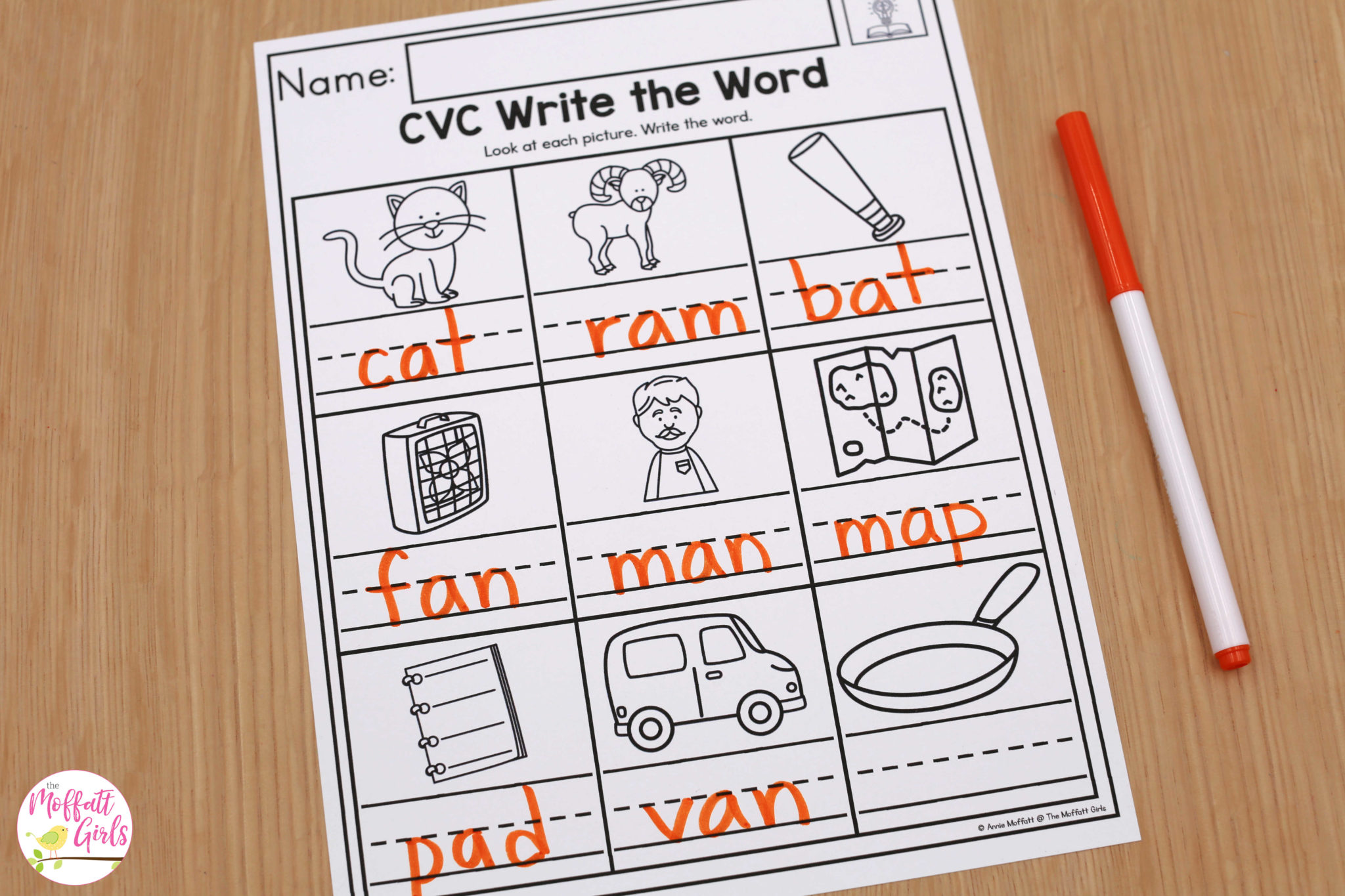
Center 2 High Frequency Words Activity: Heart Word Word Search
Students read, map, trace and write the word. Then they find the word 6 times in the word search.
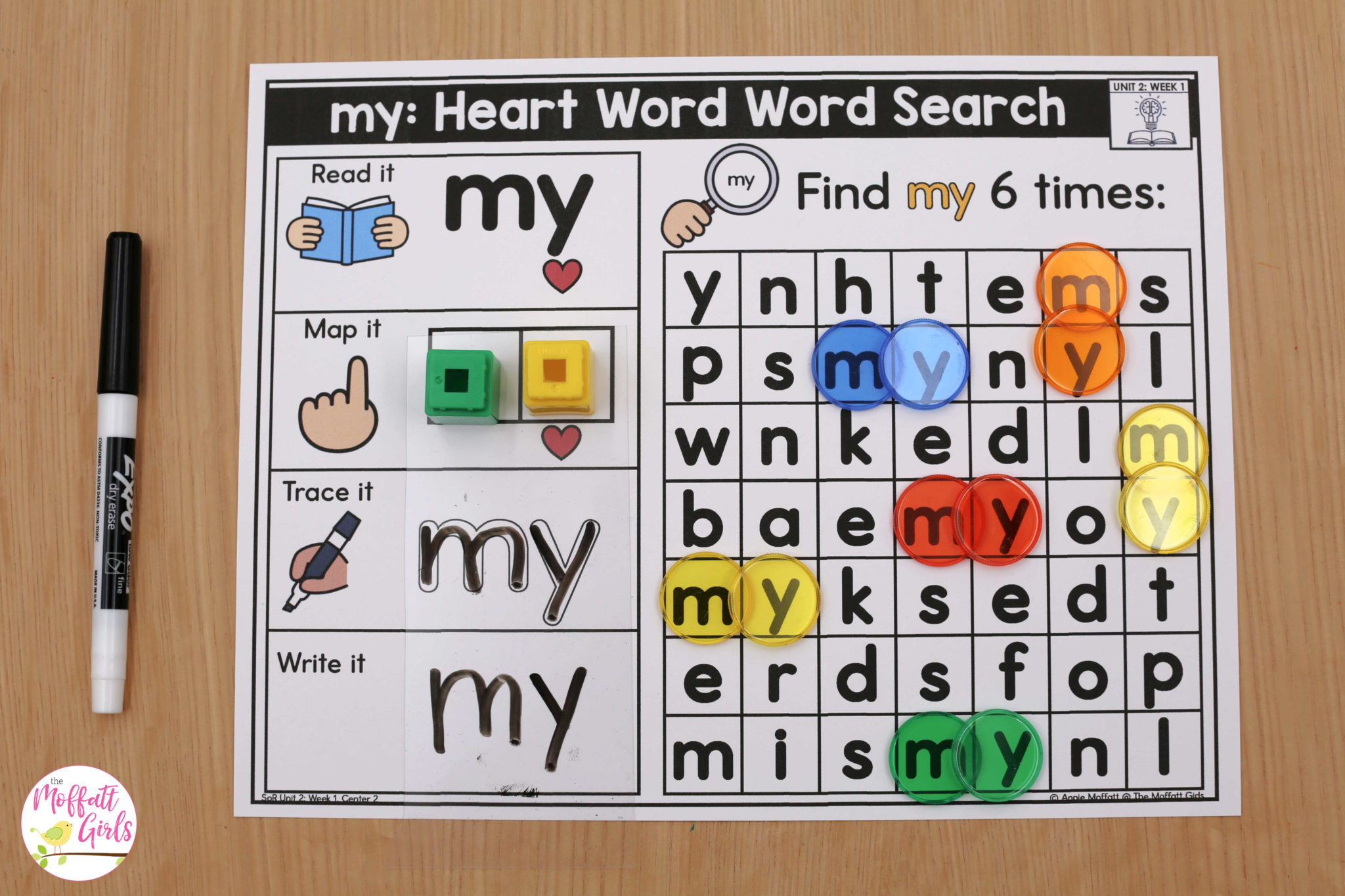
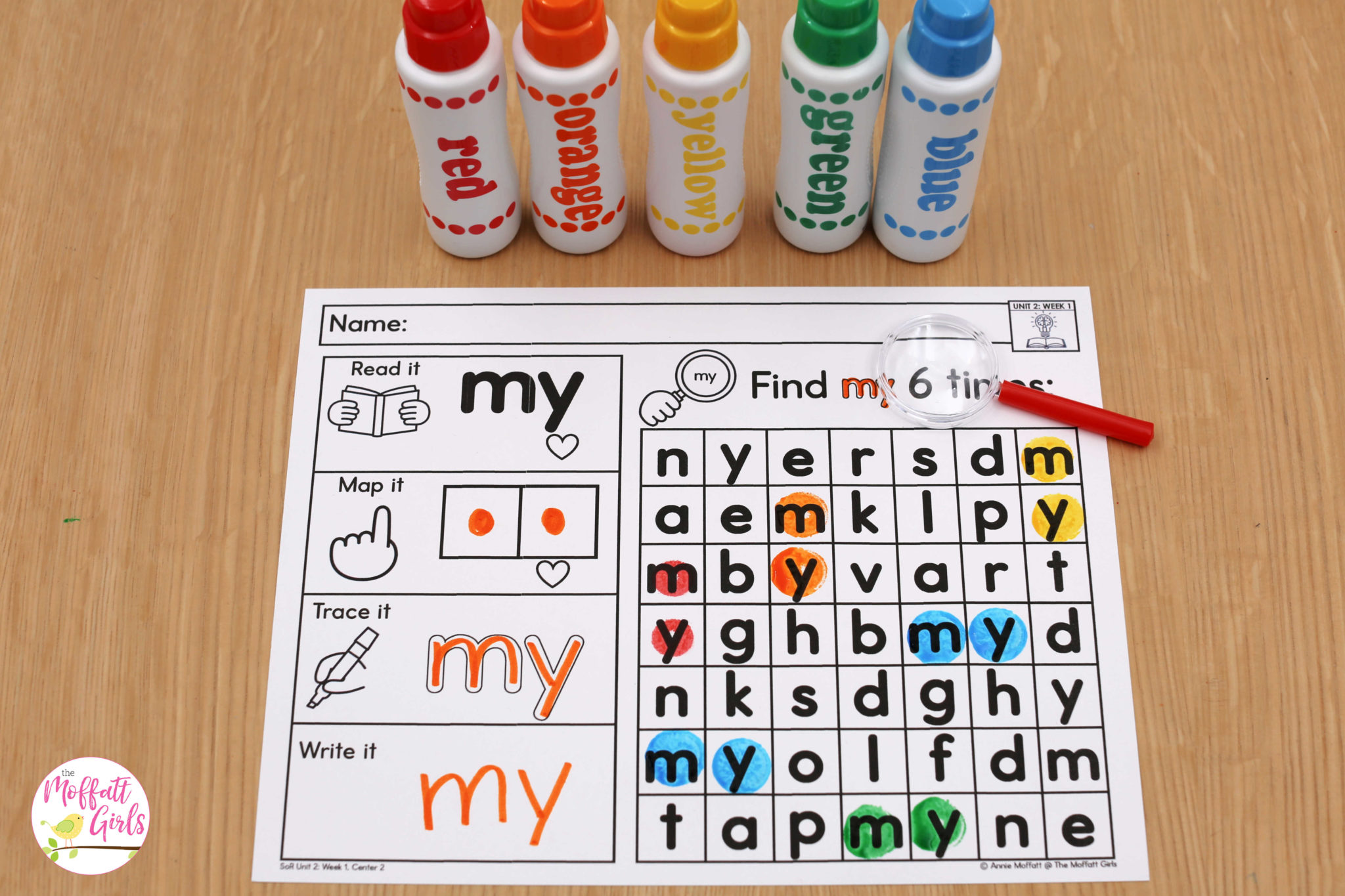
Center 3 Phonics Activity: Phonics Word Cover Up
Students say the word, tap the sounds in the word, cover each letter that makes the sounds in the word and write the word.
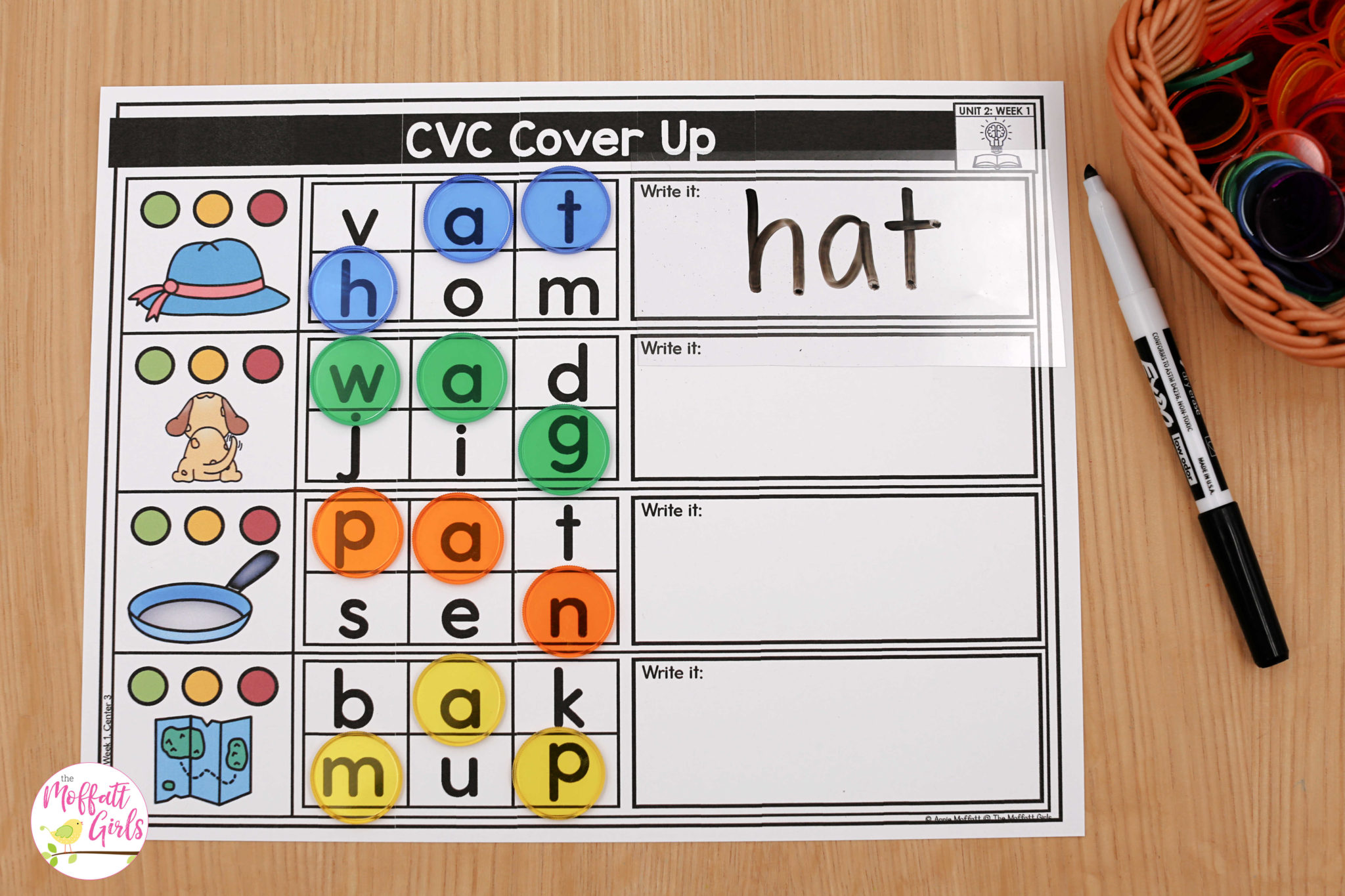
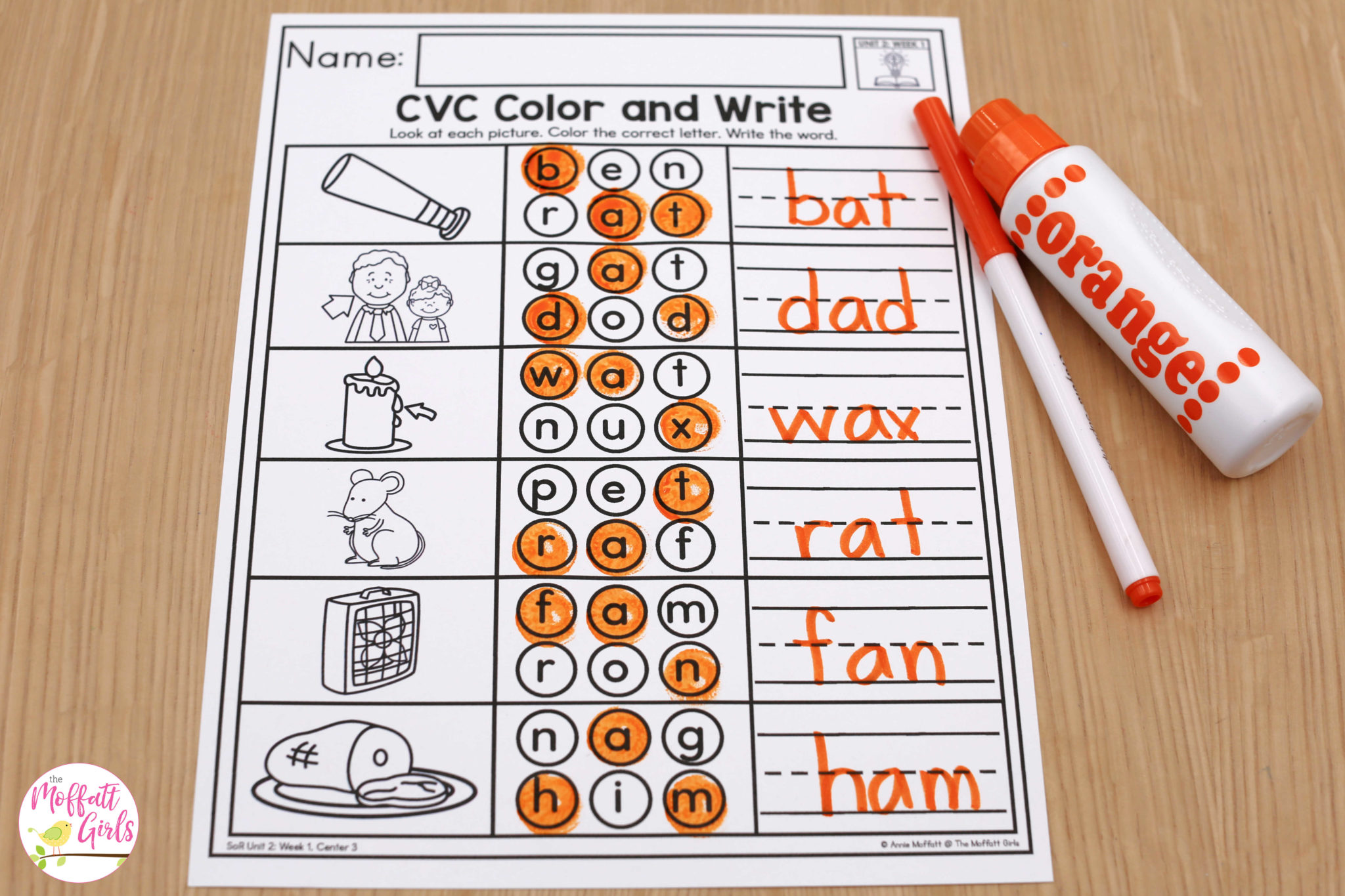
Center 3 High Frequency Words Activity: Find and Cover
Read the word in the middle and find and cover the word.
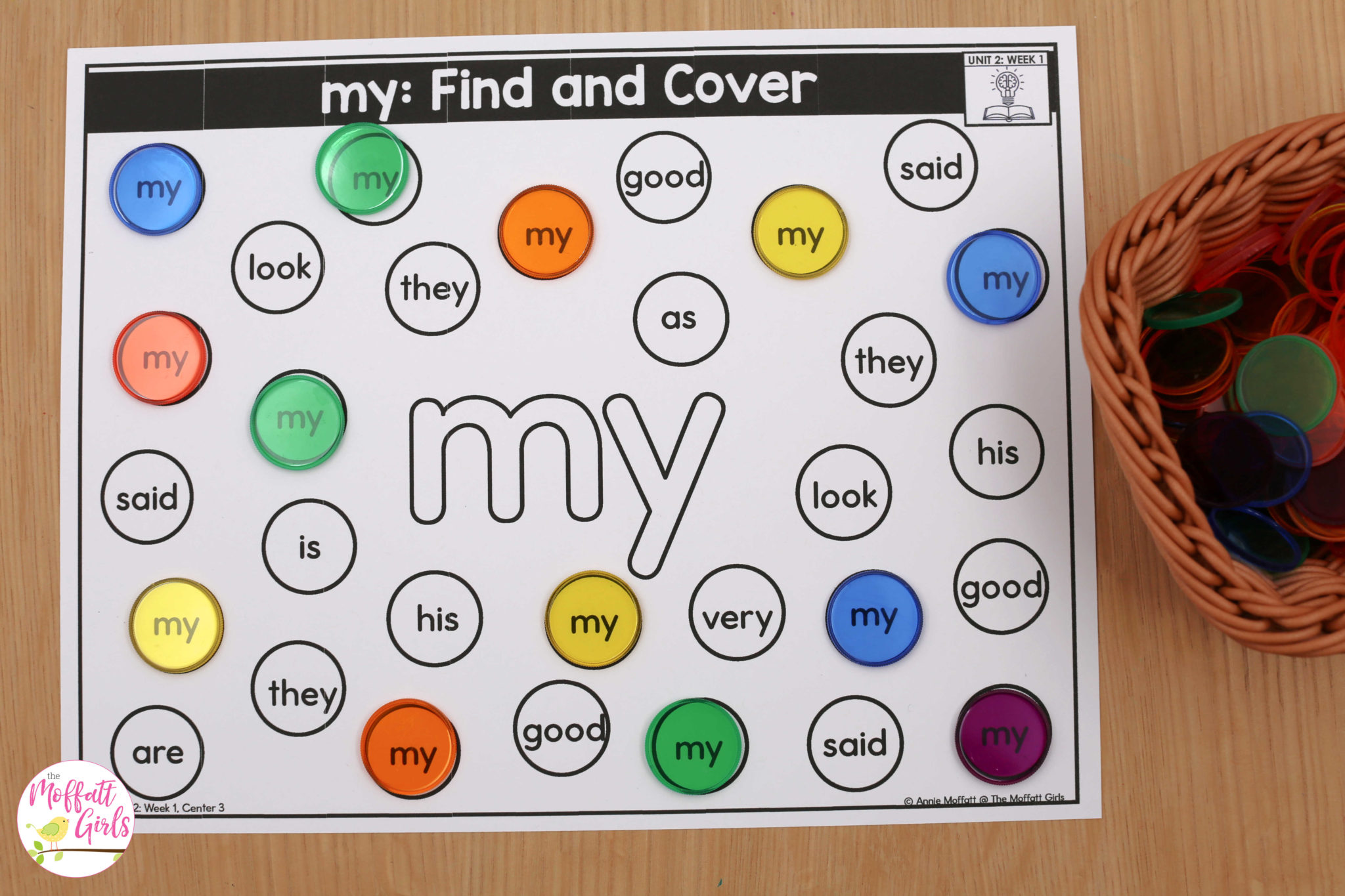
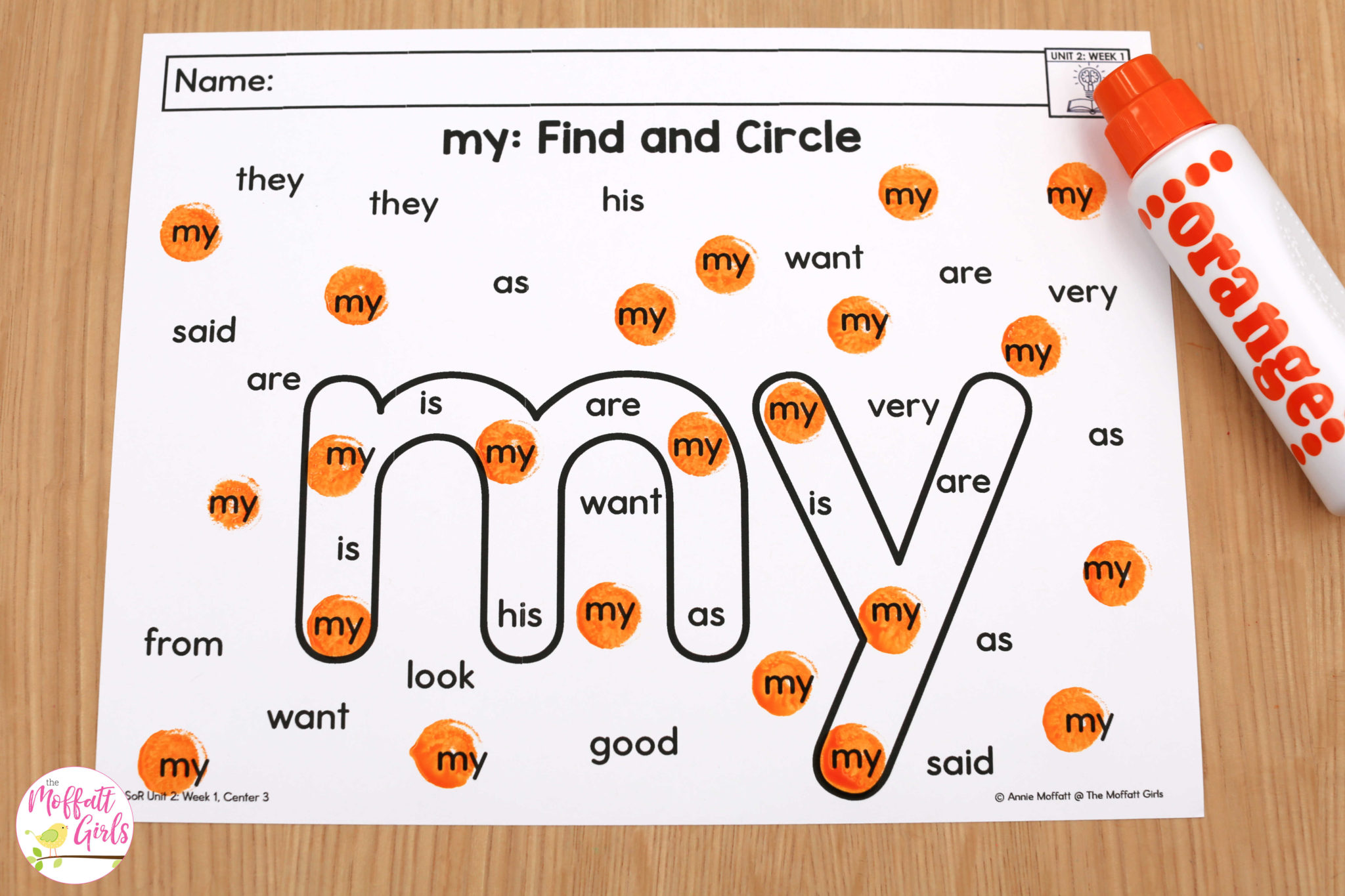
Center 4 Phonics Activity: Read and Match
Students read a word and draw a line to the picture that matches.
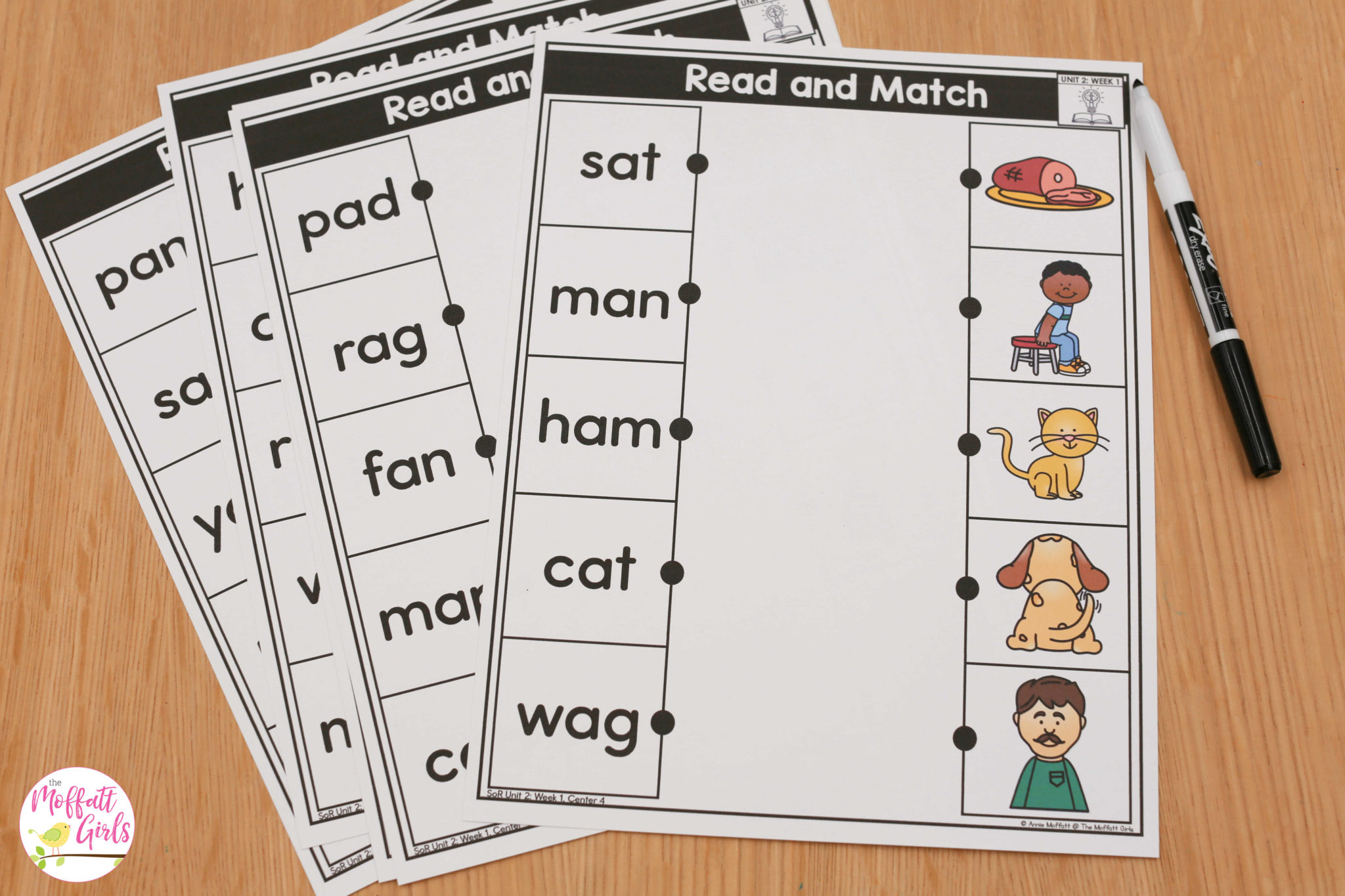

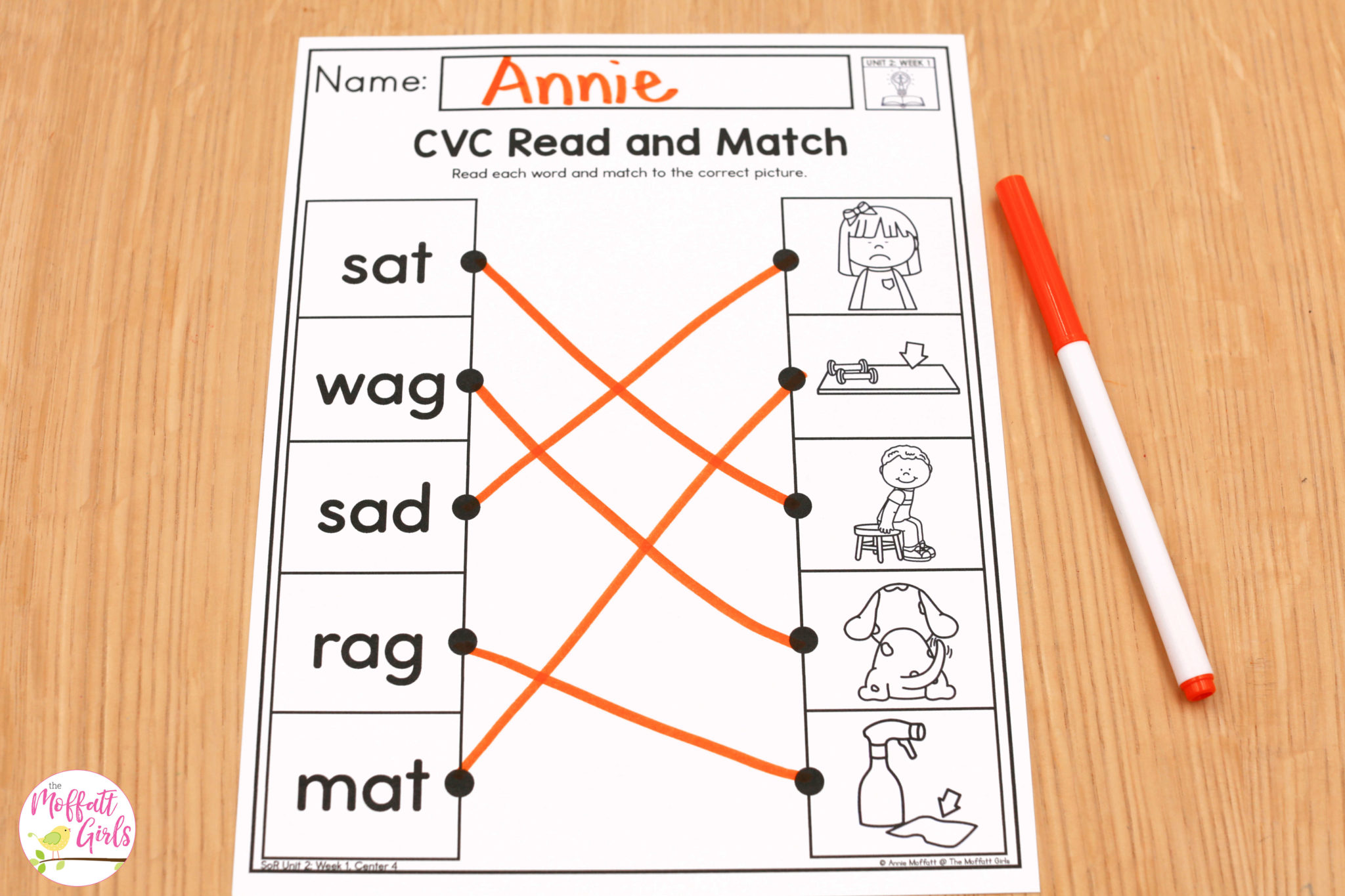
Center 4 High Frequency Words Activity: Maze Mat
Read the words and follow the path to get from start to finish.
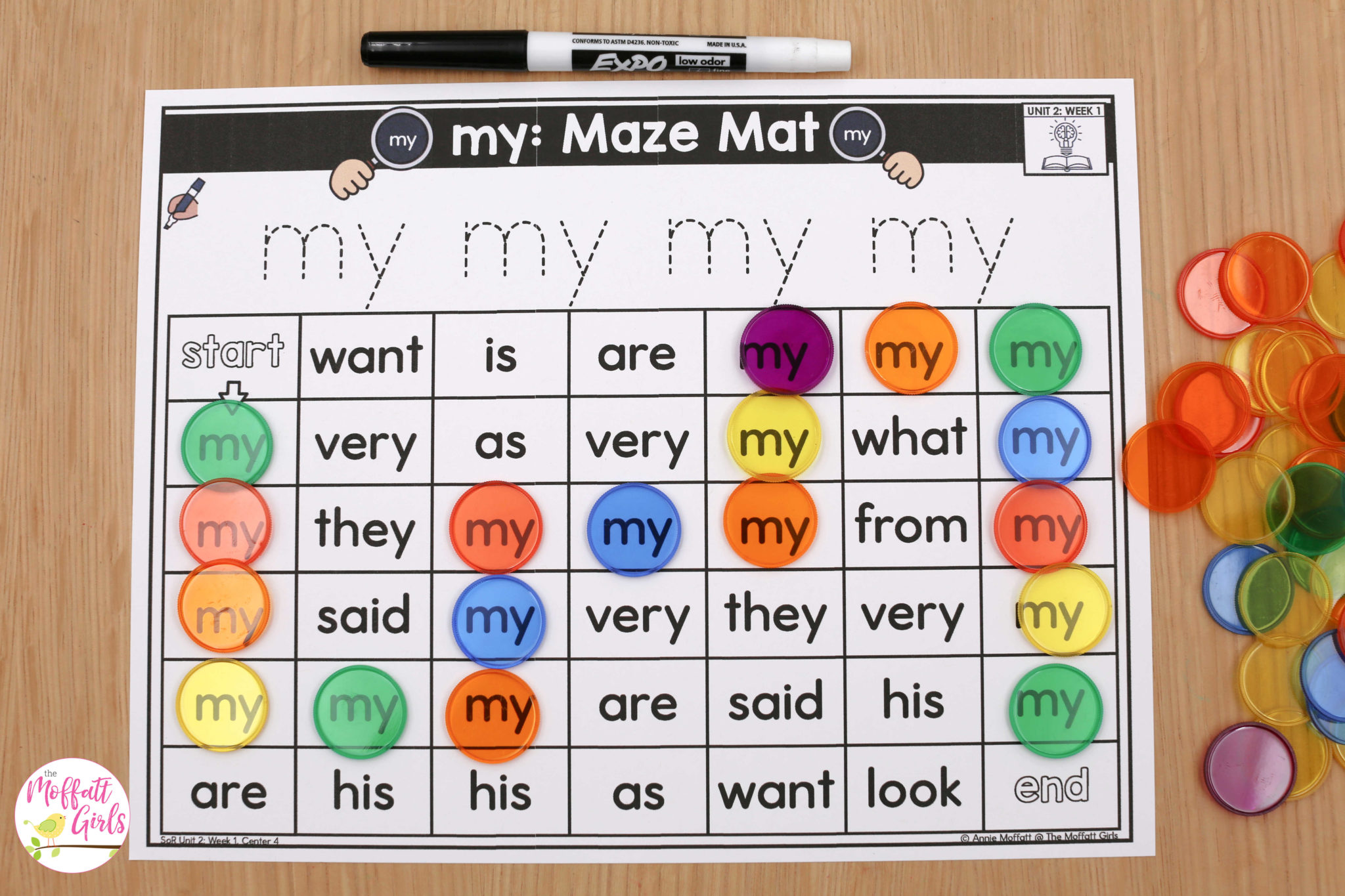
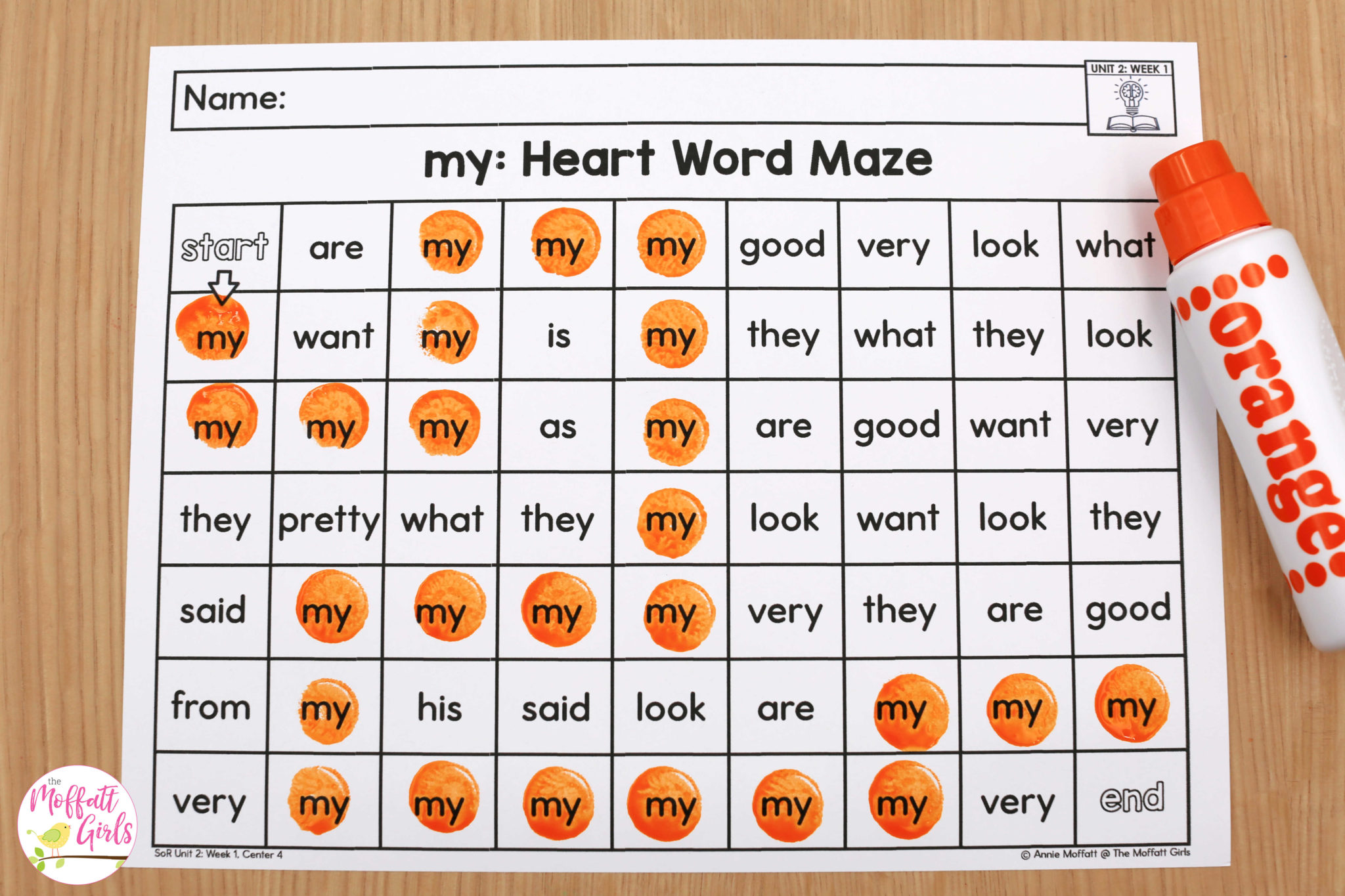
Weeks 4 & 9: Review
Weeks 4 and 9 in each unit will offer students the opportunity to review the skills they have learned. These weeks also offer you the opportunity to administer the mid- and post-assessments in order to guide your teaching.
Center 1: I Spy: Decode it and Find it!
Students read each word and find the matching item in the picture.
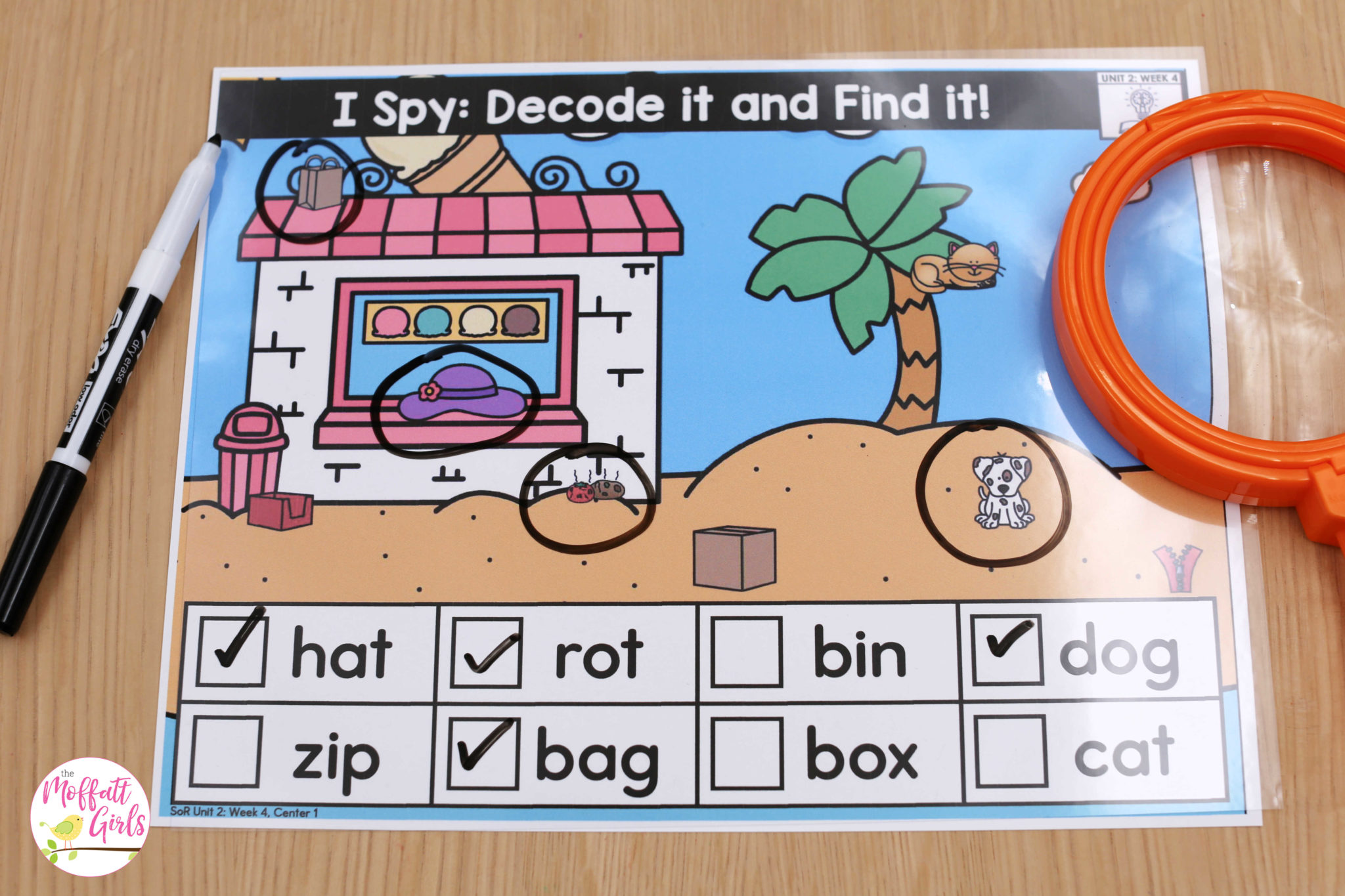
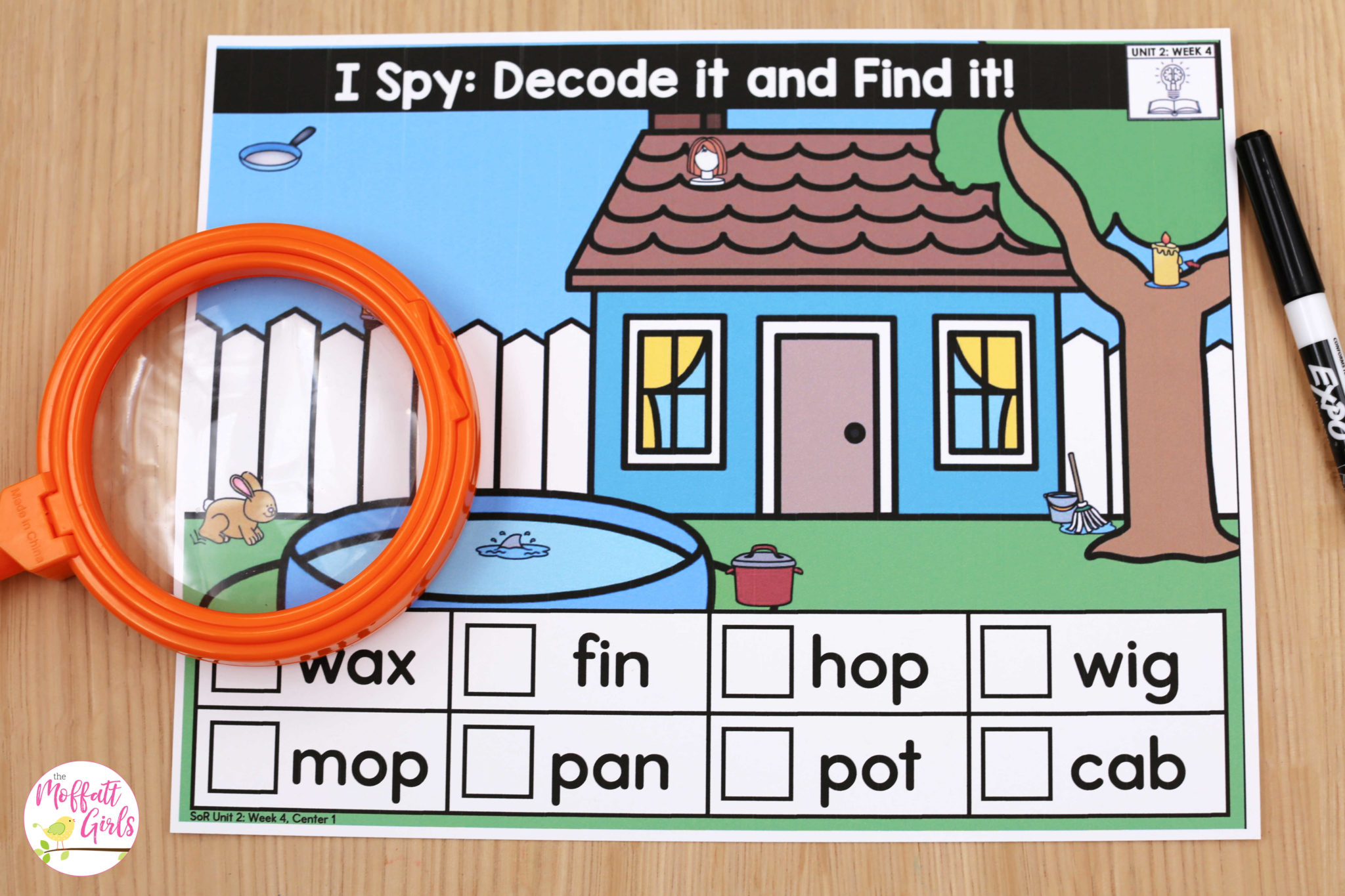
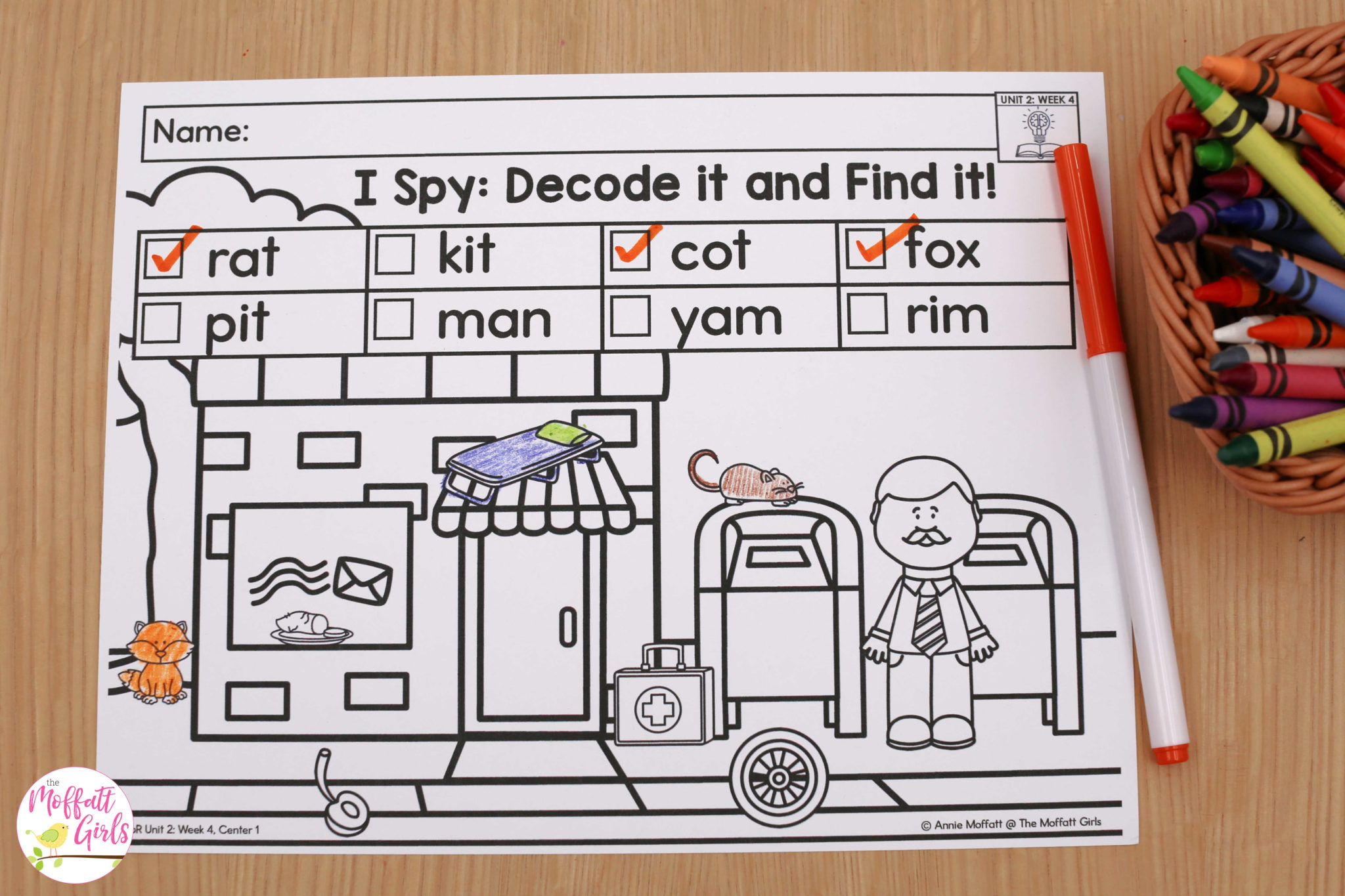
Center 2: Spin & Cover
Students spin the spinner, say the word and cover a word that matches.
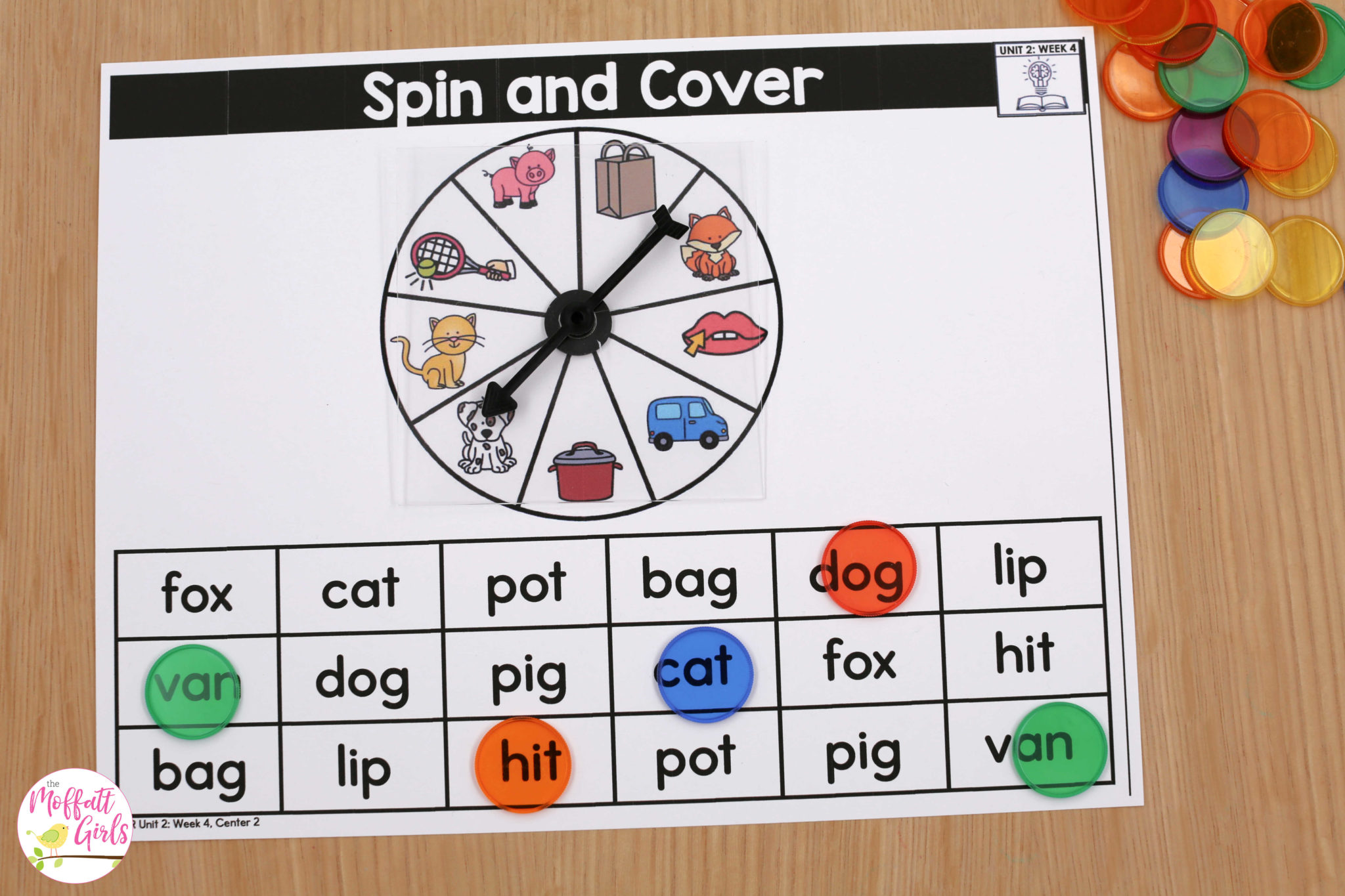
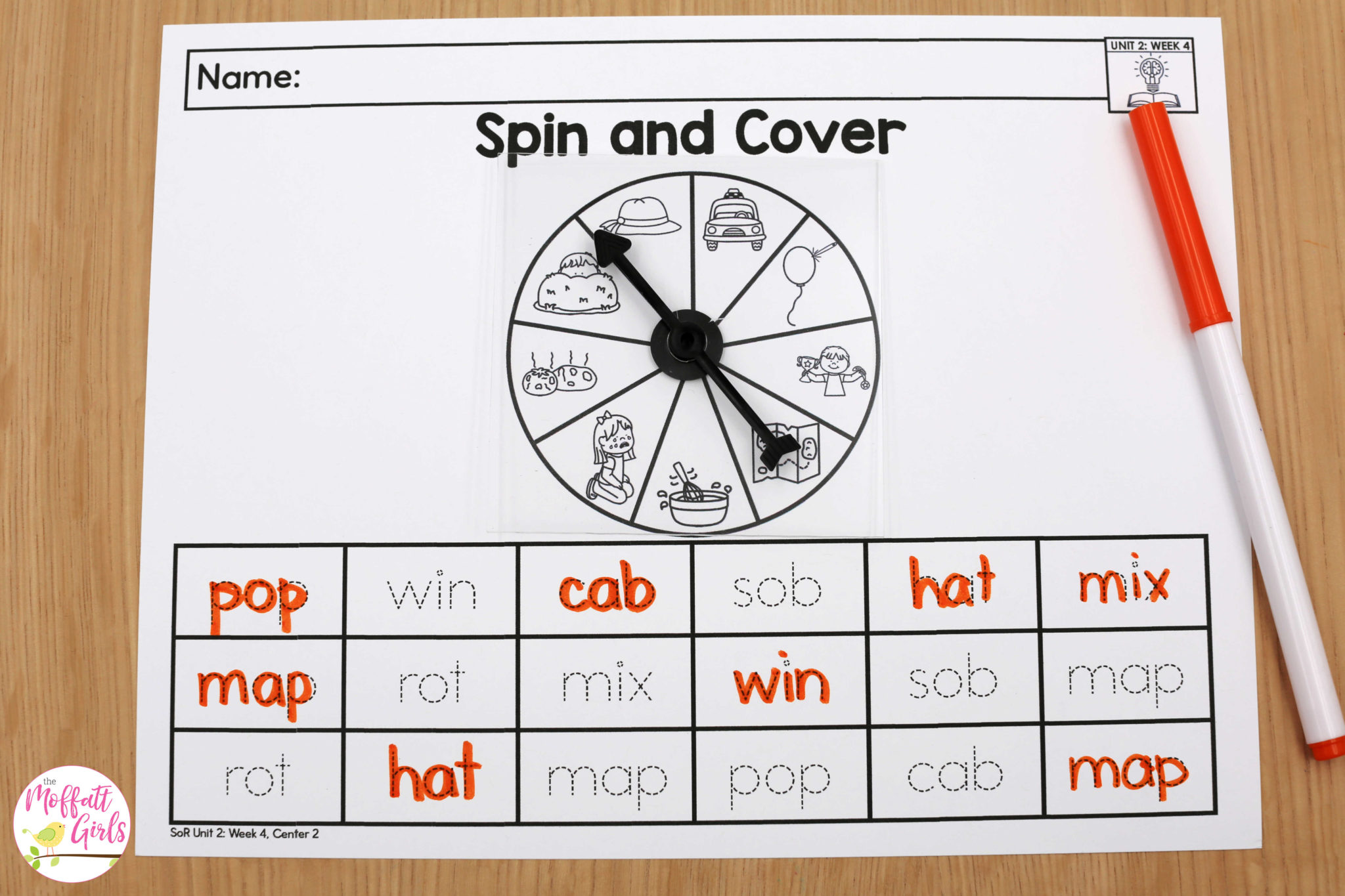
Center 3: Roll it, Move it, Map it, Write it!
Students take turns rolling a die, moving their game piece, mapping the word and writing the word.
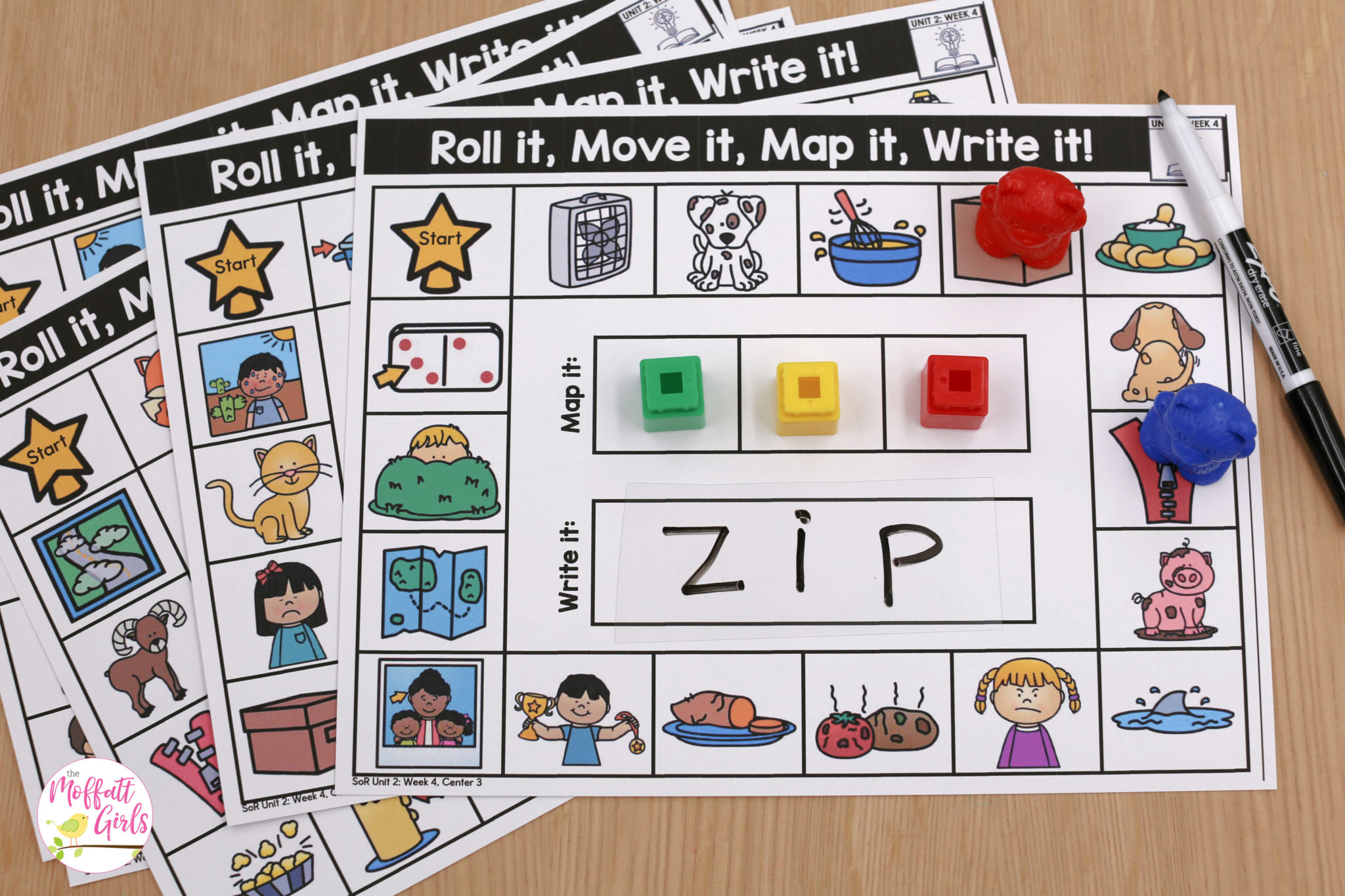
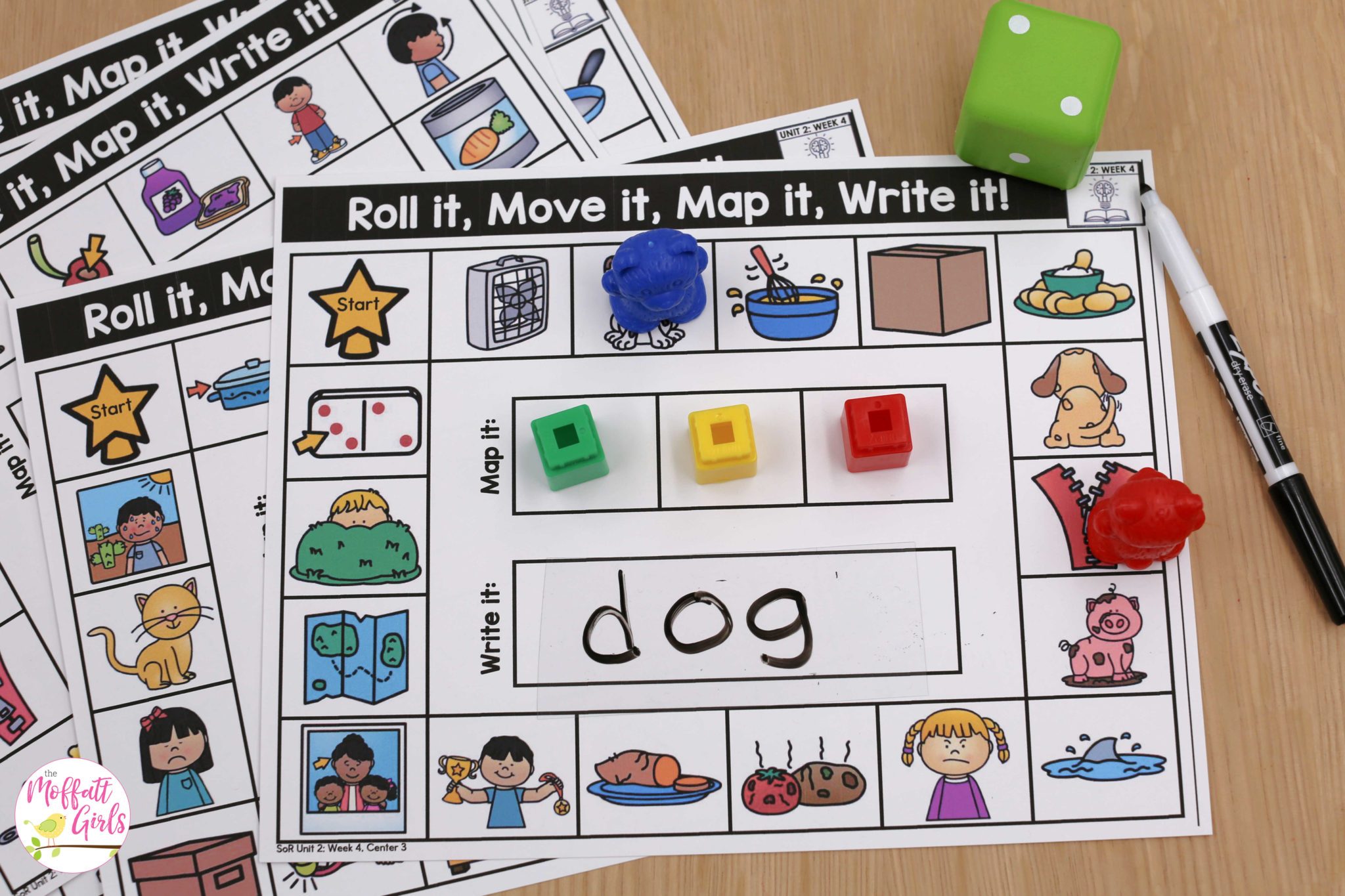
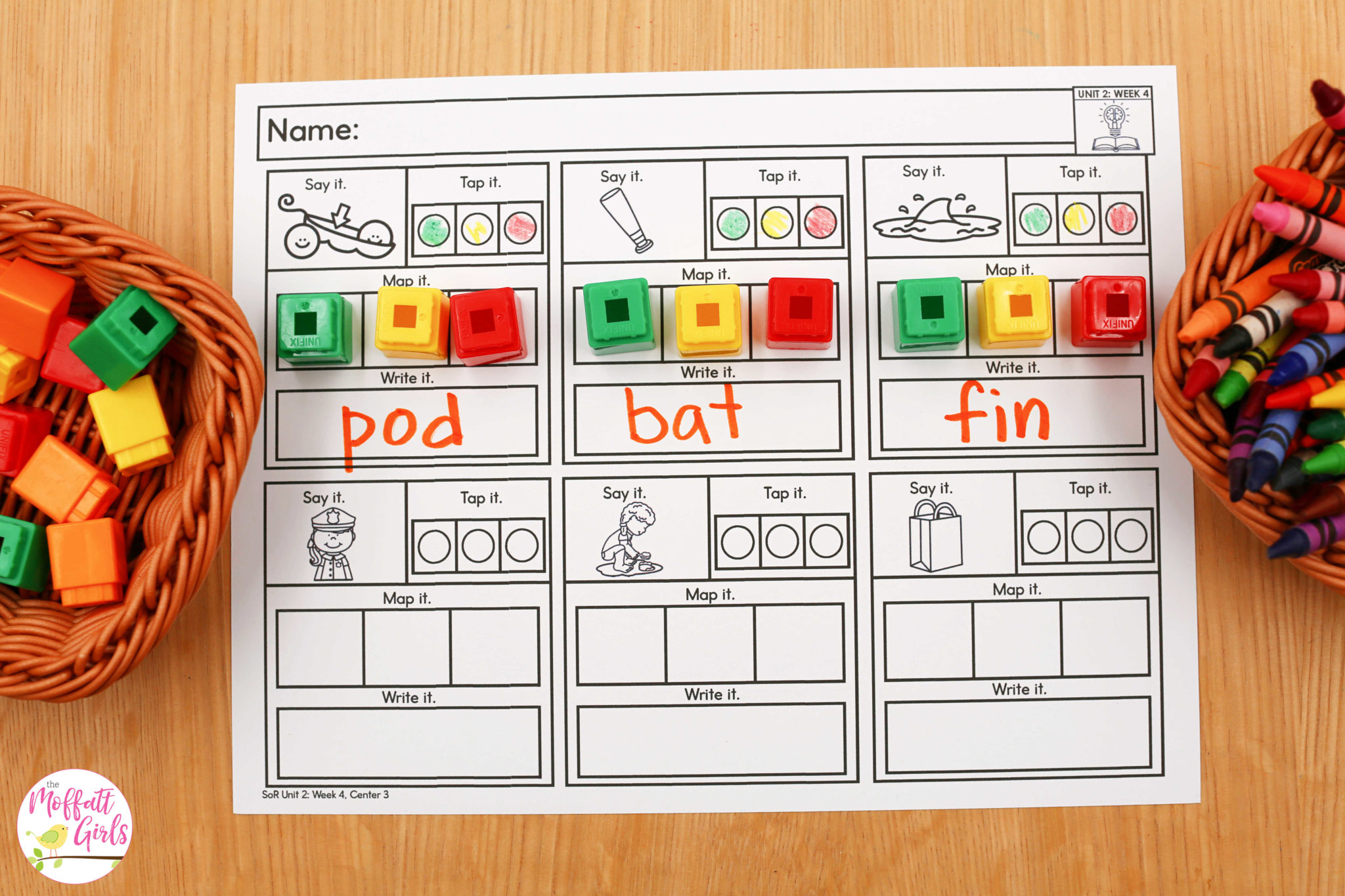
Center 4: Roll it, Move it, Read it!
Students take turns rolling a die, moving their game piece and reading the high frequency word.
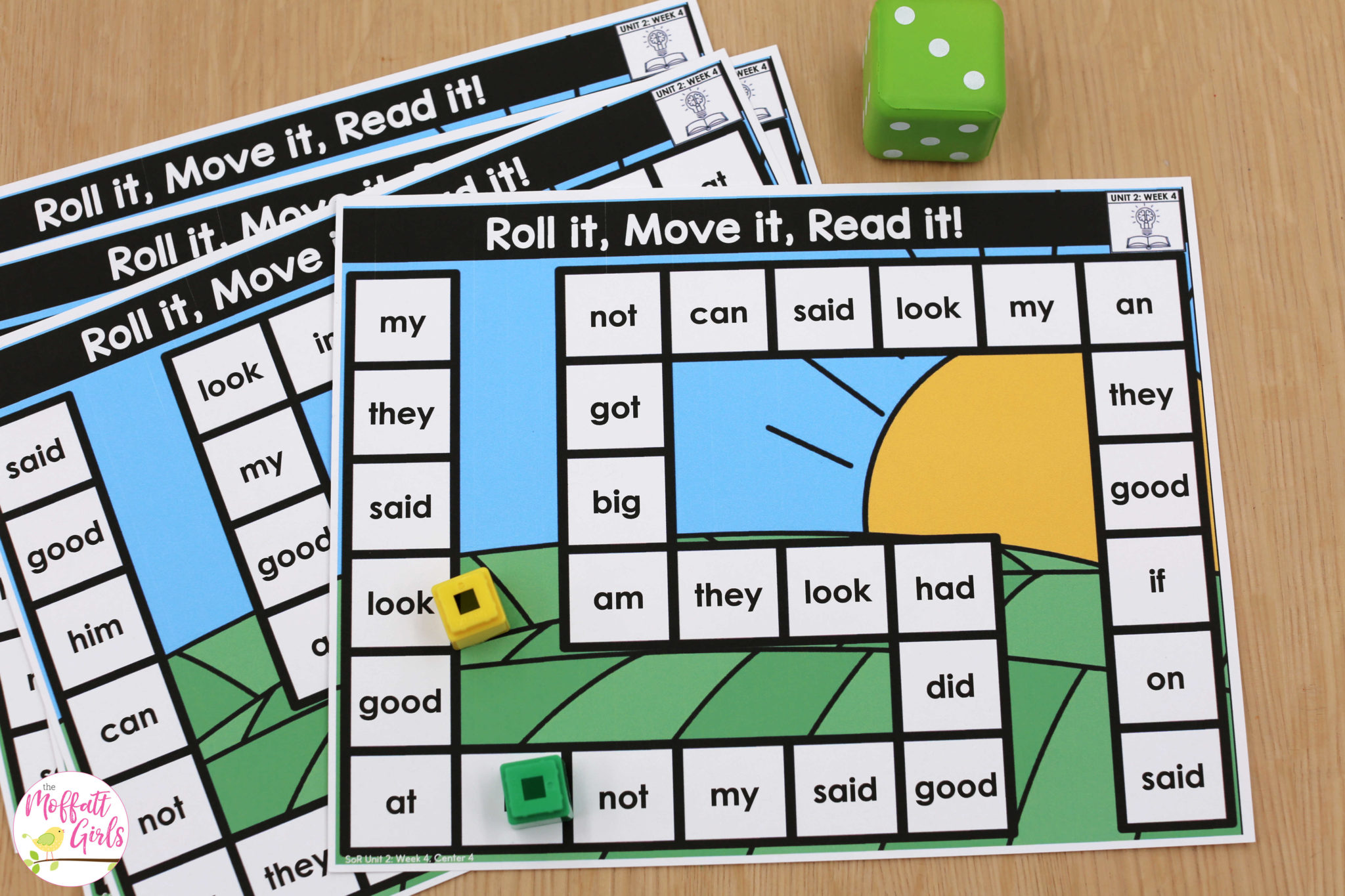
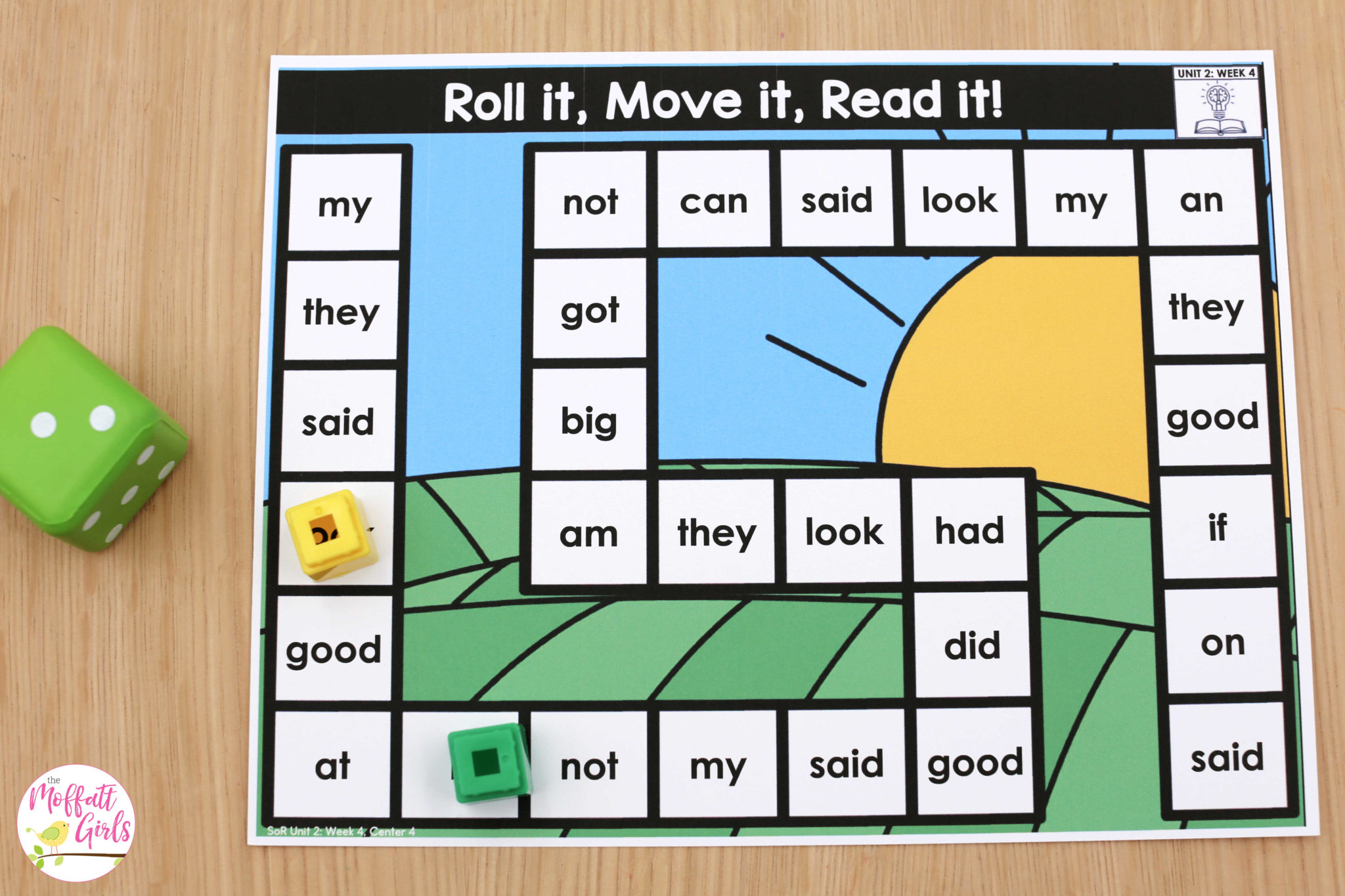
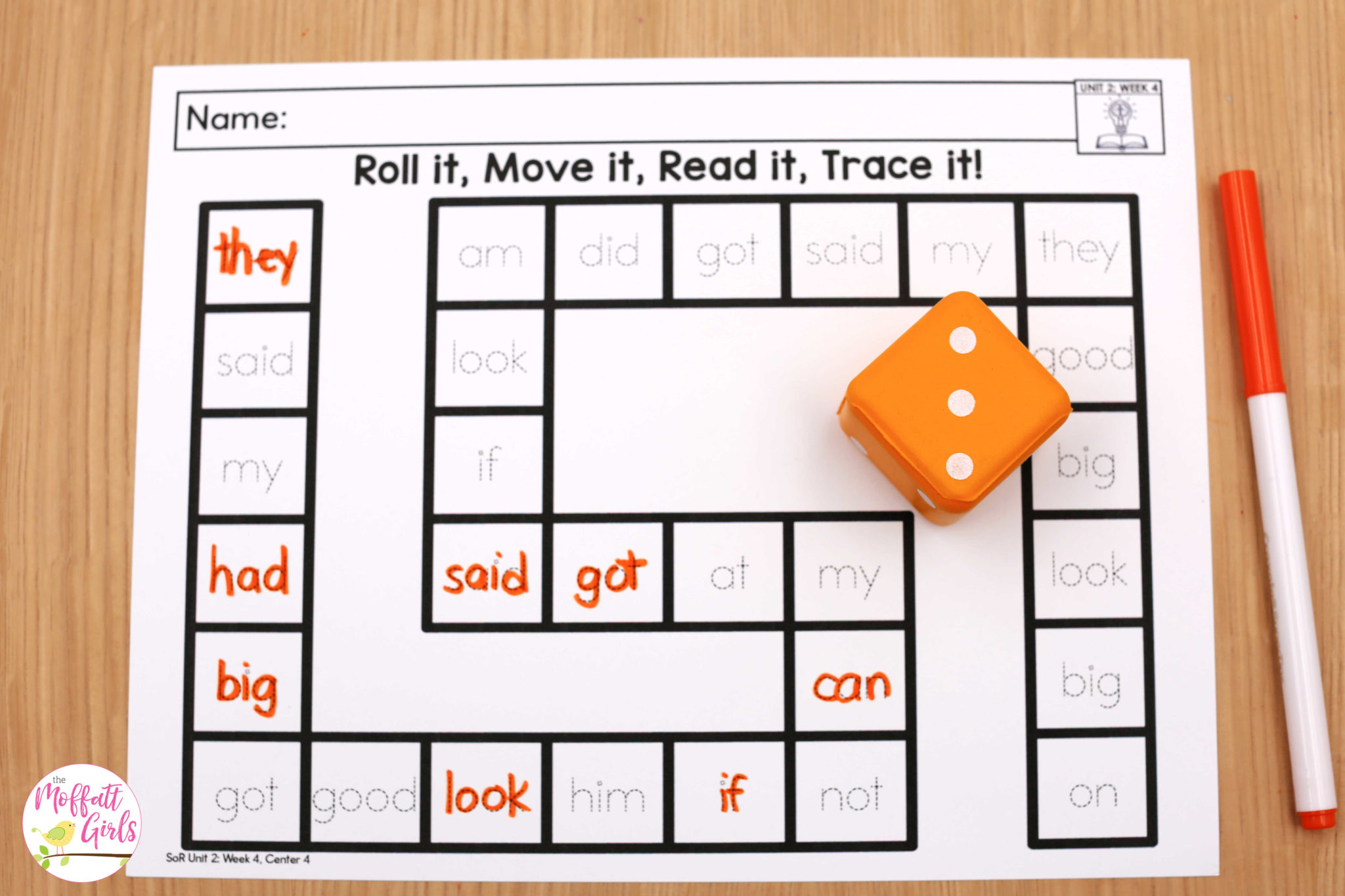
Folder #4: Pathway to Fluency Unit 2 Teacher Table Tools
The teacher table is where you can differentiate your reading instruction based on your students’ individual needs. The “TTT” folder has all the resources that you will need for small-group instruction for the concepts introduced in Unit 1. These materials are organized by type, and then by week. Therefore, you can easily pull activities from previous weeks for review as needed. Use the Teacher Table Tools throughout the unit to offer scaffolding for struggling students, additional practice for on-track students and extension activities for students who are ready for more challenging work.
Oral Phonological & Phonemic Awareness Practice
To start, additional phonological and phonemic awareness activities are provided. These coincide with the whole-group lesson exercises. Use them as a warm-up at the beginning of small group instruction.
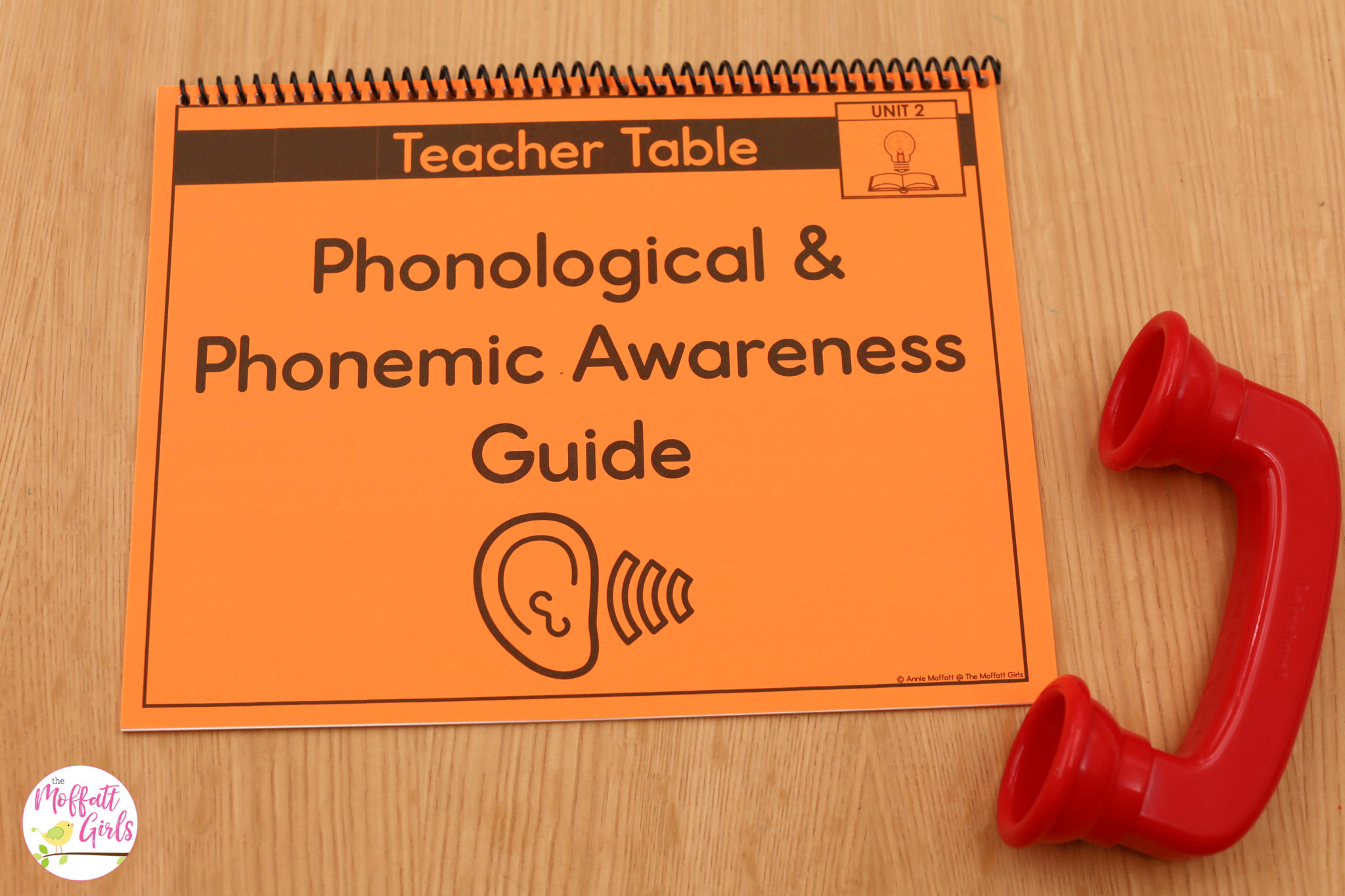
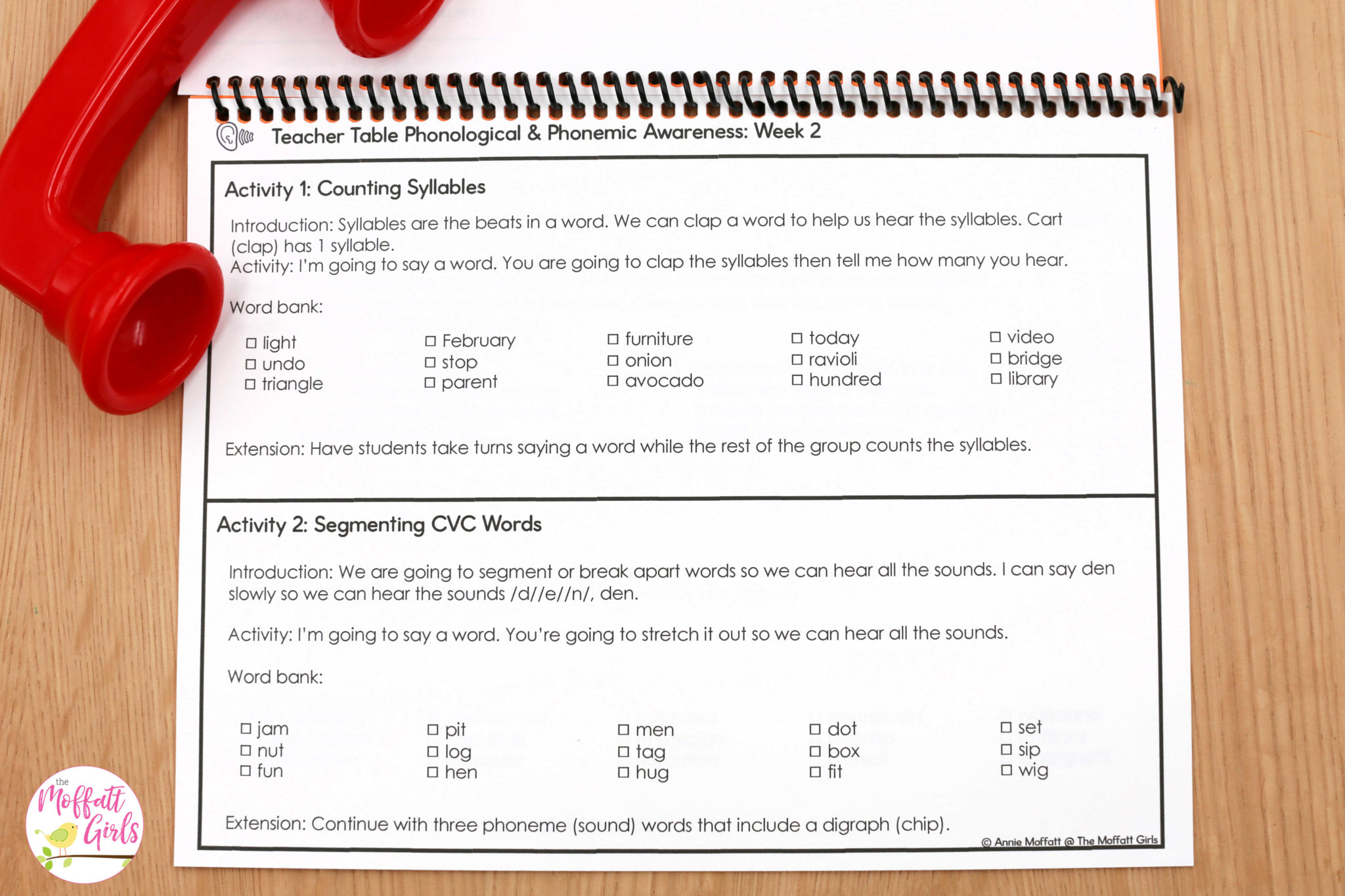
Letter Chaining Activity
Students can use the given letters to build a word, listen for the prompt for the letter change in the word, and read the new word.
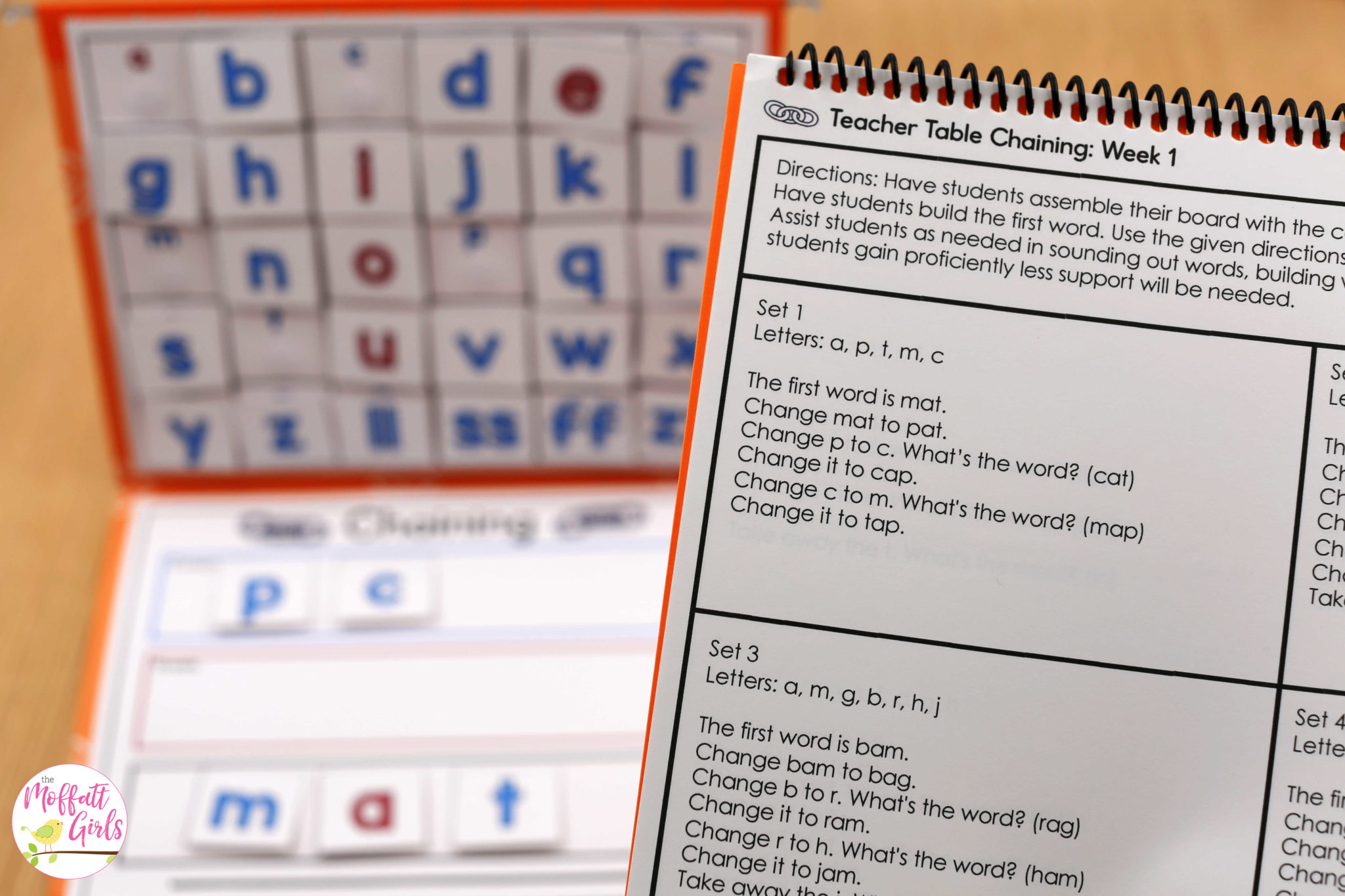
Orthographic Mapping Mats and Weekly Word Lists
Each week includes a word list of all decodable words. Students can map and encode the word on the mat.
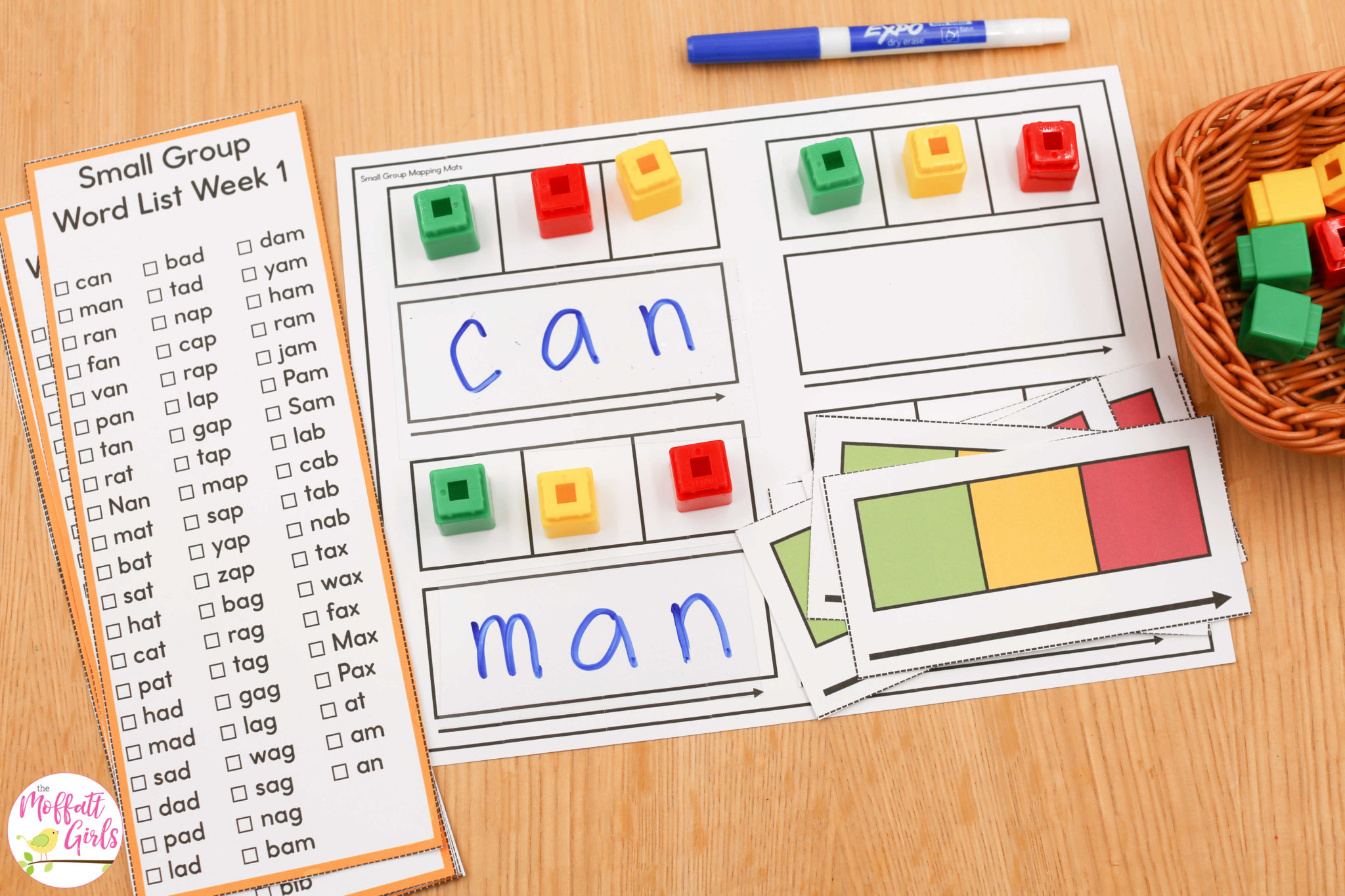
Tap it & Map it Cards
Next up, use these cards as a visual aid to help students say a word, tap the sounds in the word and map each sound within a box.
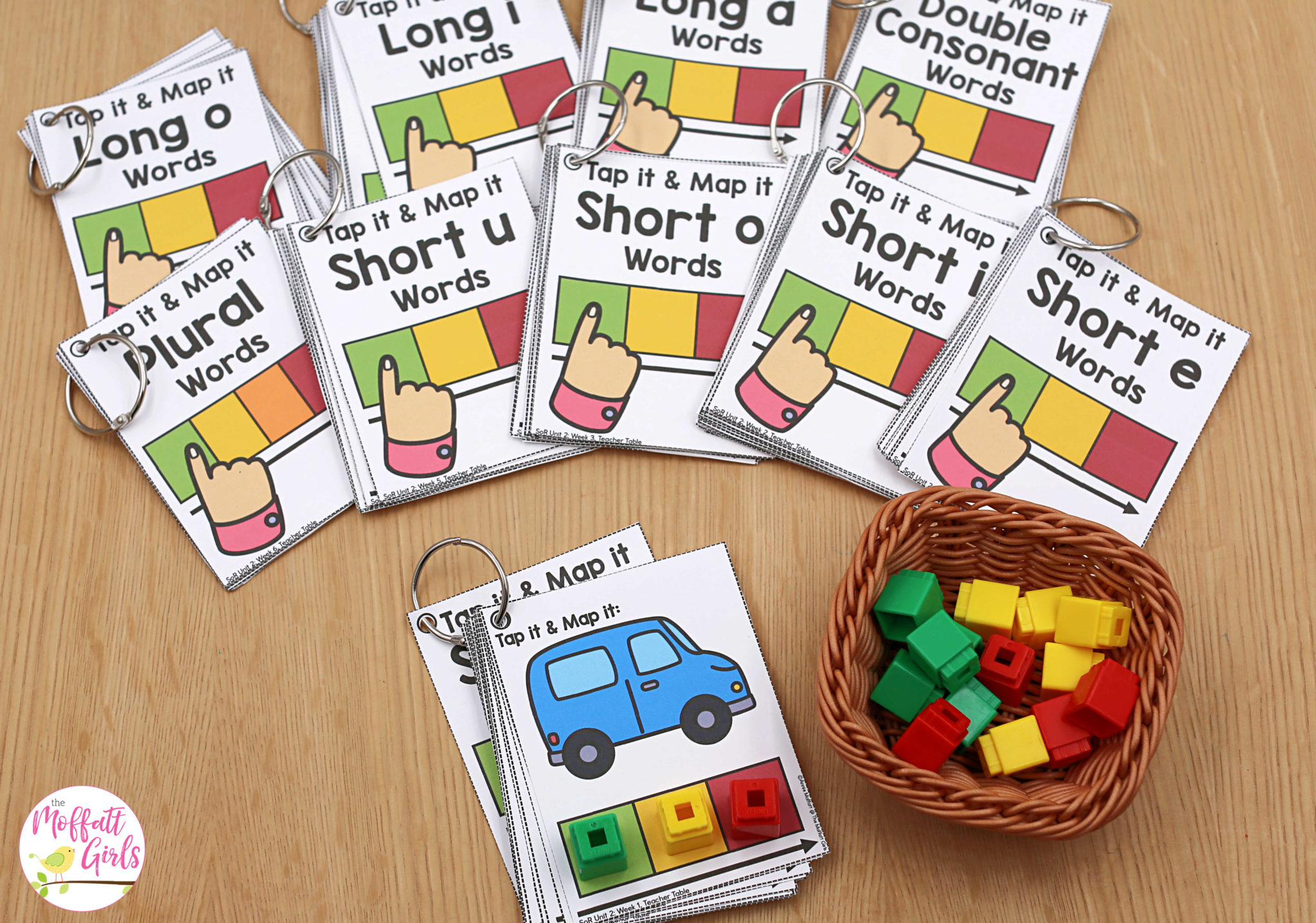
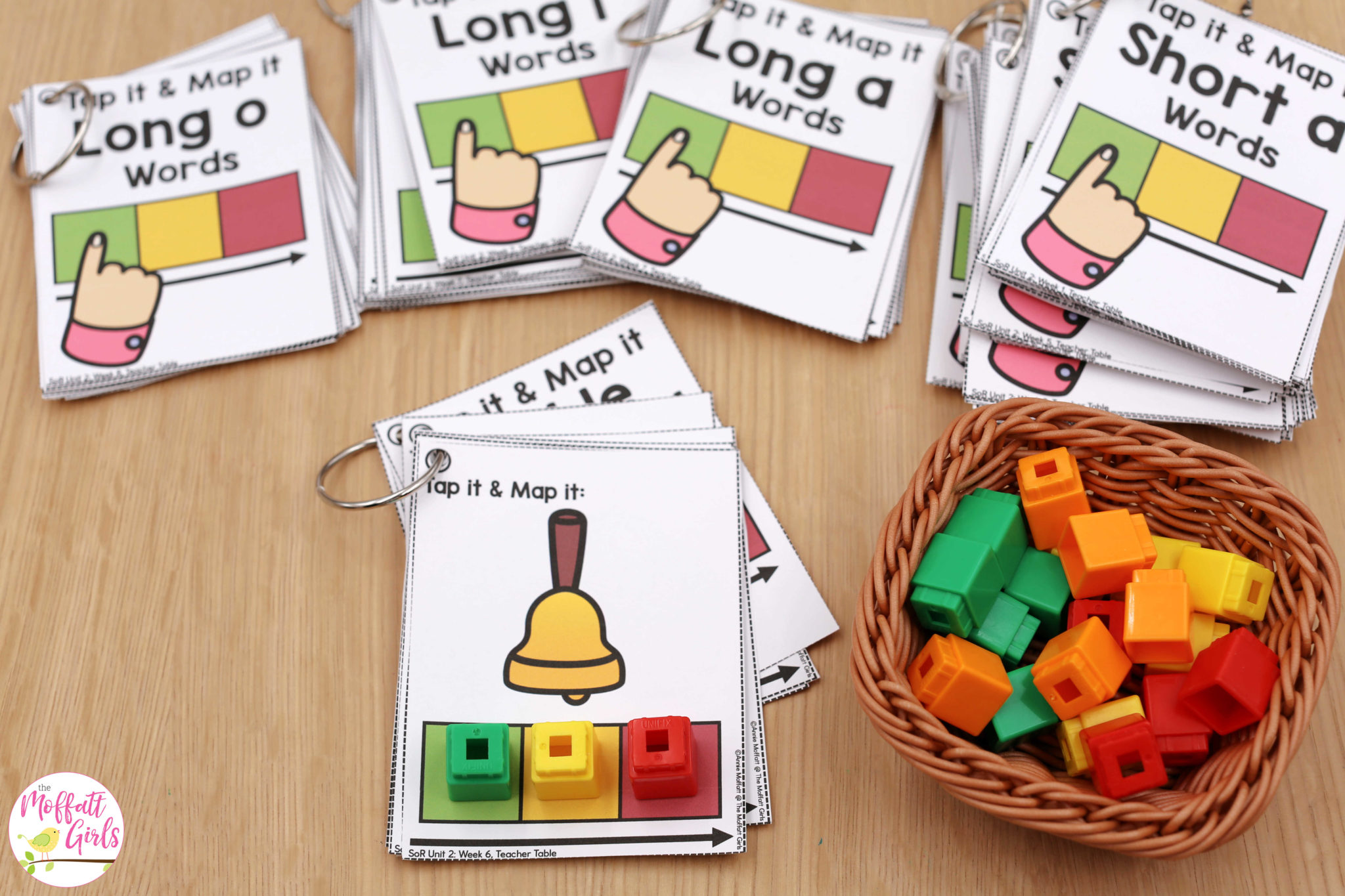
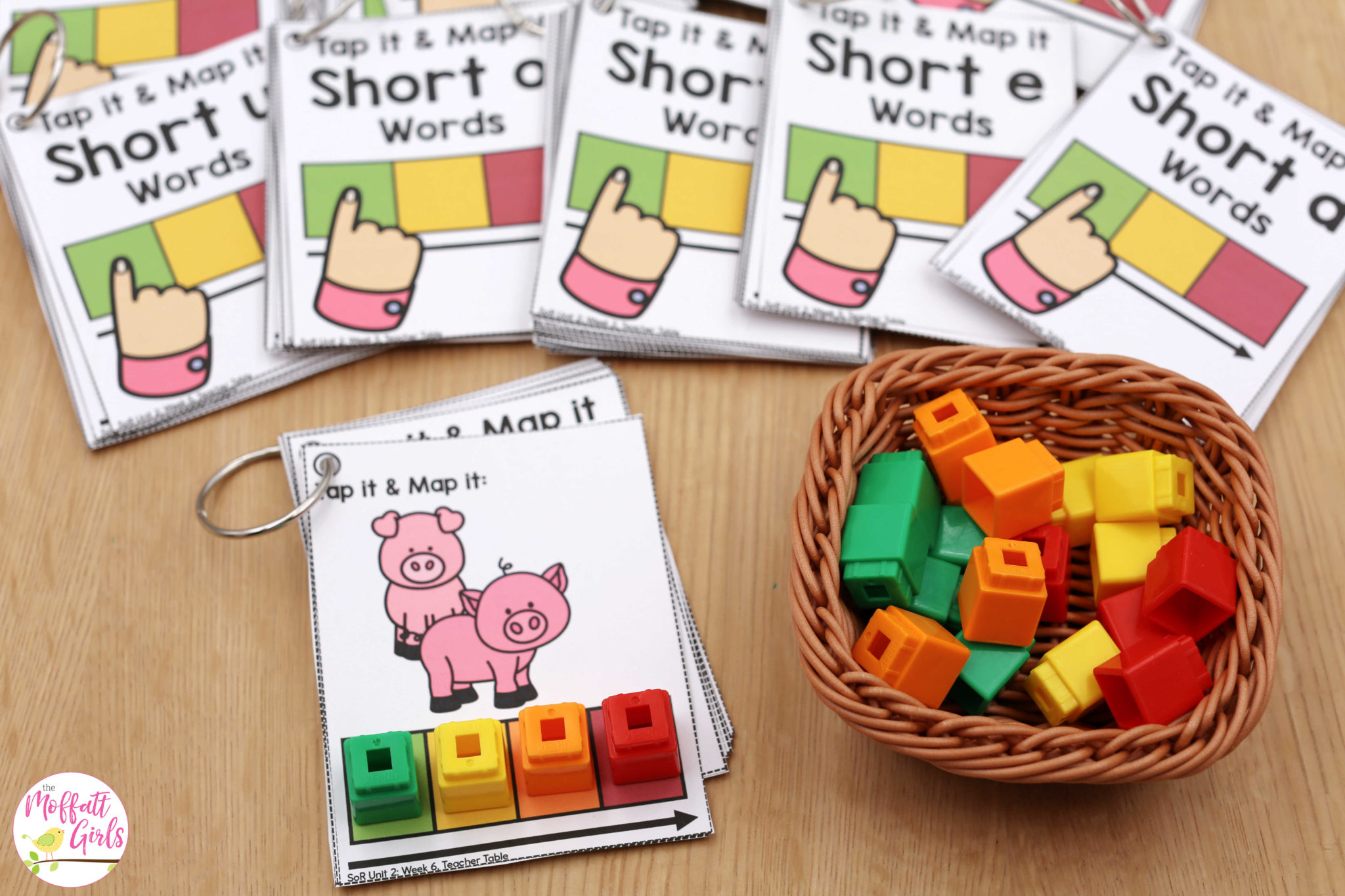
Map it & Zap it Cards
For this activity, add manipulatives to allow students to practice mapping out phonics words in a hands-on way.
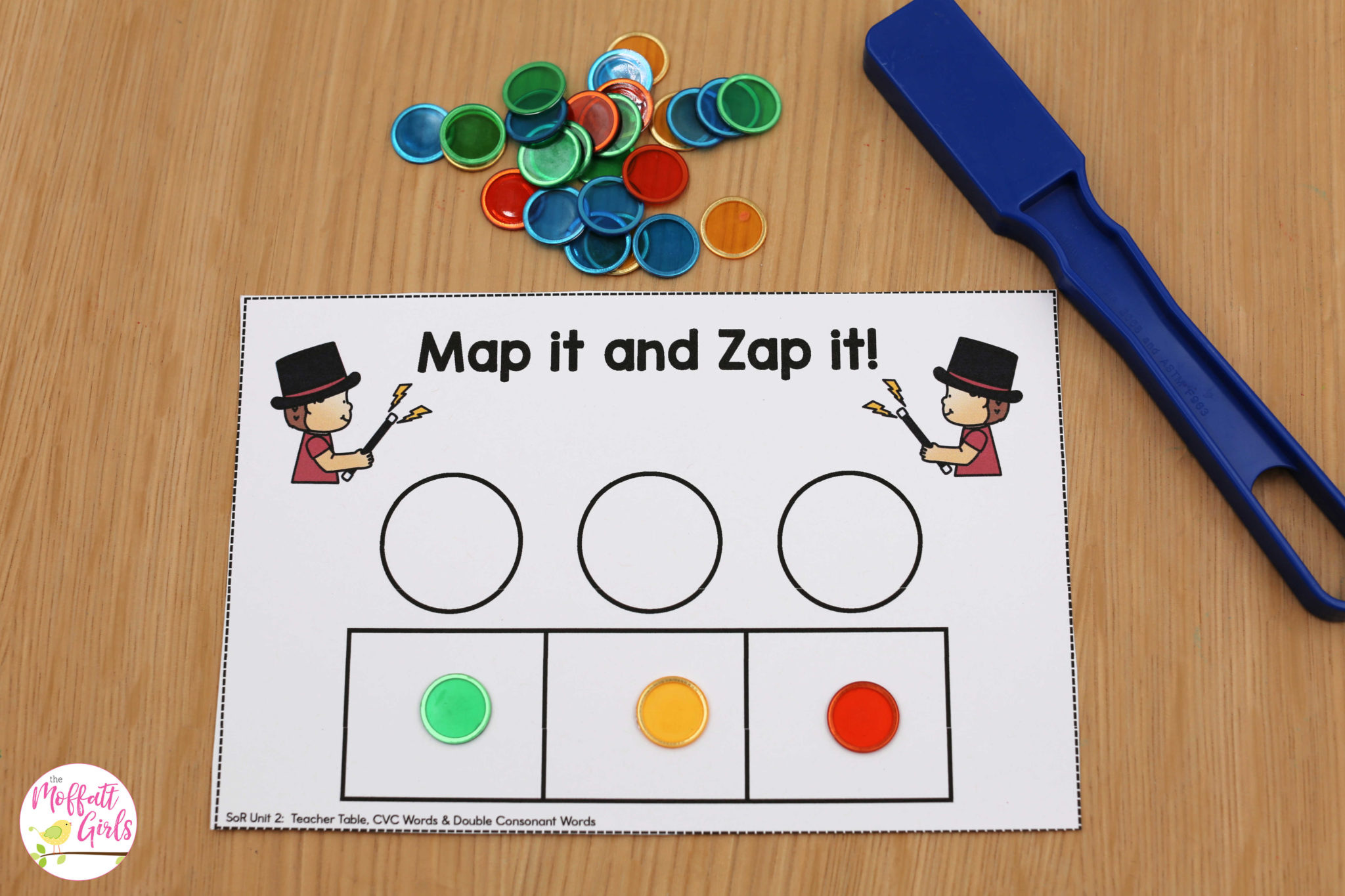
Phonics Road Readers
The Phonics Road Readers are such a fun way to practice sounding out and blending letters within a phonics word. Simply add a mini car and read away!
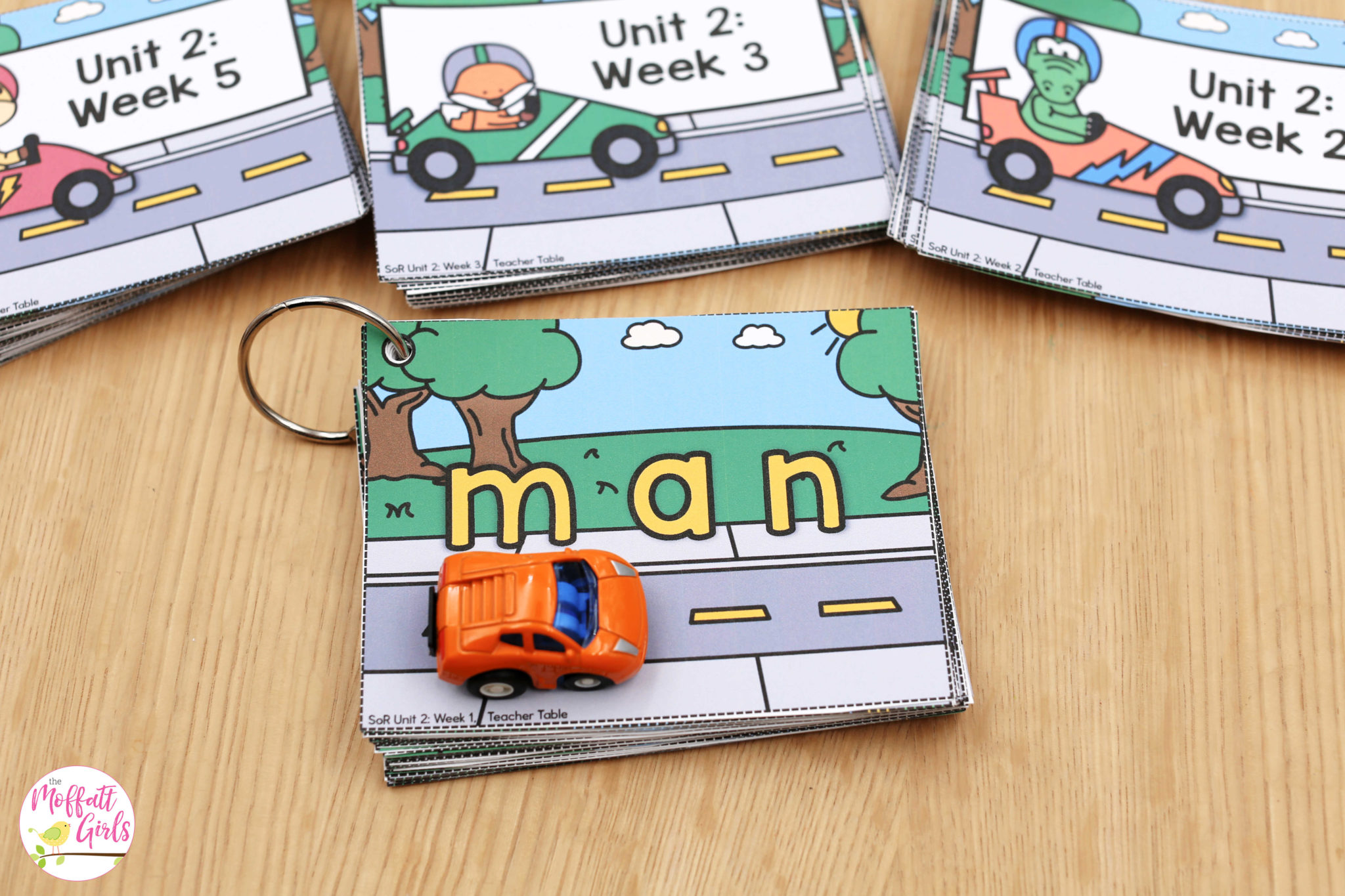
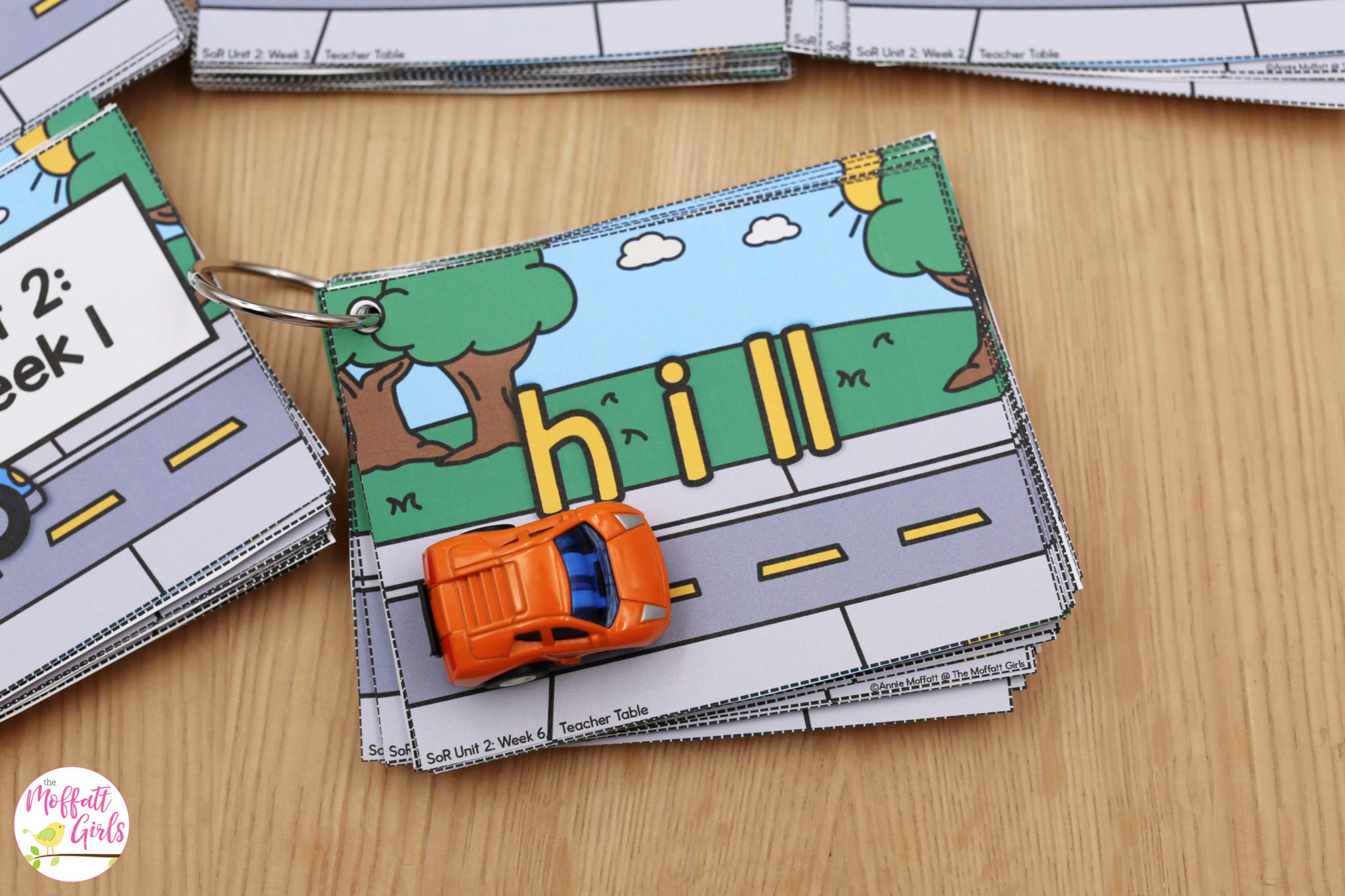
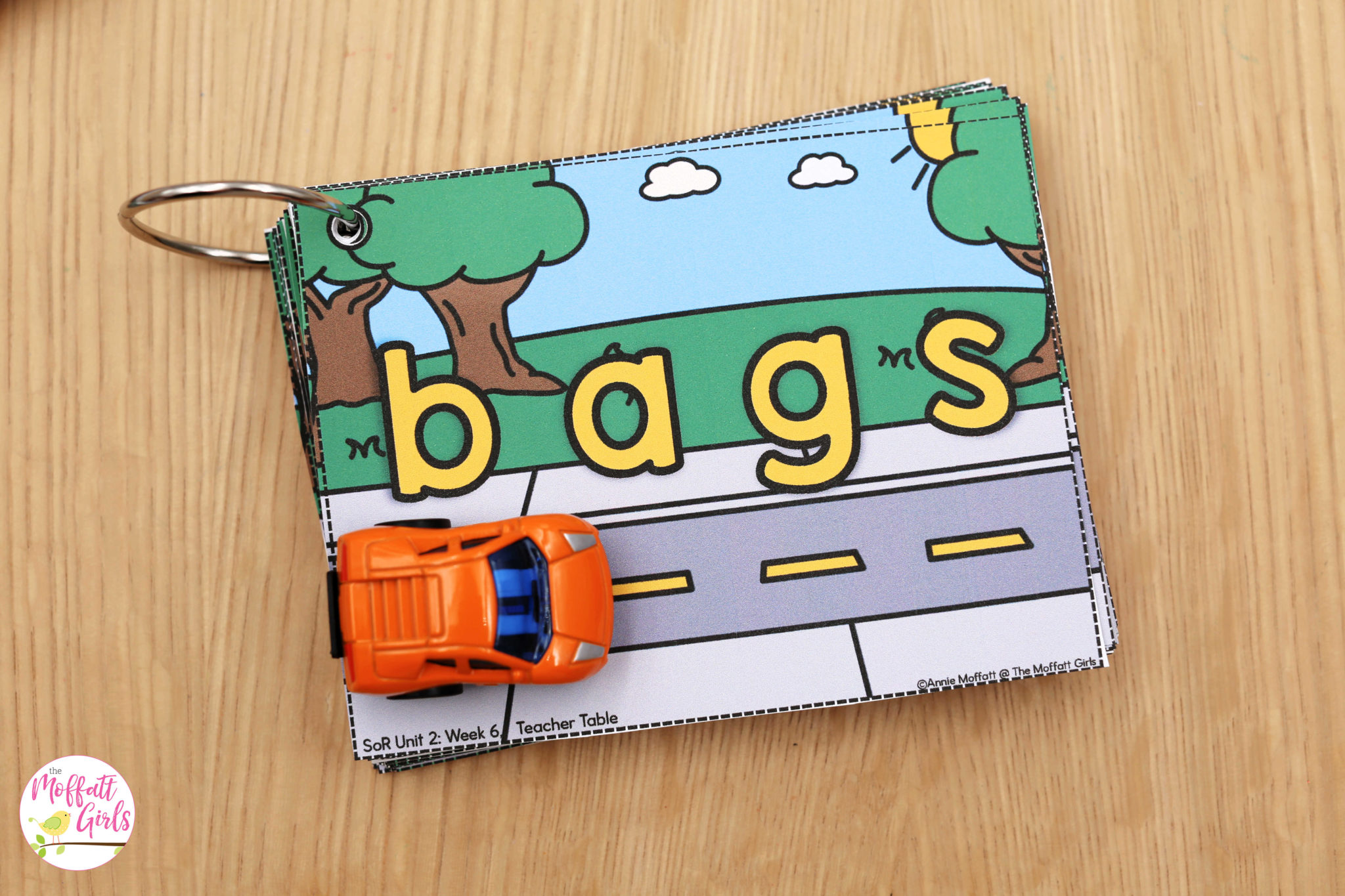
Blending Bus
Say a phonics word from a word list, and have students practice orthographically mapping the word. Then have students build the word using magnet letters.
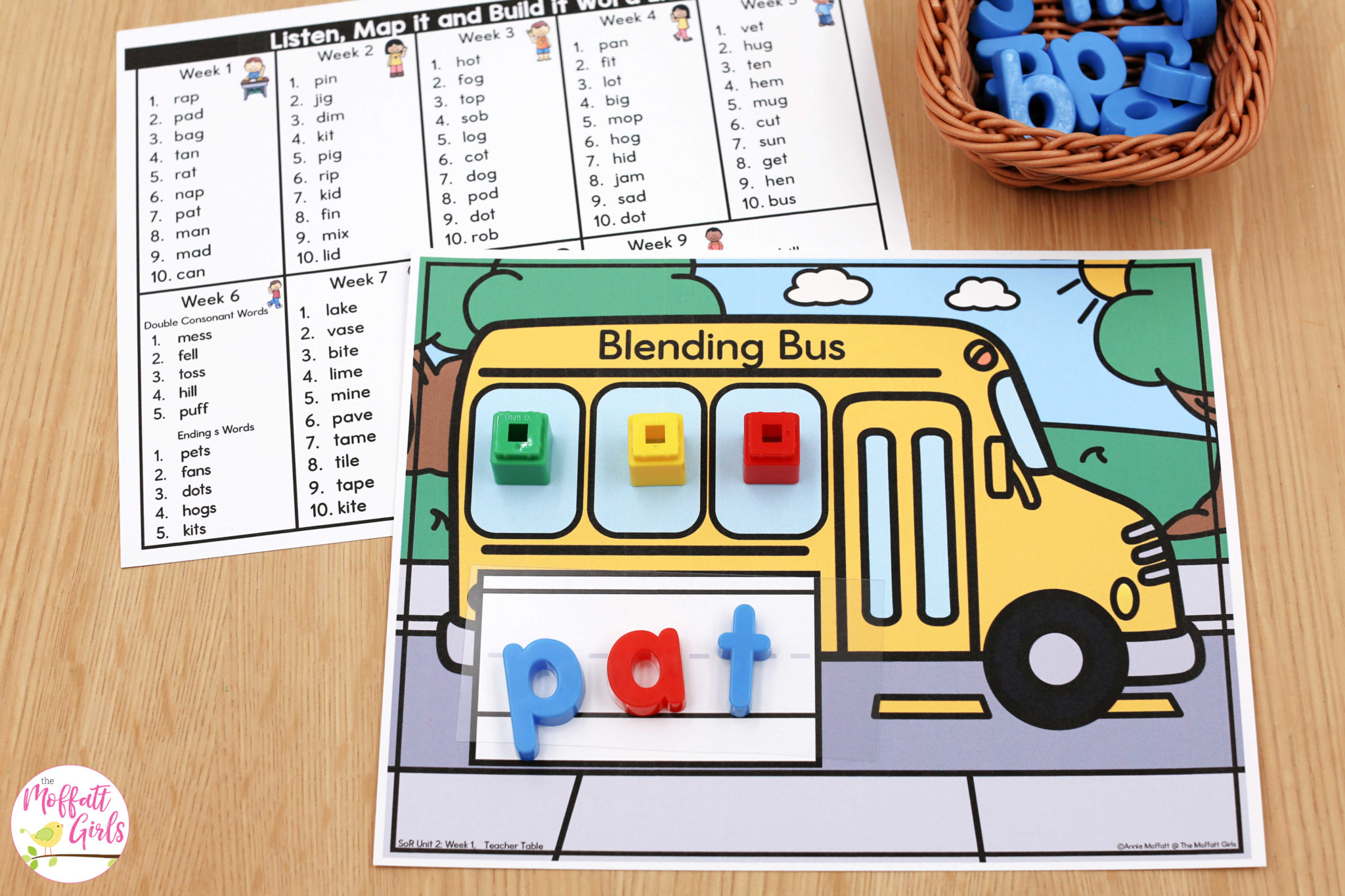
Listen, Map it & Build it Mats
Add magnet letters onto each of the letters on bottom. Then say a word and have students choose each letter to build the word.

Word Chains/Ladders
Use these for weeks 1-5 for additional word chain practice. Students say the new word and decide which sound in the word changes to build the new word.
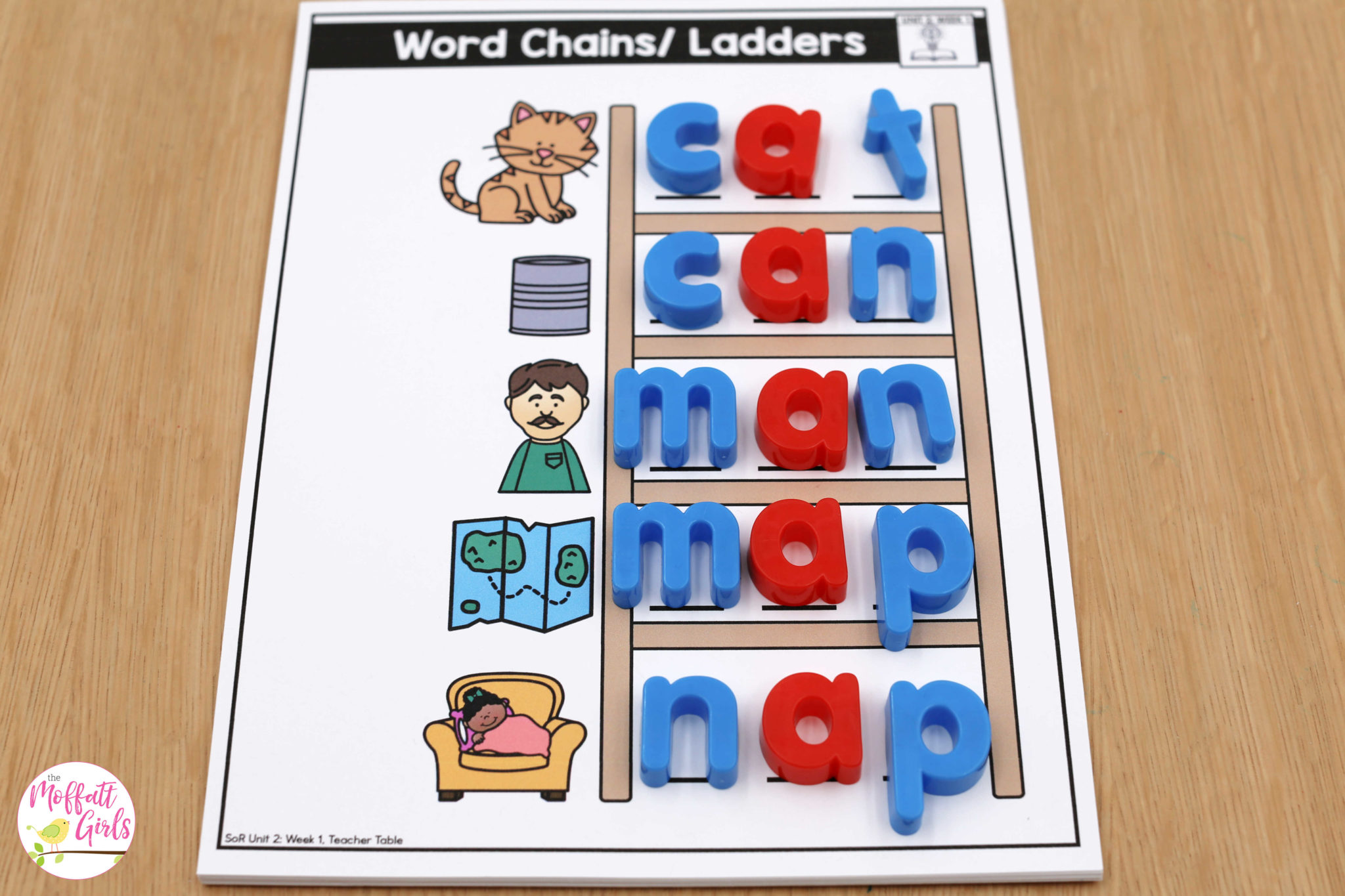
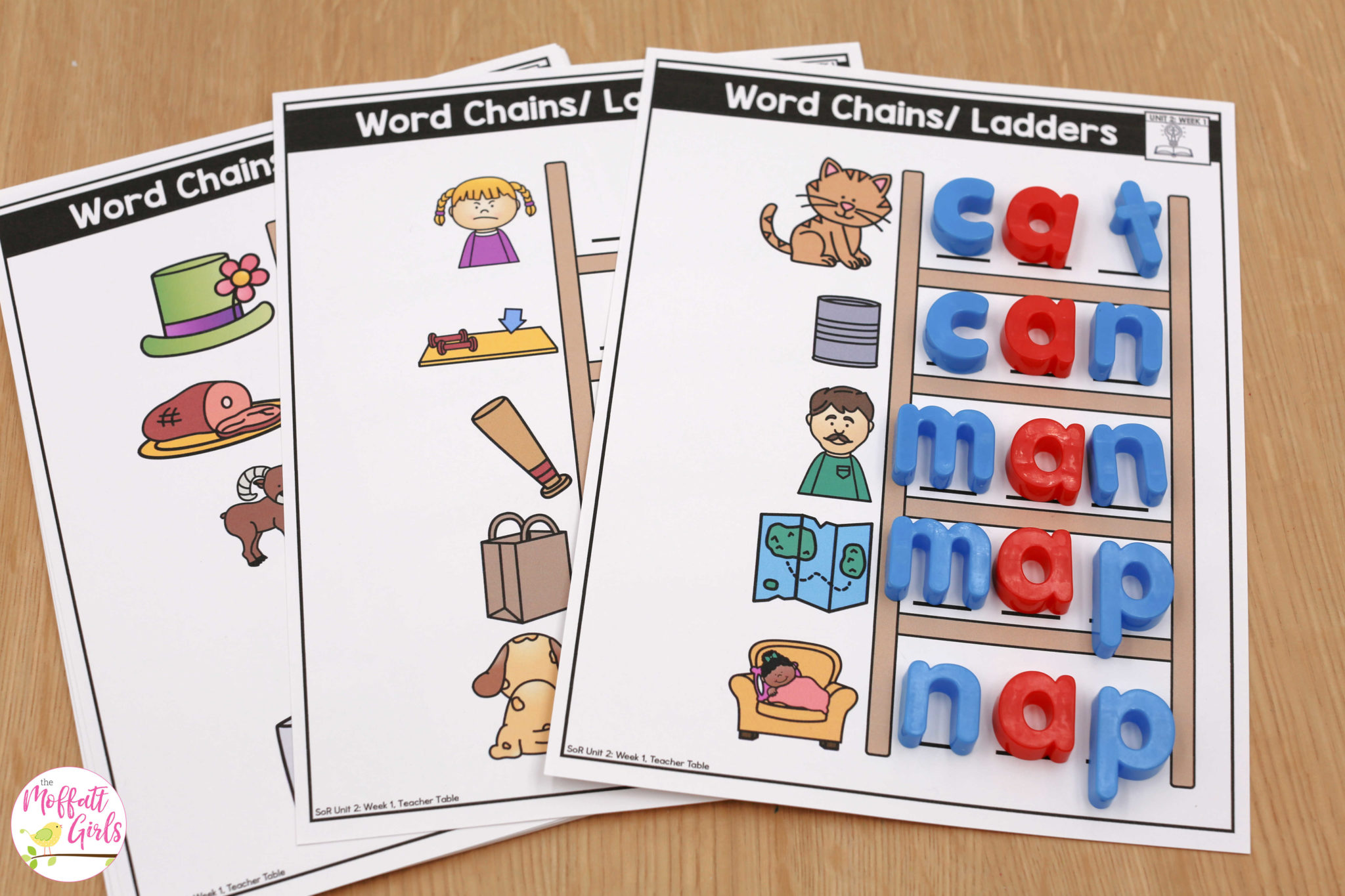
Phonics Fluency Strips
These offer extra practice for reading reading the phonics words while focusing on speed and accuracy.
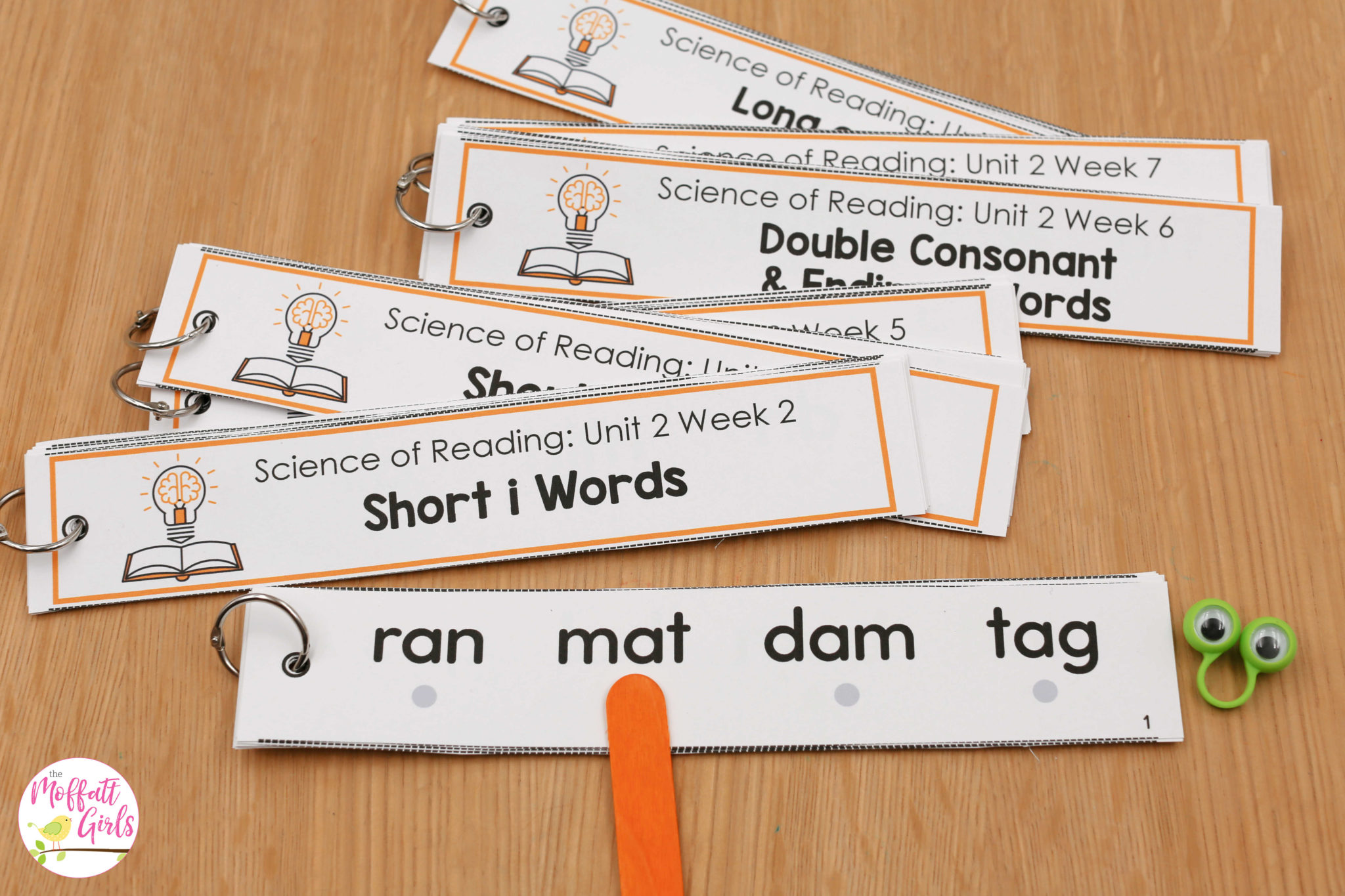
High Frequency Word Cards & Say it, Map it, Graph it Cards
Use these as a warm-up at the beginning of small group instruction and as a scaffold for struggling students.
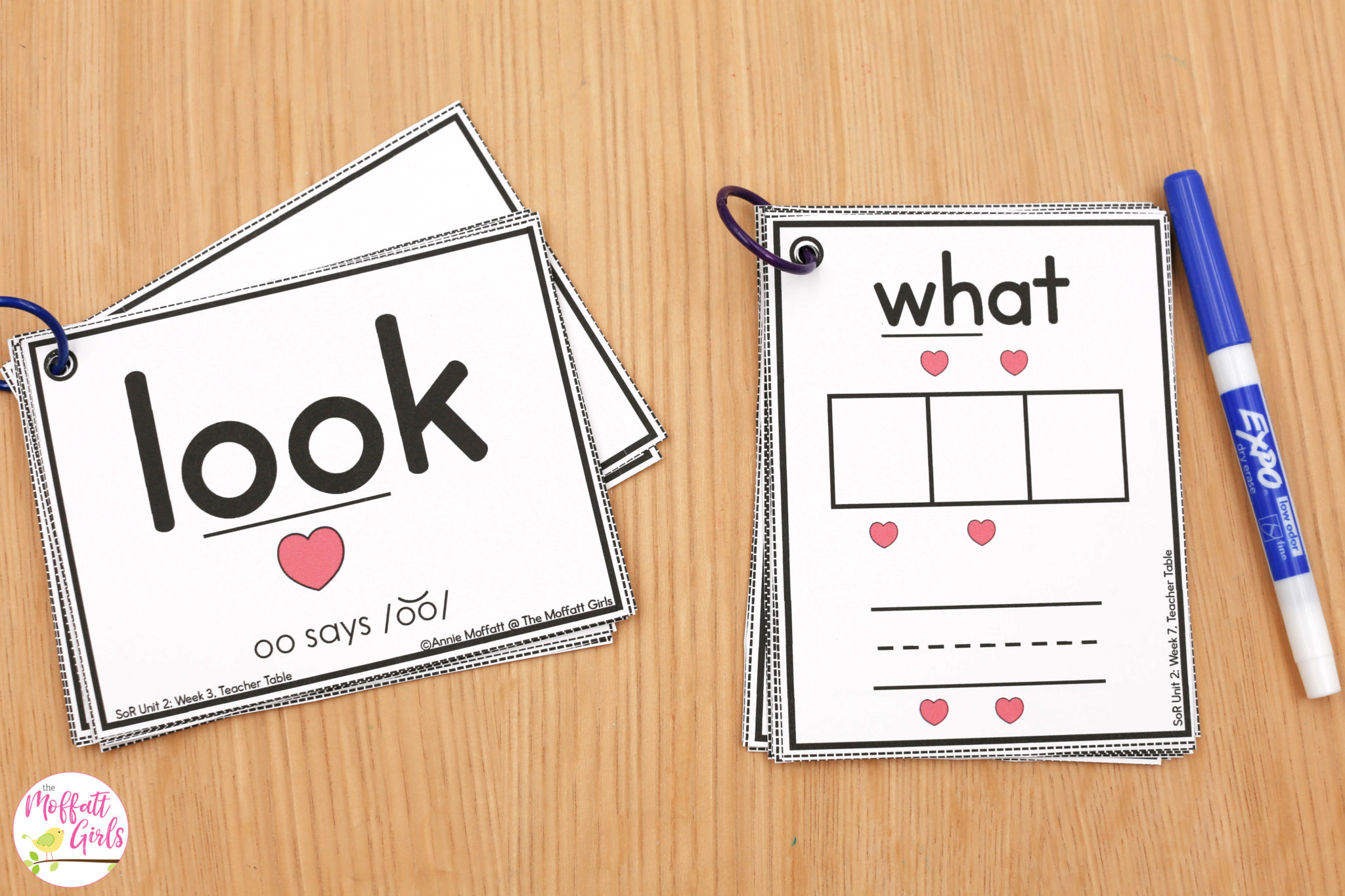
Heart Word Practice Pages
Use these for extra heart word identification and spelling practice.
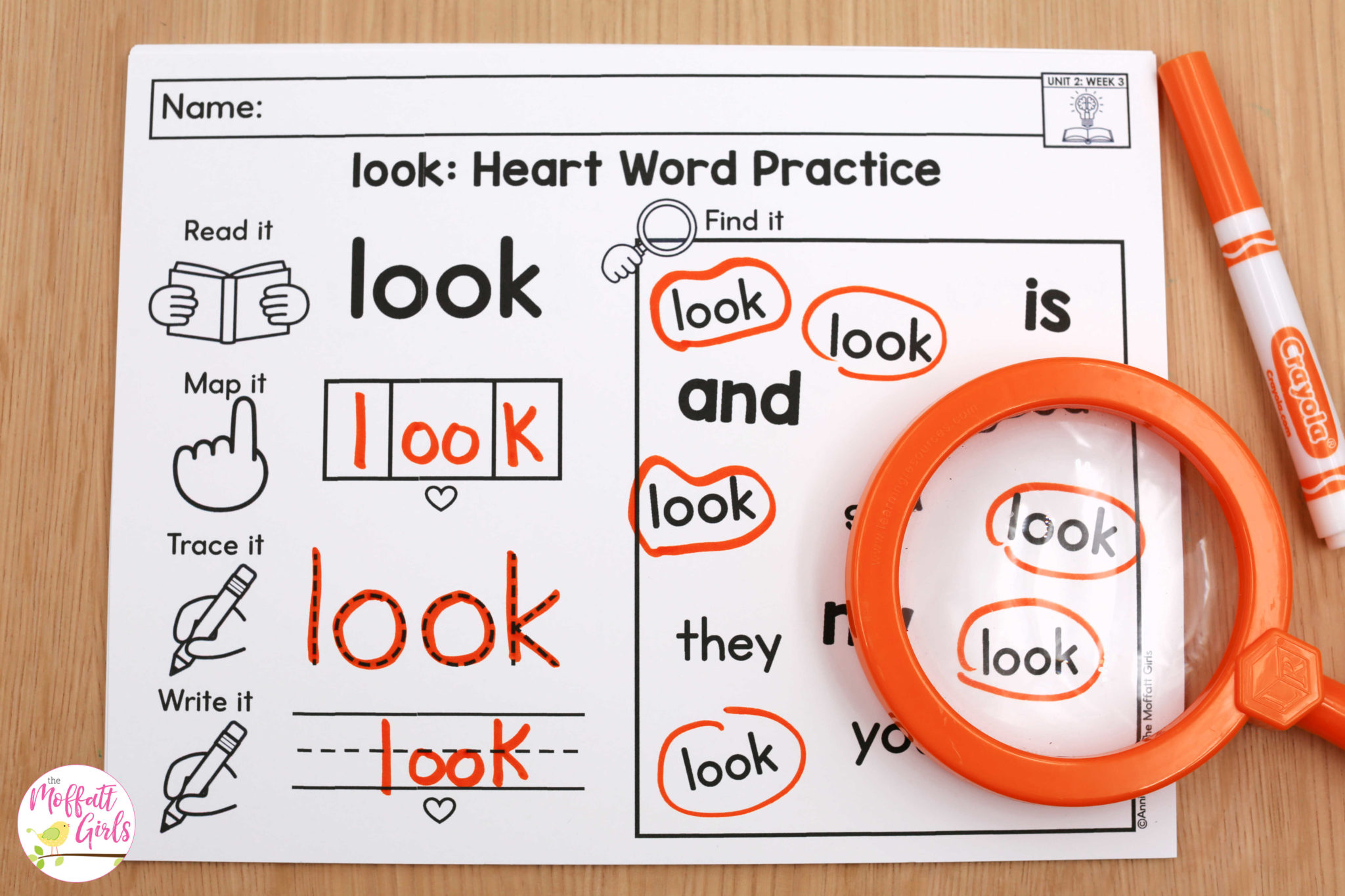
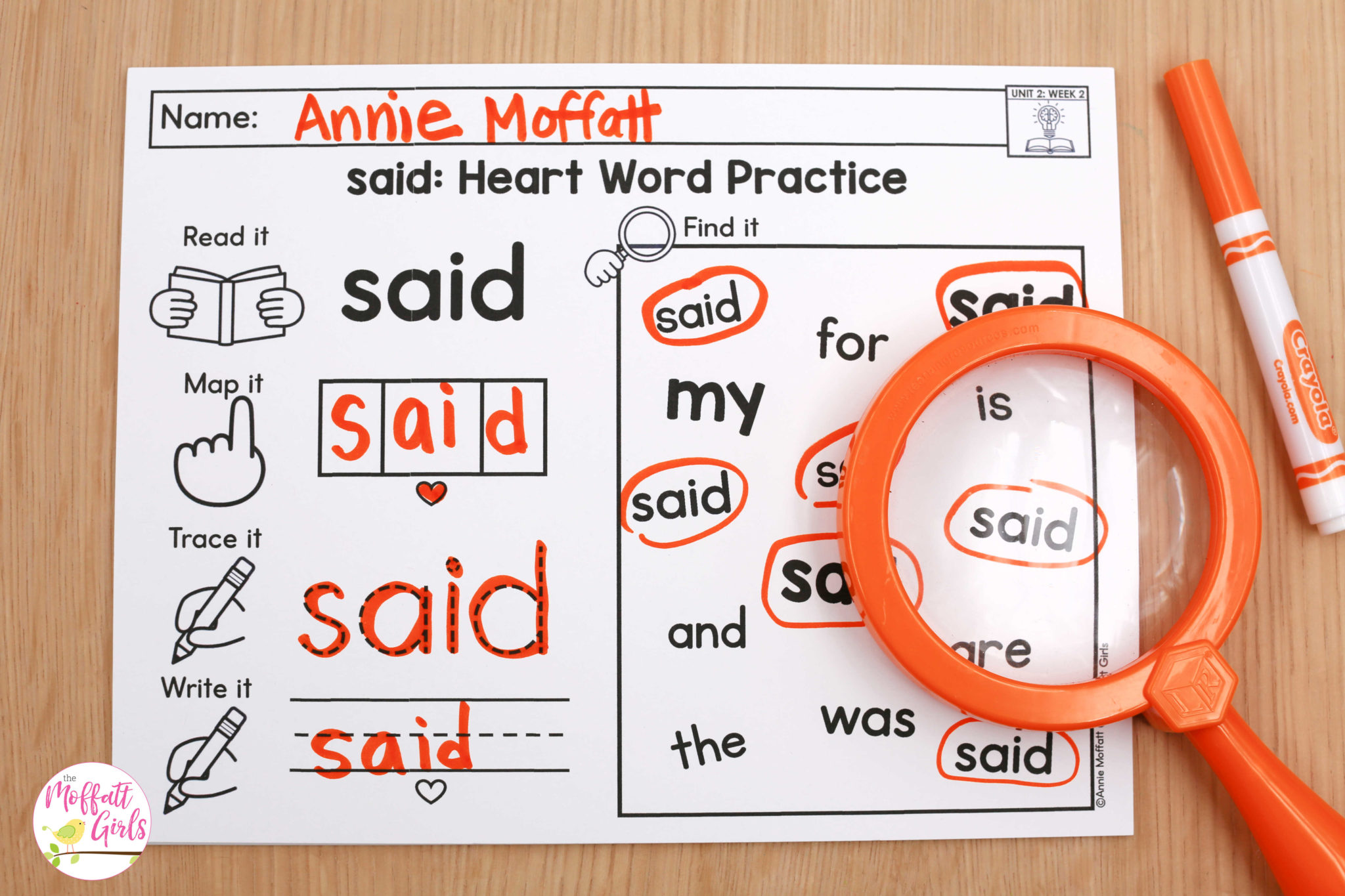
Application Strips: Phrases & Sentences
Use these in one of 3 ways:
1.Students find phonics words
2.Students find Heart Words
3.Students read full phrase or sentence.
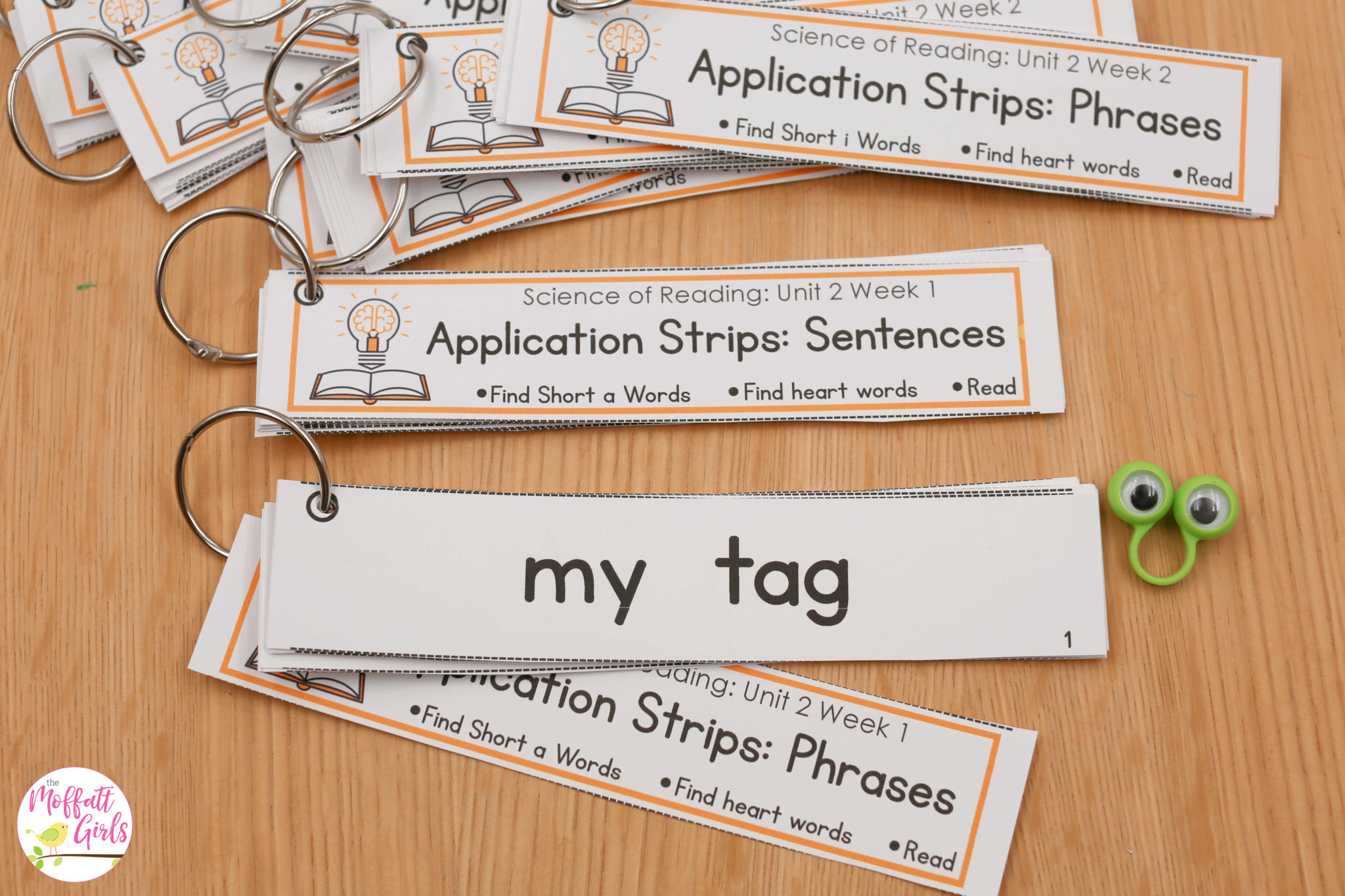
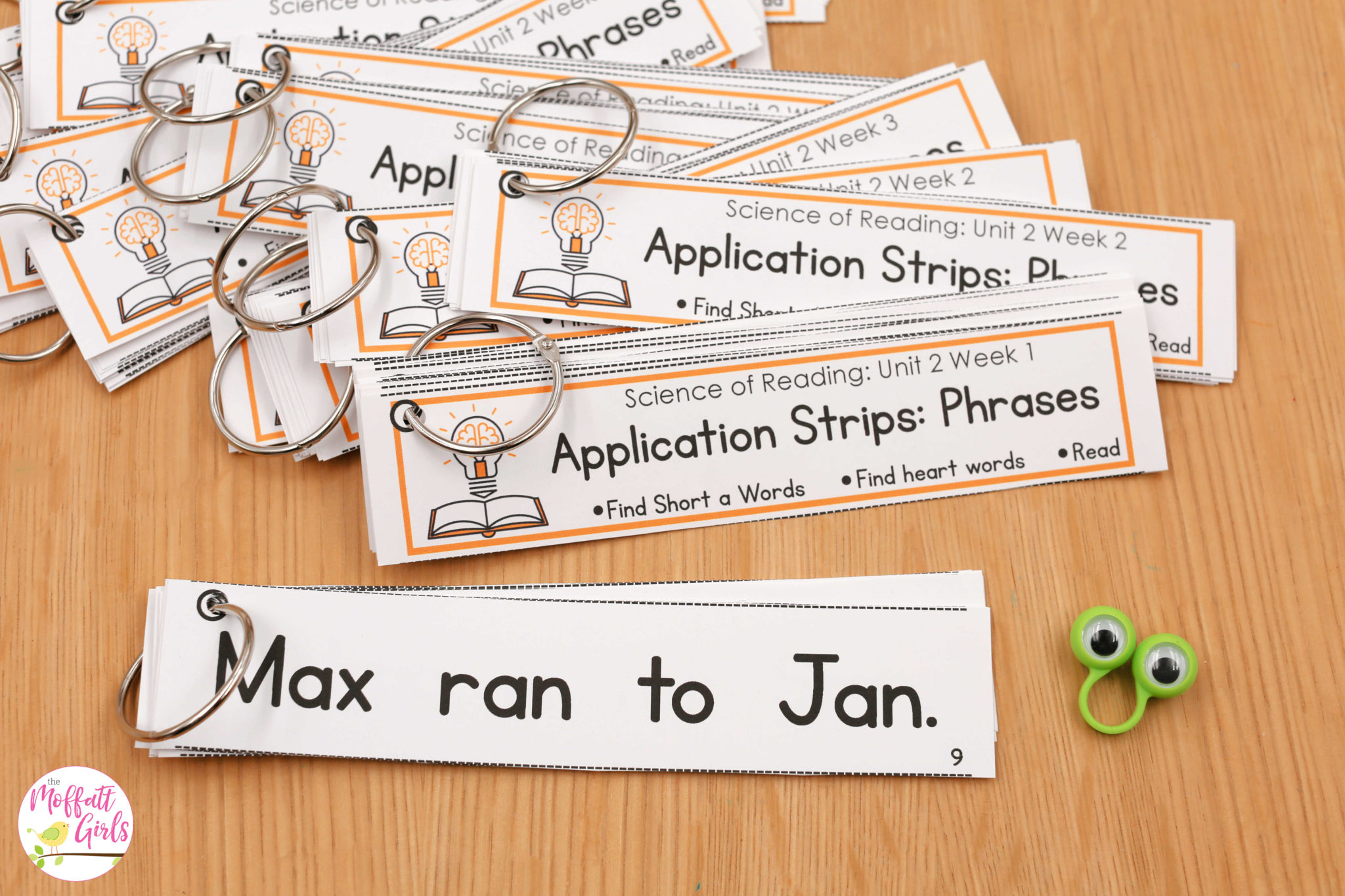
Fluency Racers (Weeks 4 & 9 for Mixed Review)
Use these to build fluency by saying the letter sounds or heart words quickly and with accuracy.
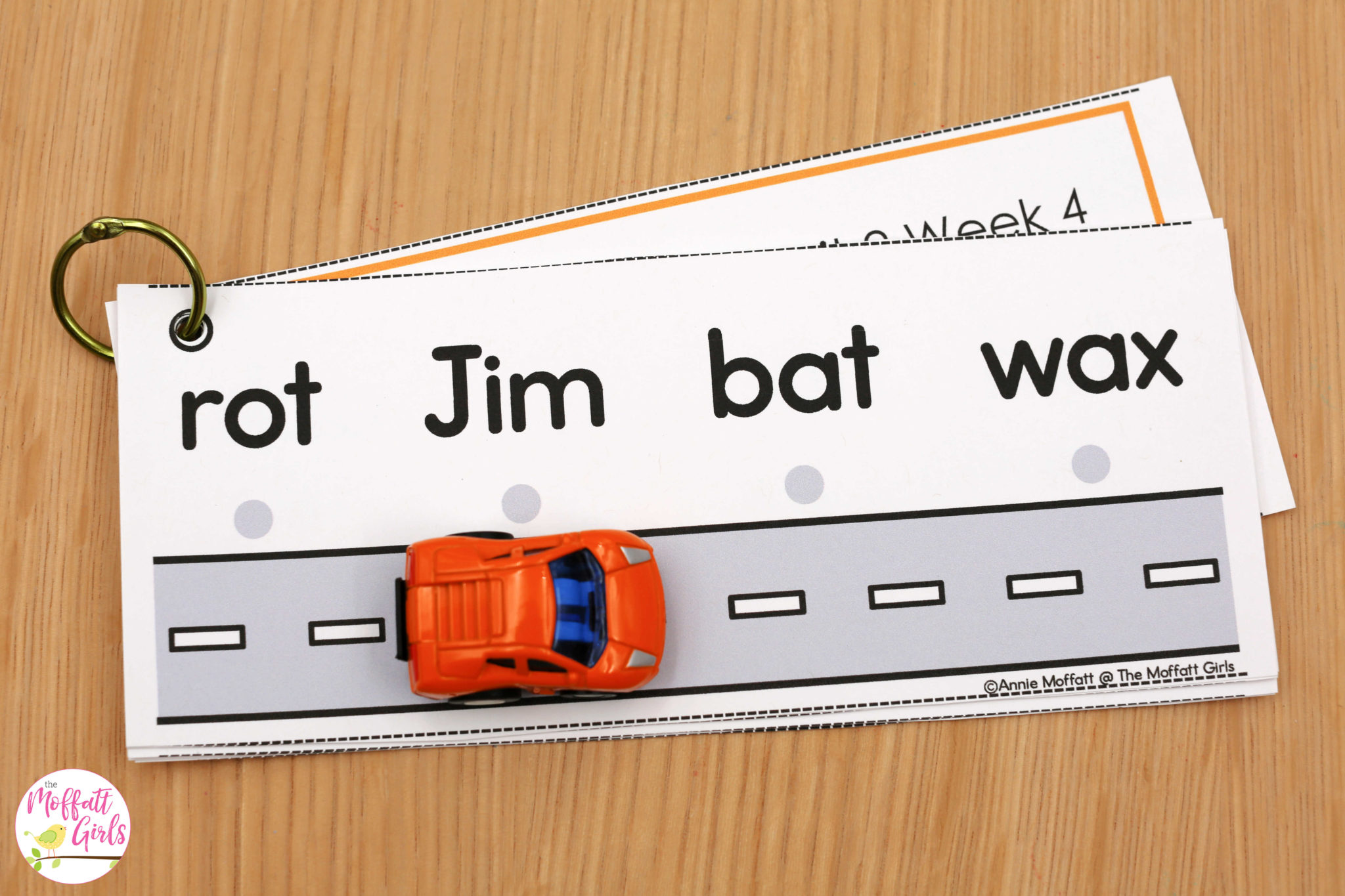
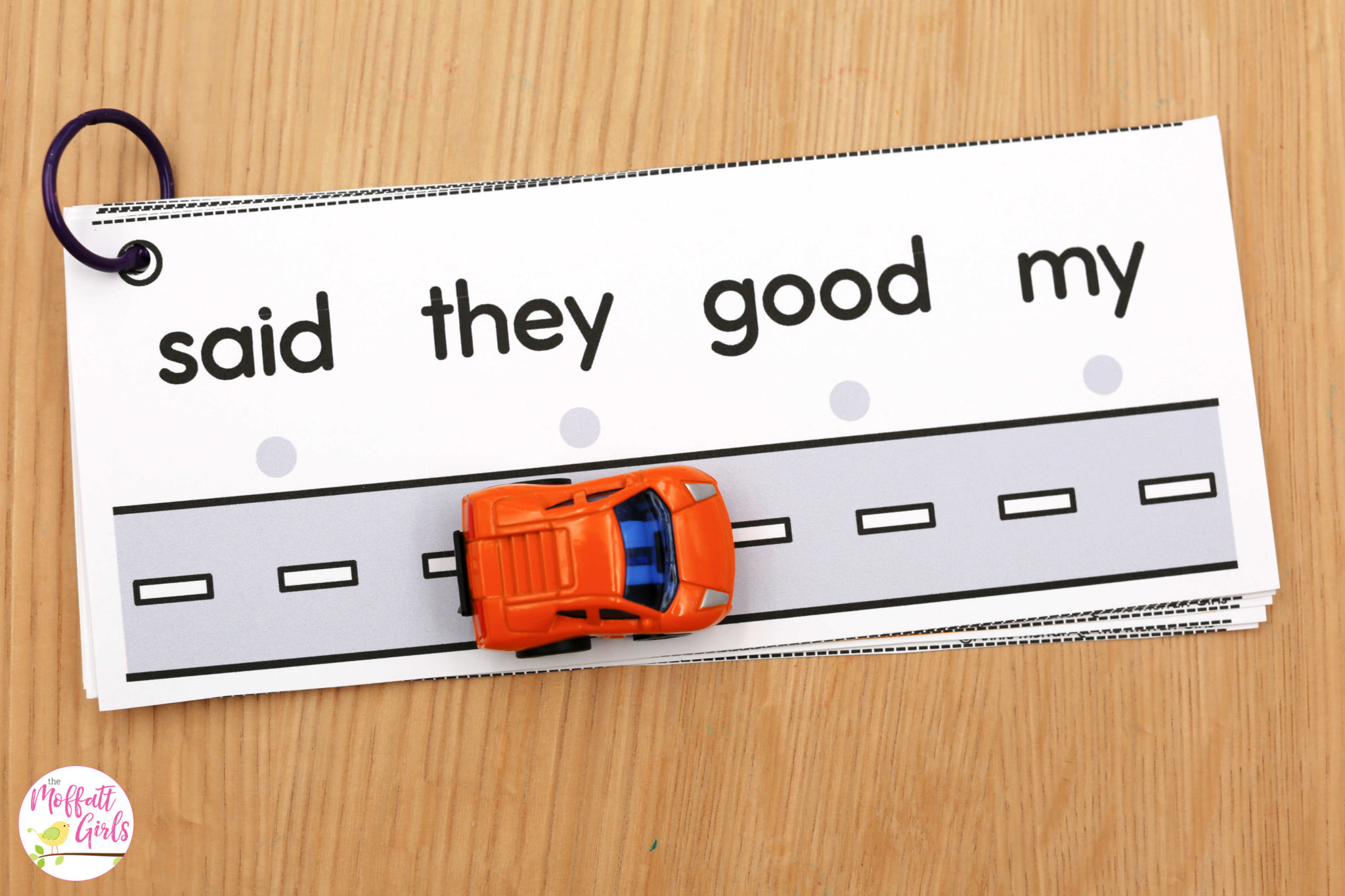
Listen & Write Dictation Sentences:
Use for students who are ready to encode 3- to 5-word sentences.
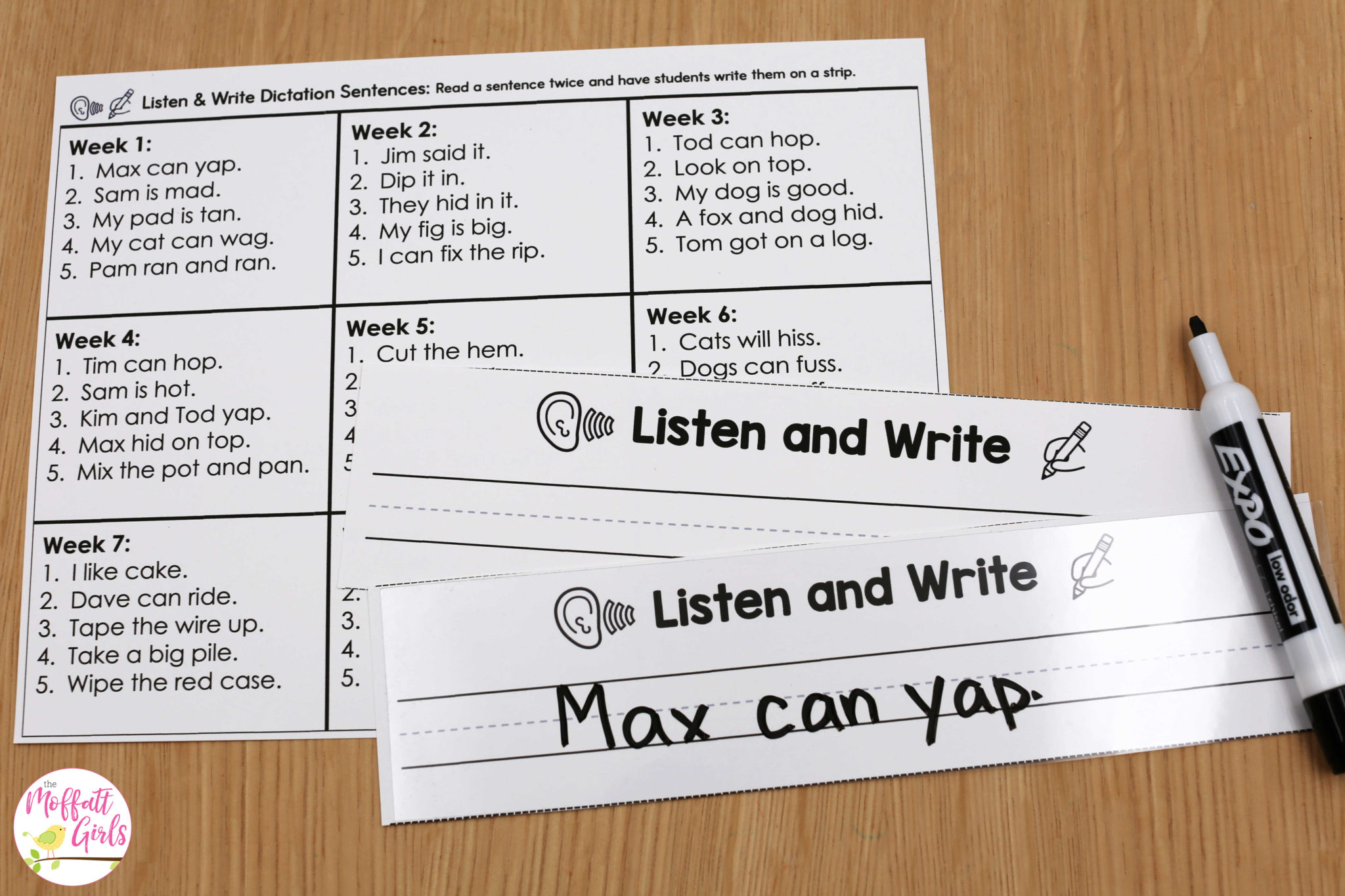
Ending Sounds of S
Use for students who need extra practice with the ending sounds of s (voiced and unvoiced).
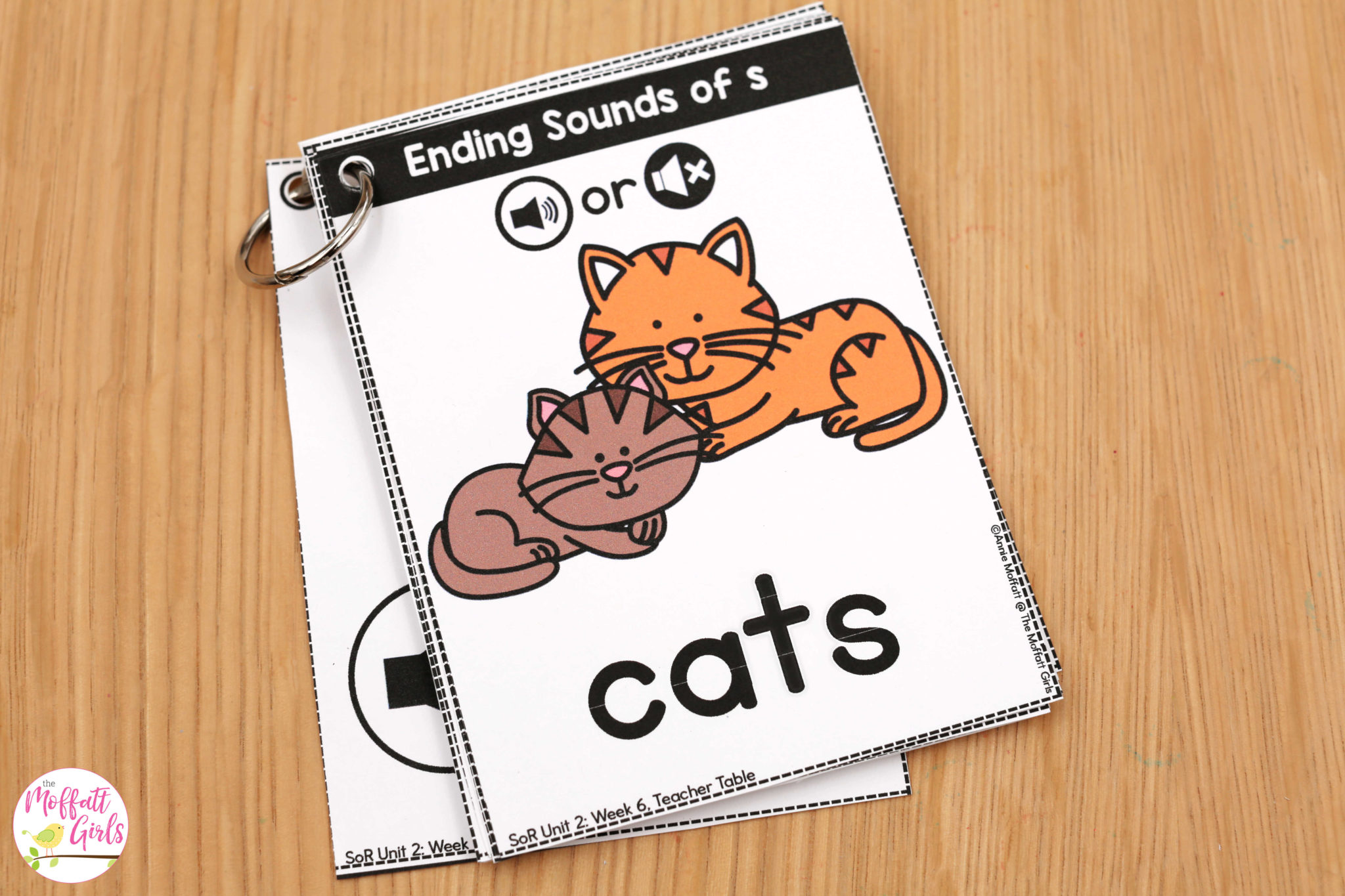
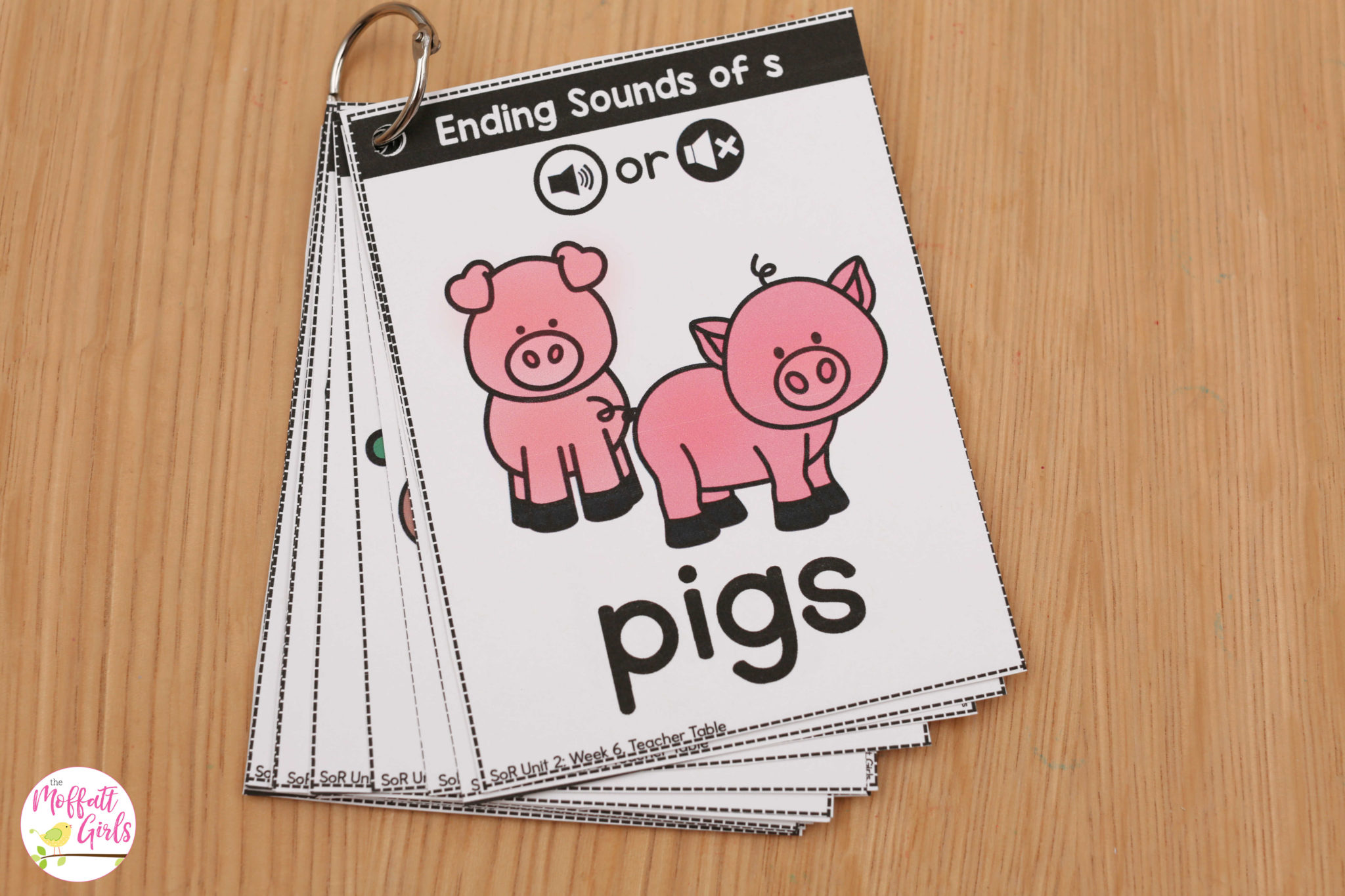
Say it, Spin it, Trace it: Letter Reversal Practice
Use these for students who struggle with letter reversal for the letters b, d, p and q.
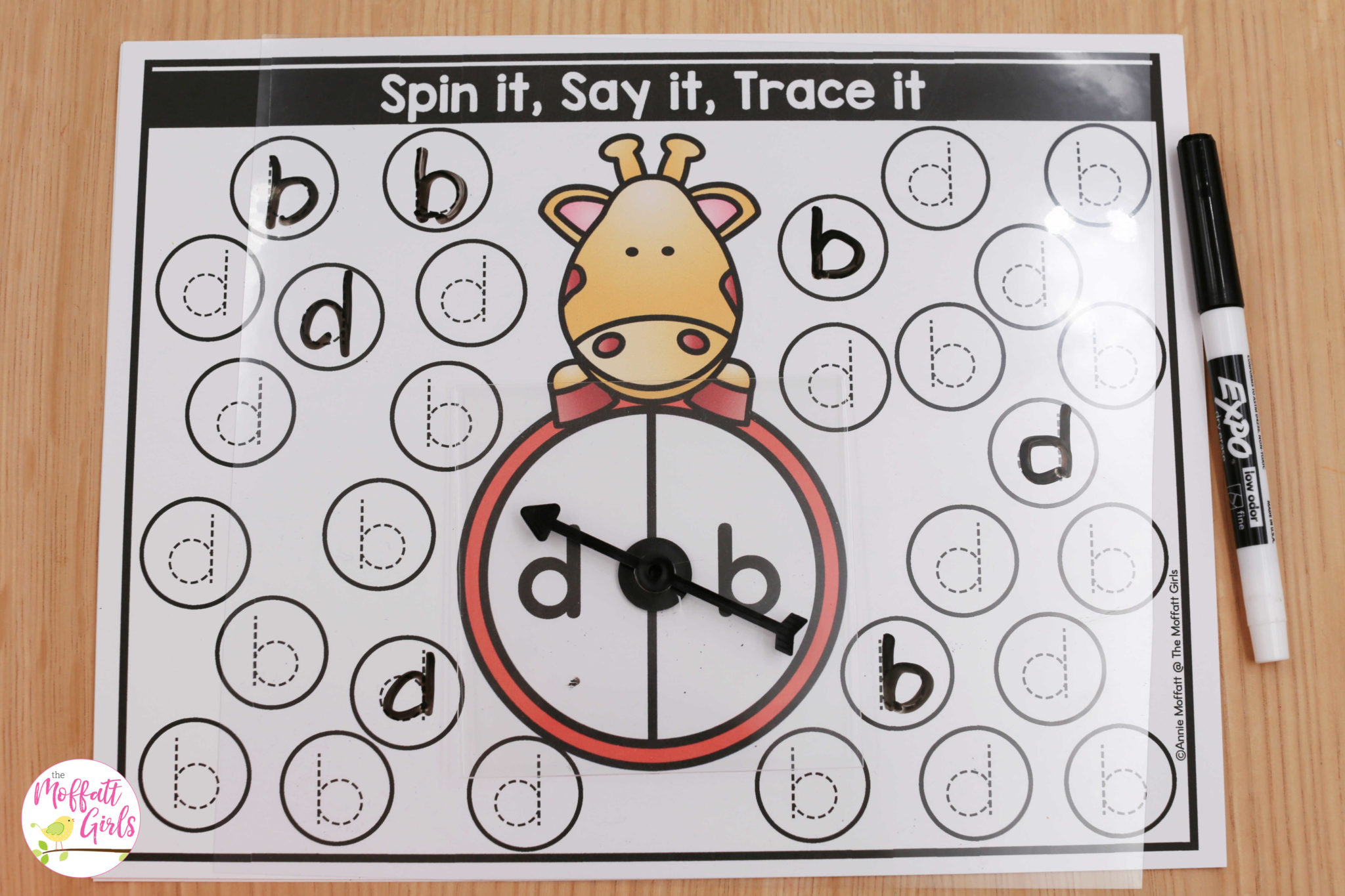
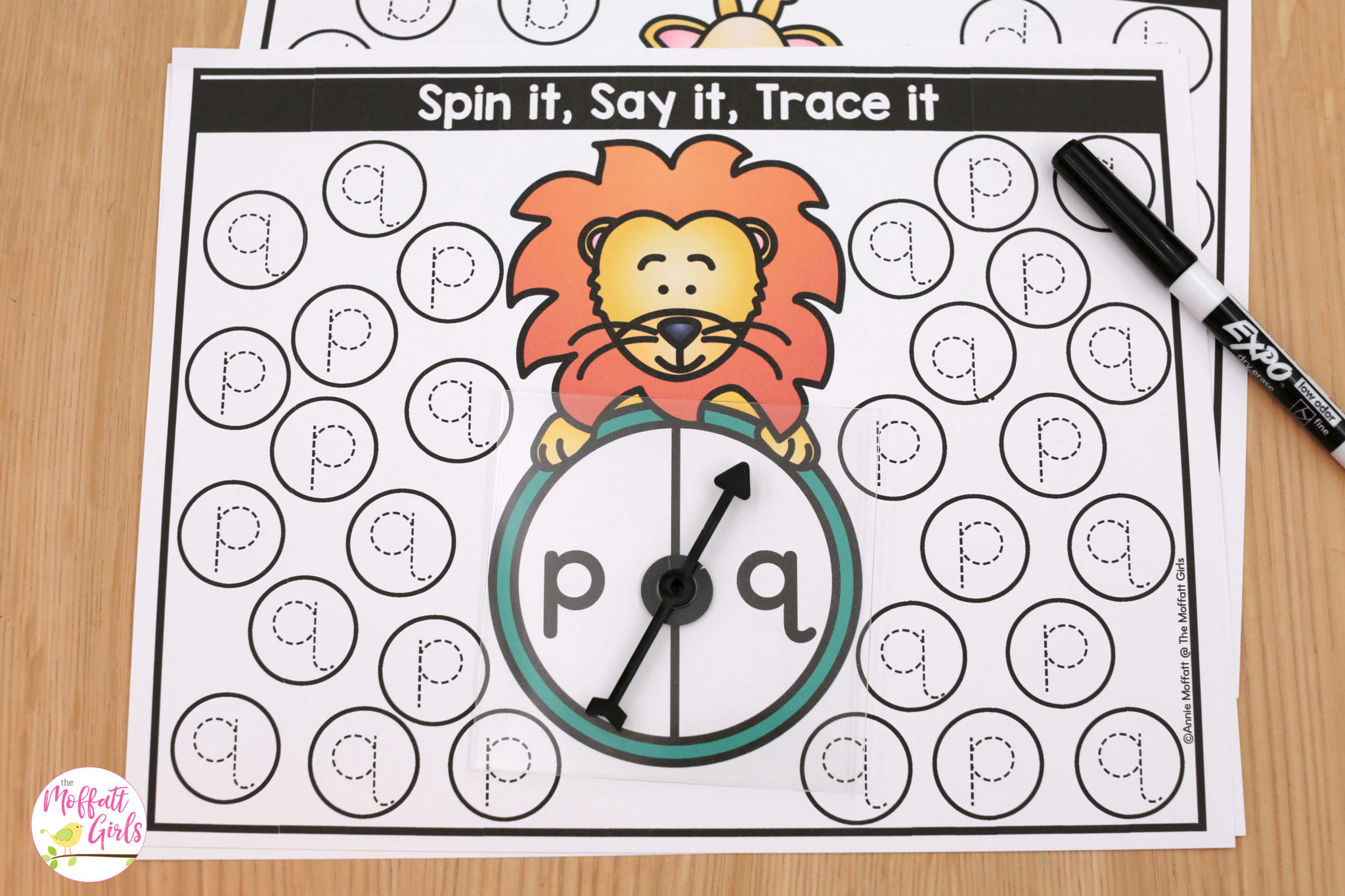
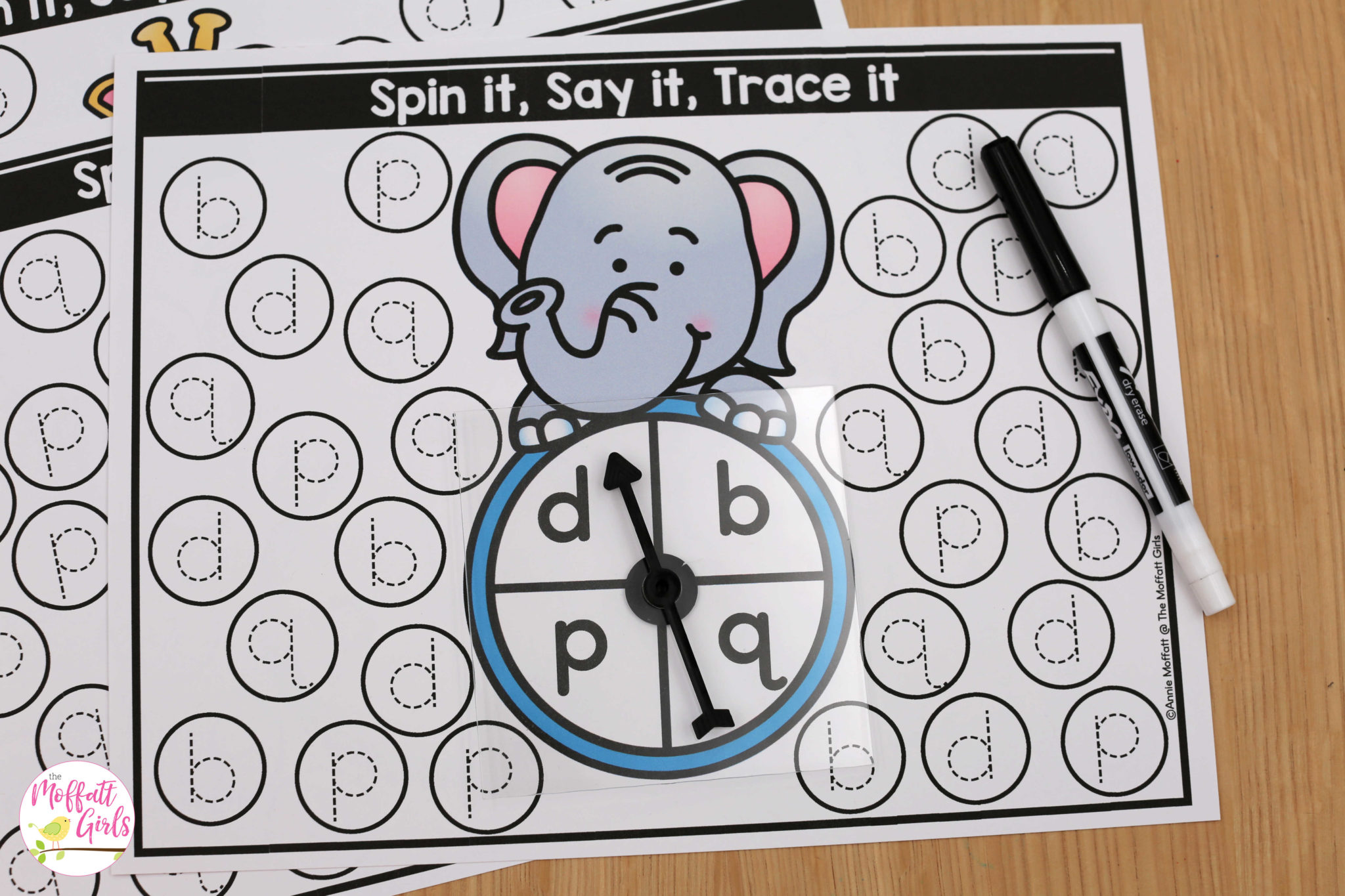
Decodable Readers
This is one of my favorite parts of this unit! Weeks 1-3 and 5-8 each have two 4-page books (one page printed front and back) to re-enforce the phonics skills and high frequency words learned for each. Weeks 4 and 9 have three 4-page books for review. Furthermore, they build confidence in reading by allowing students to read decodable text in a fun short story.
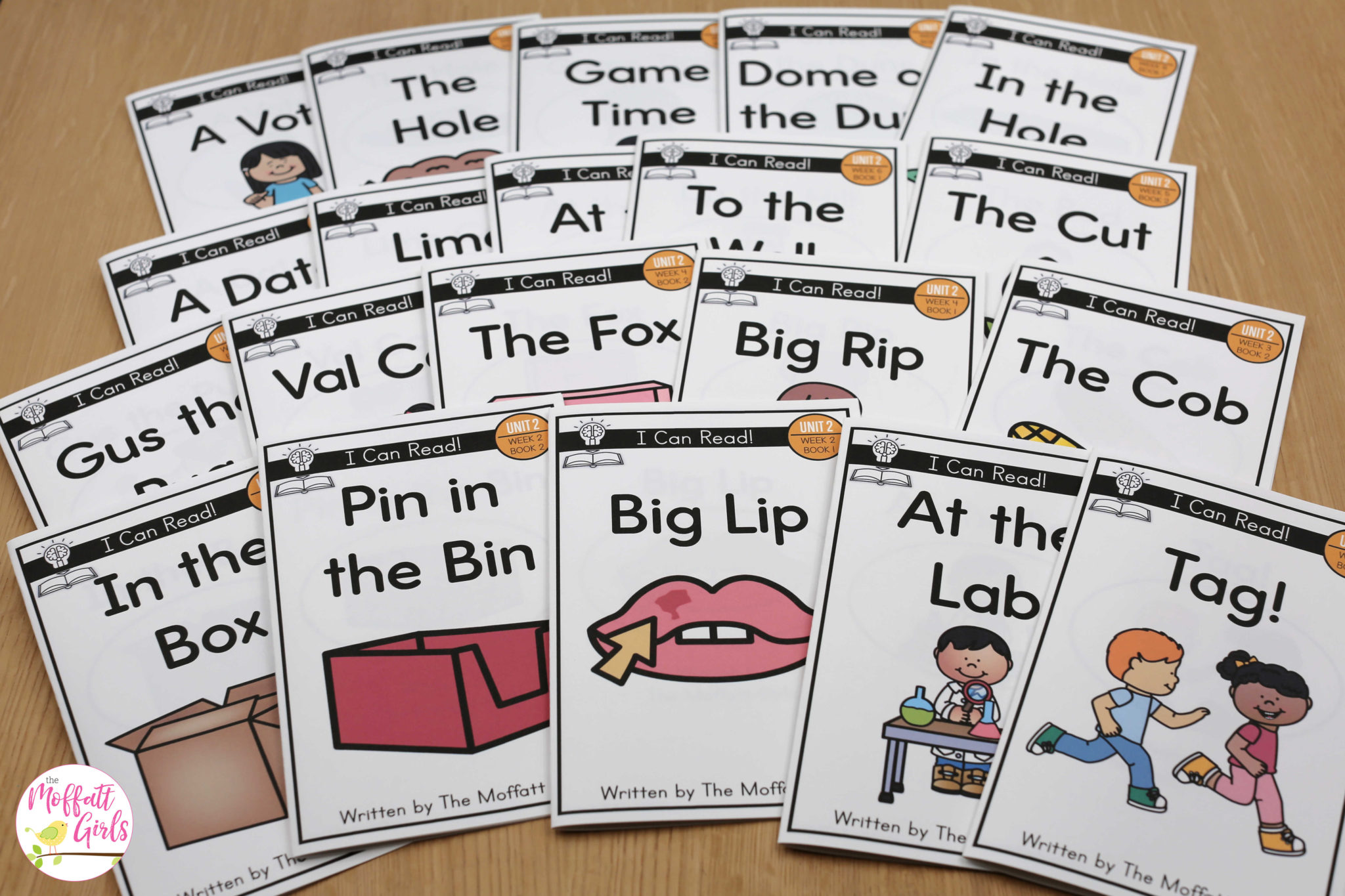
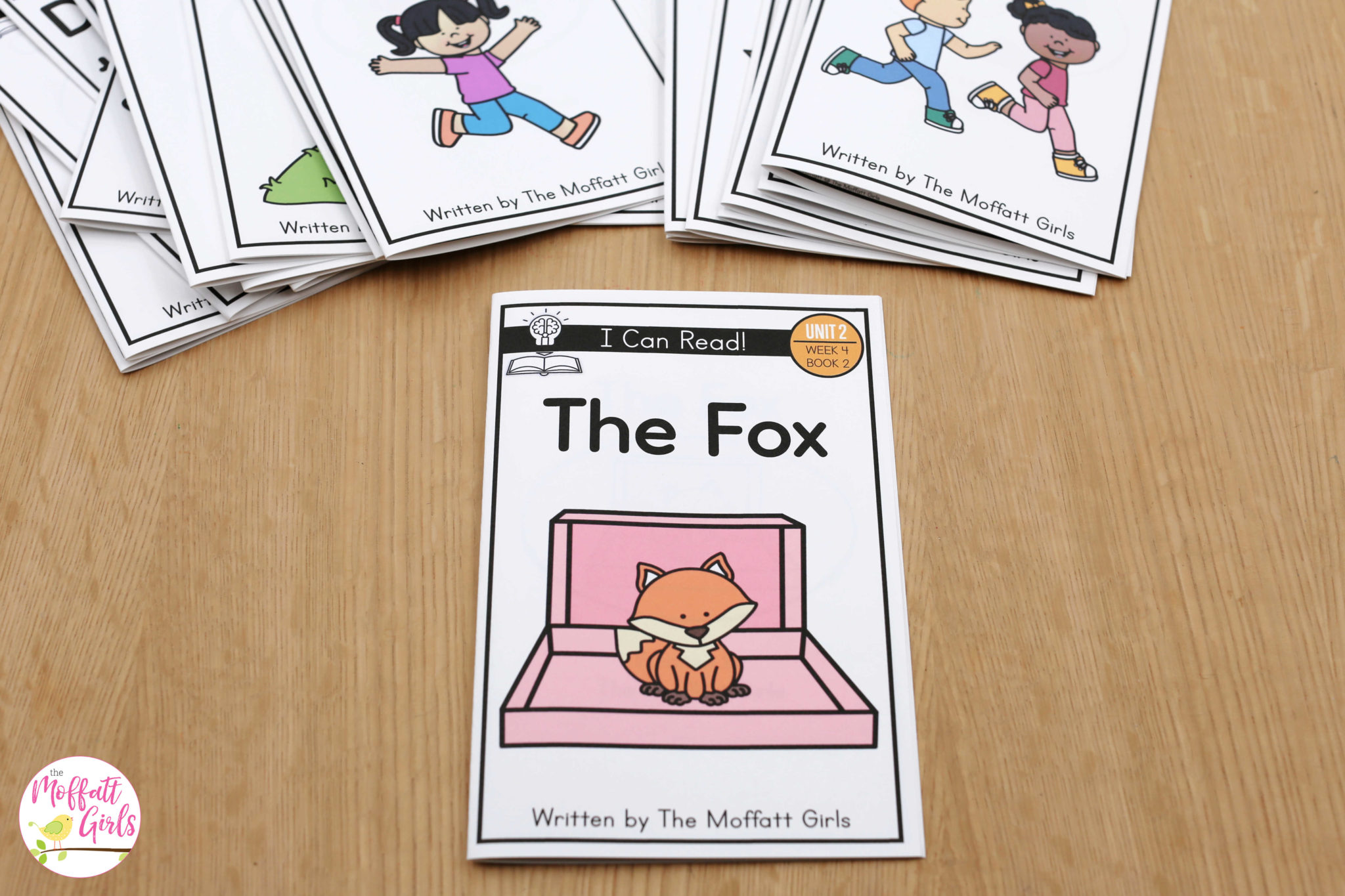
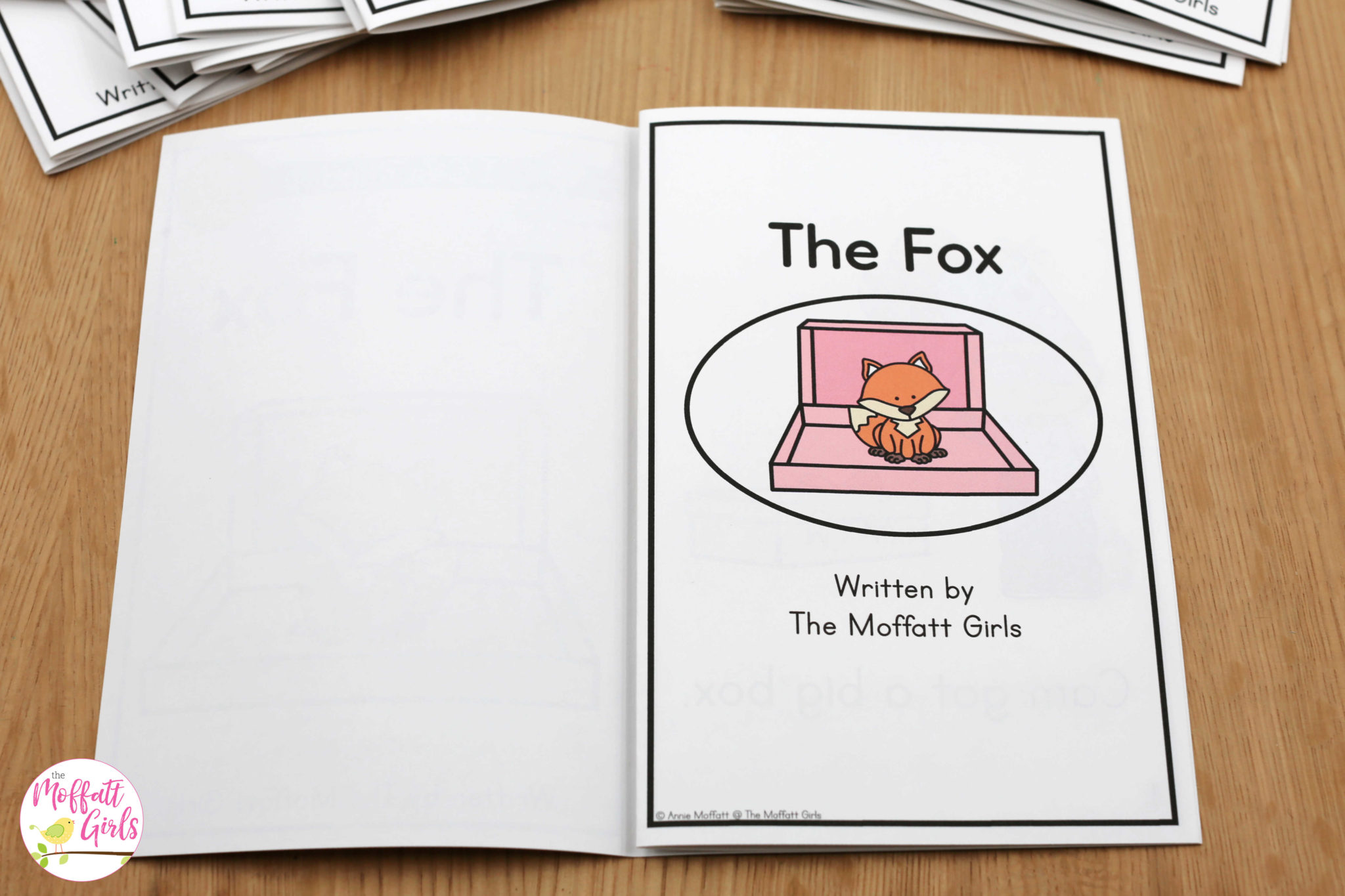
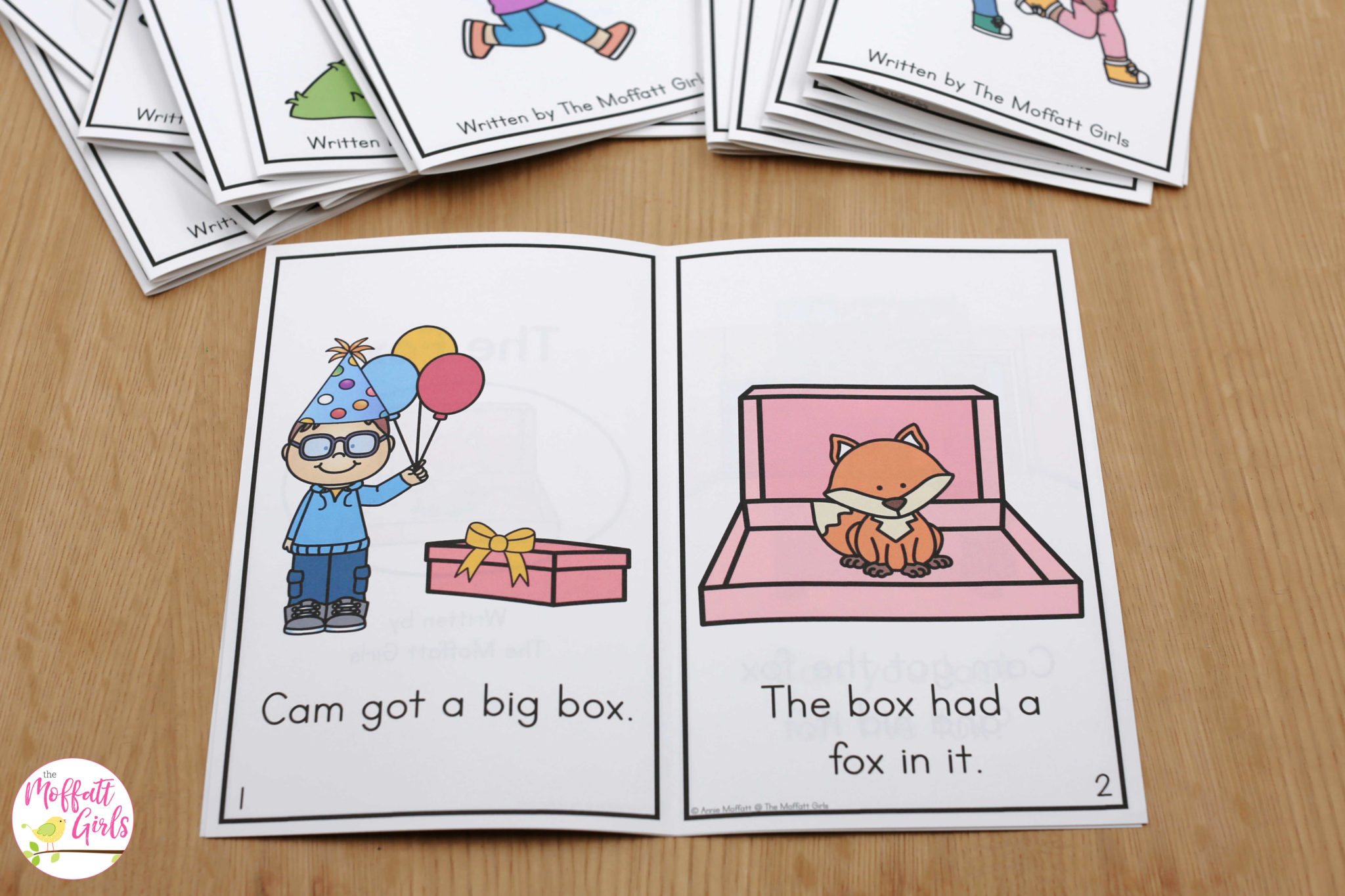
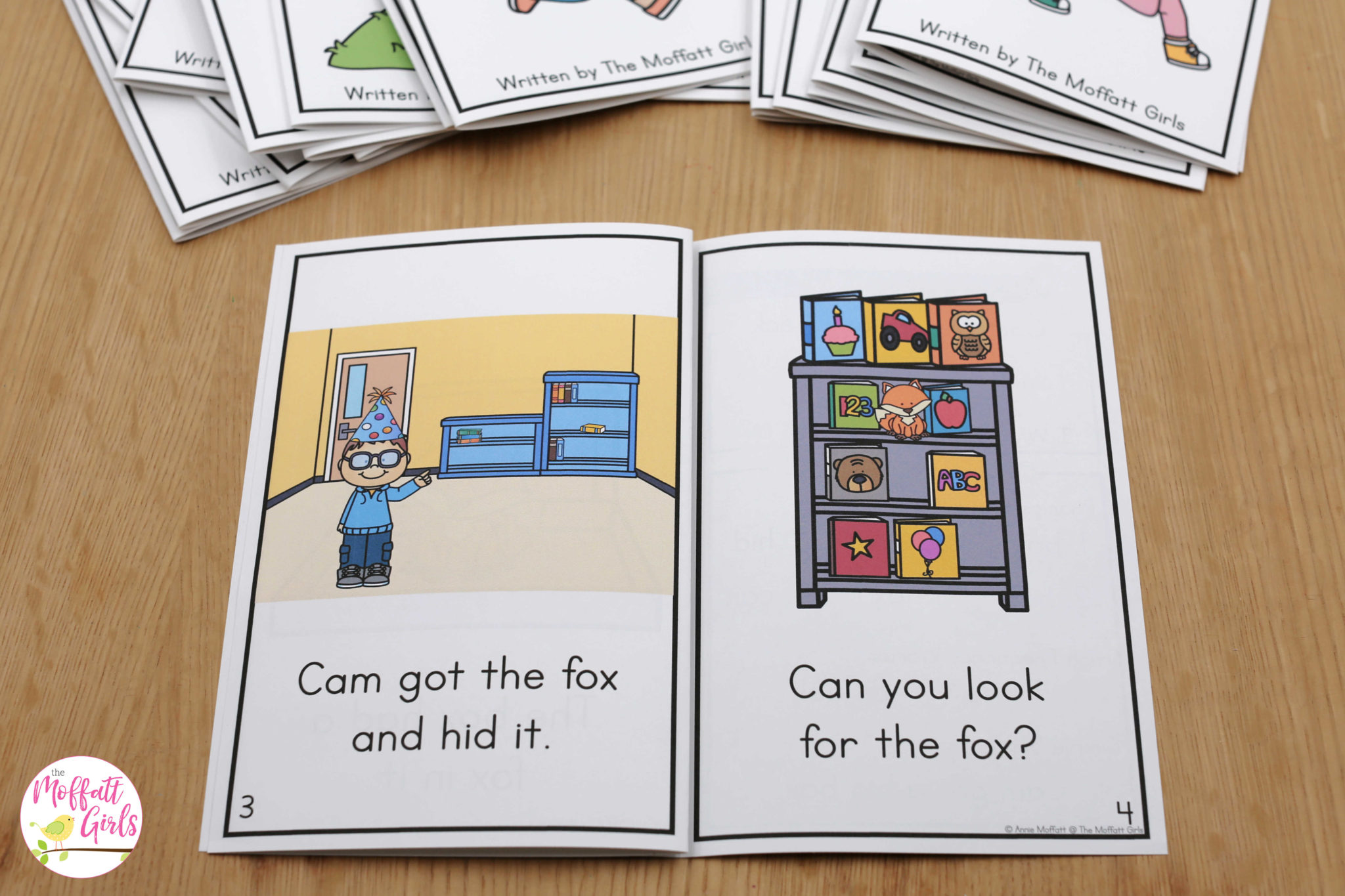
After students have read the book, follow up with simple comprehension questions along with a dictation hear & write activity.
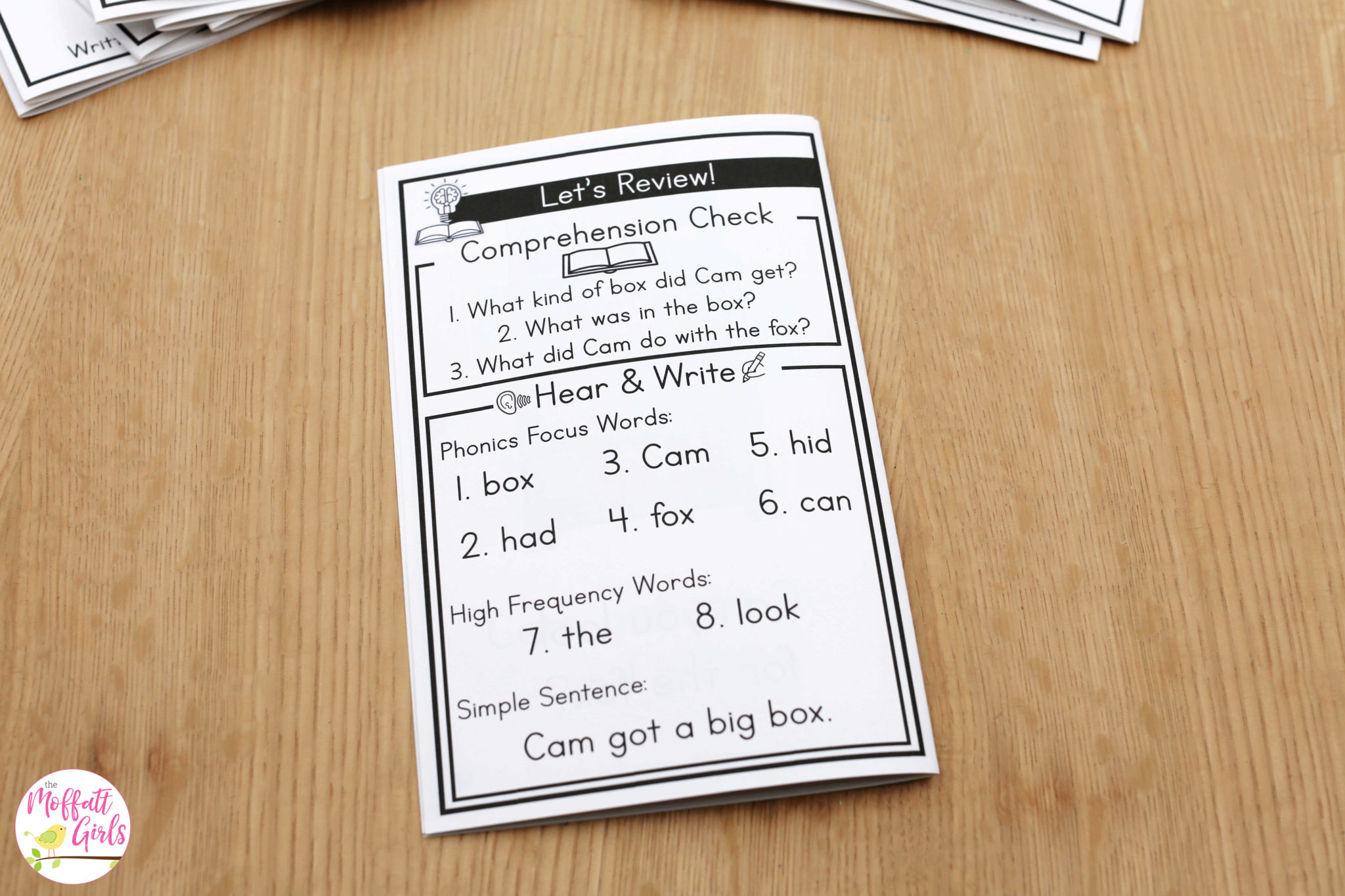
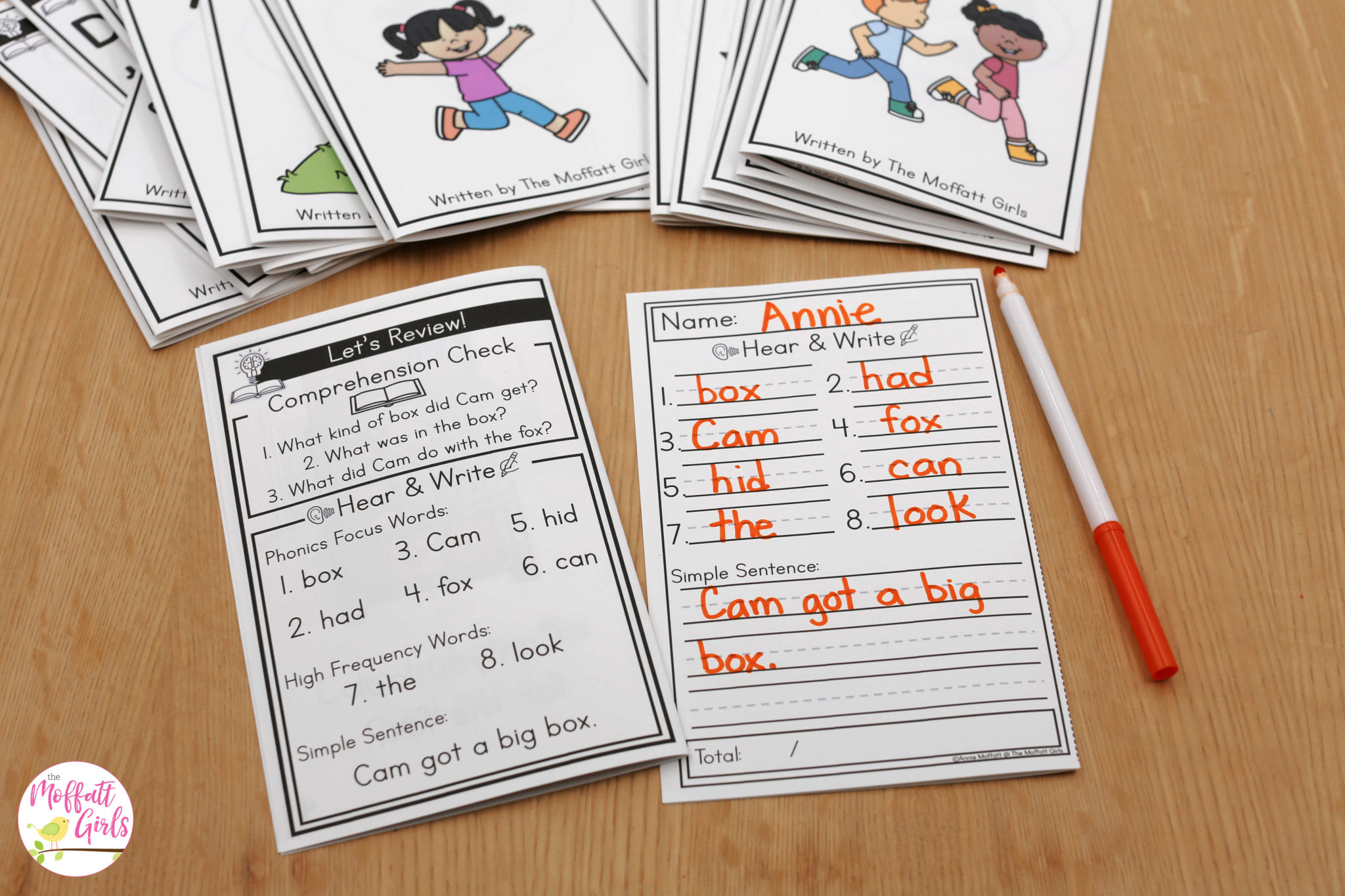
Phonics Word Practice Books
Weeks 1-3 and 5-8 each have two 4-page books (one page printed front and back) to re-enforce the phonics skills learned for each. Weeks 4 and 9 have three 4-page books for review.
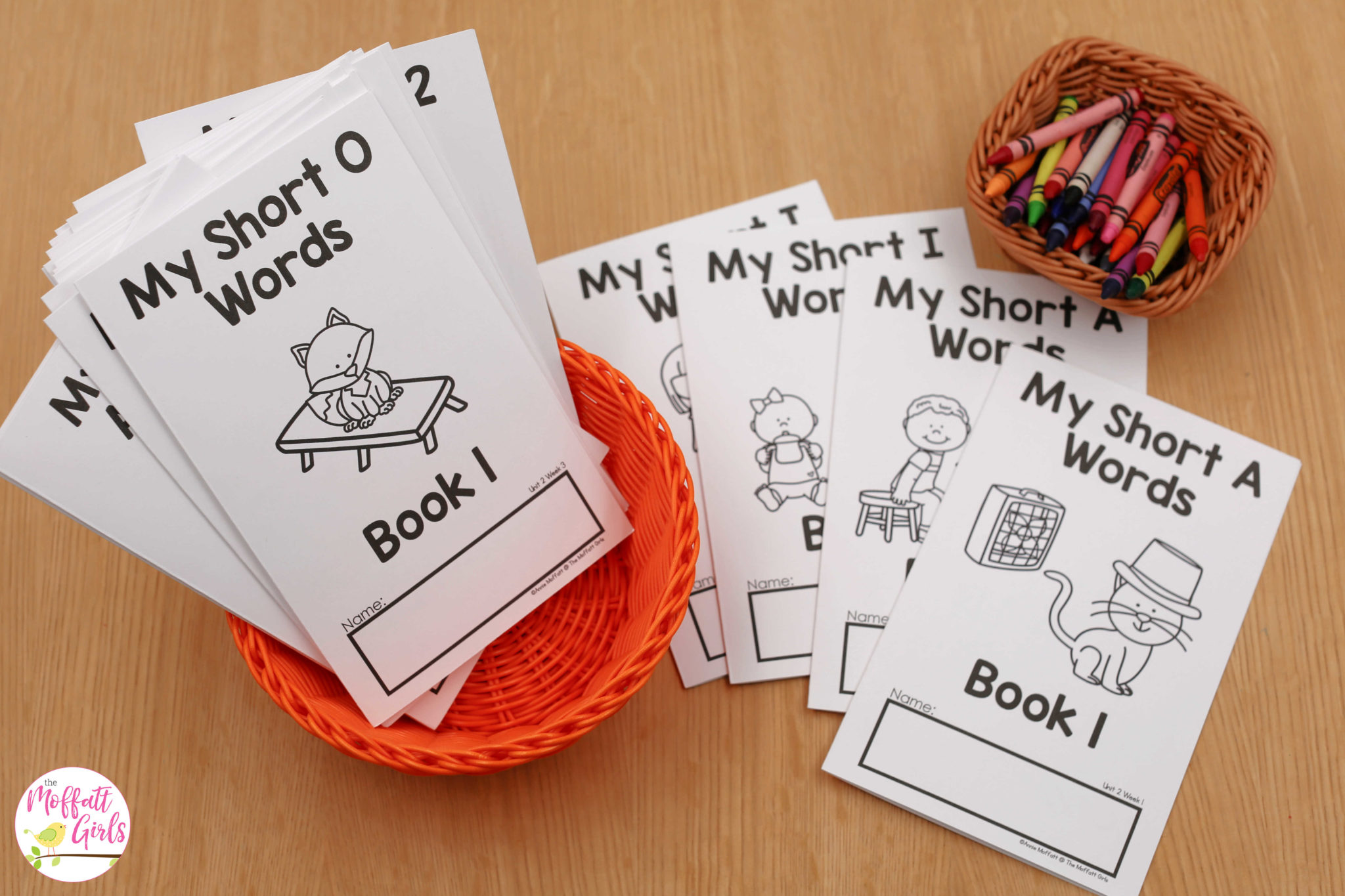
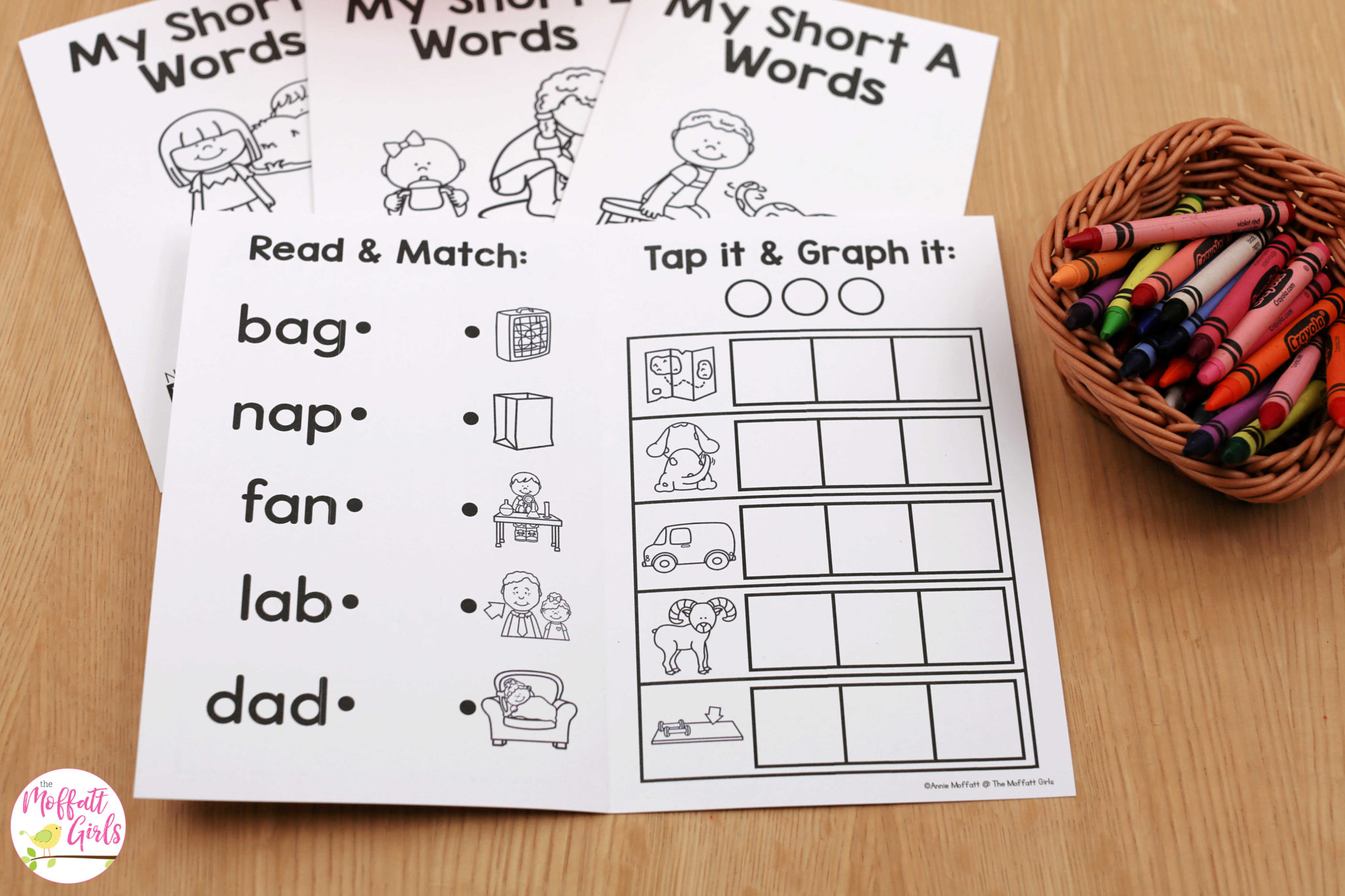
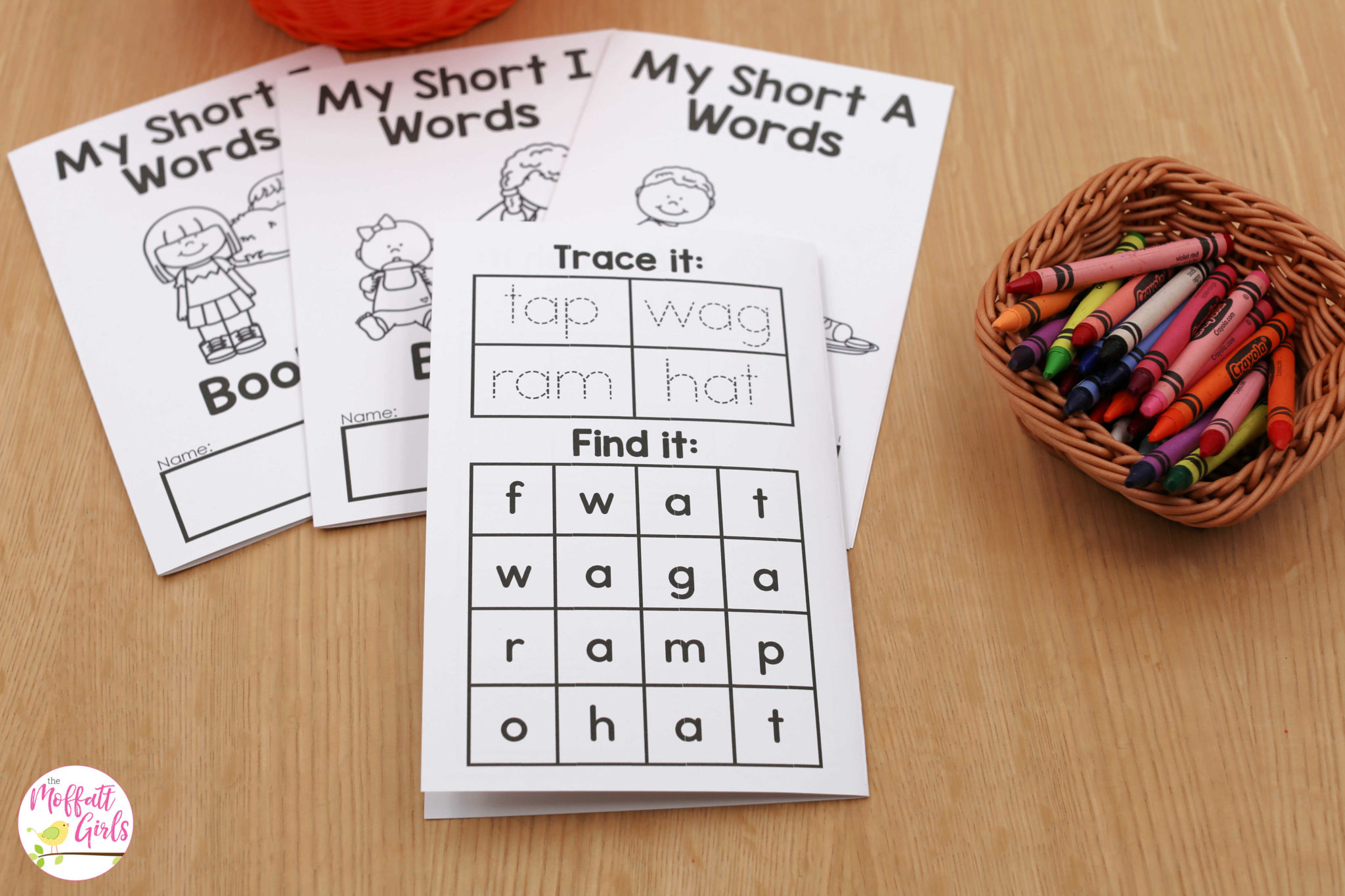
Pathway to Fluency Unit 2 My Handwriting Book
This book offers students an opportunity to practice proper letter formation while also practicing phonics skills. You can choose to use these books at the Teacher Table to monitor mastery or as extra practice for students who have finished the center work. Each week includes 4 pages that progress to provide spiral review throughout the weeks.
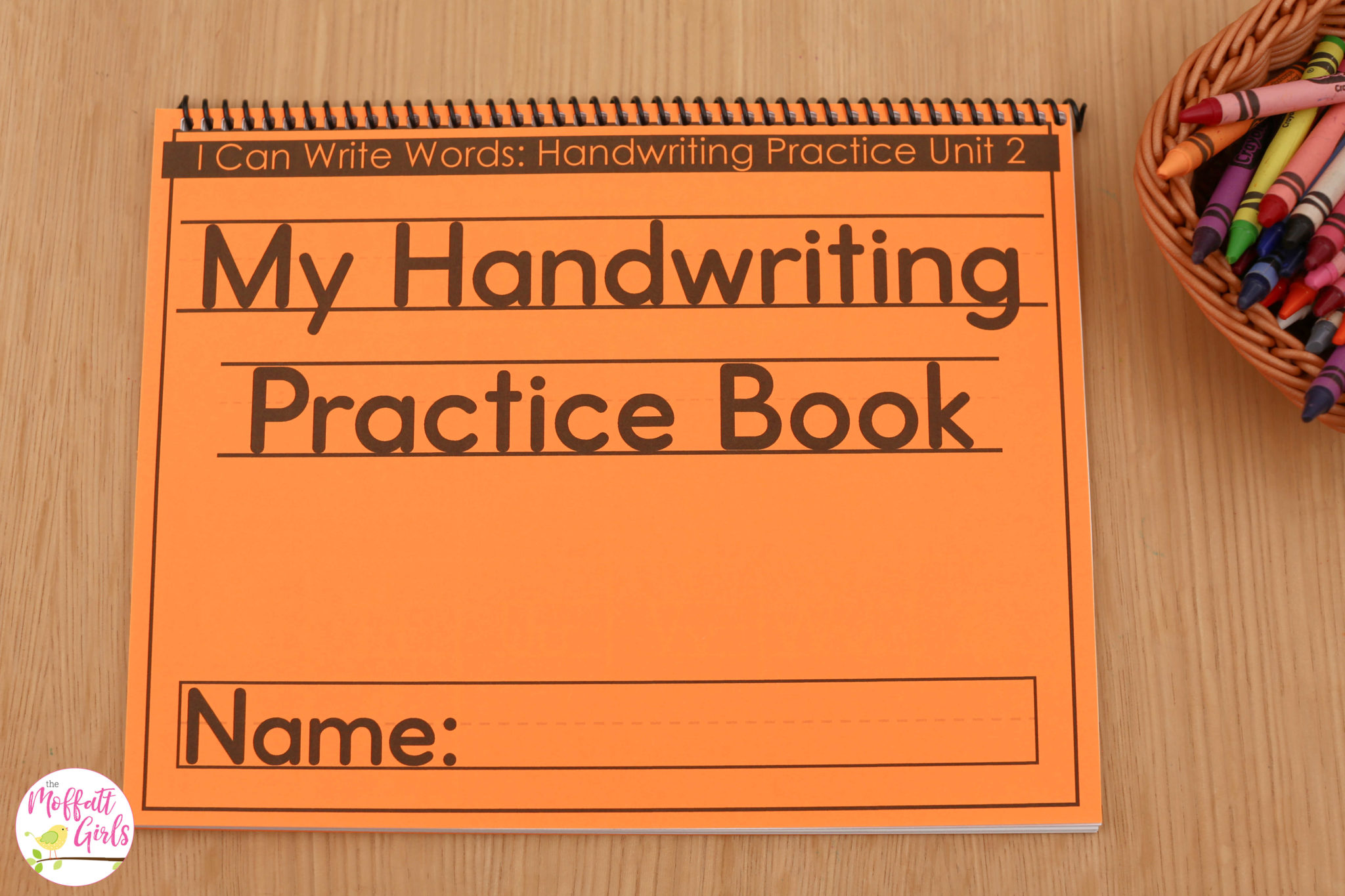
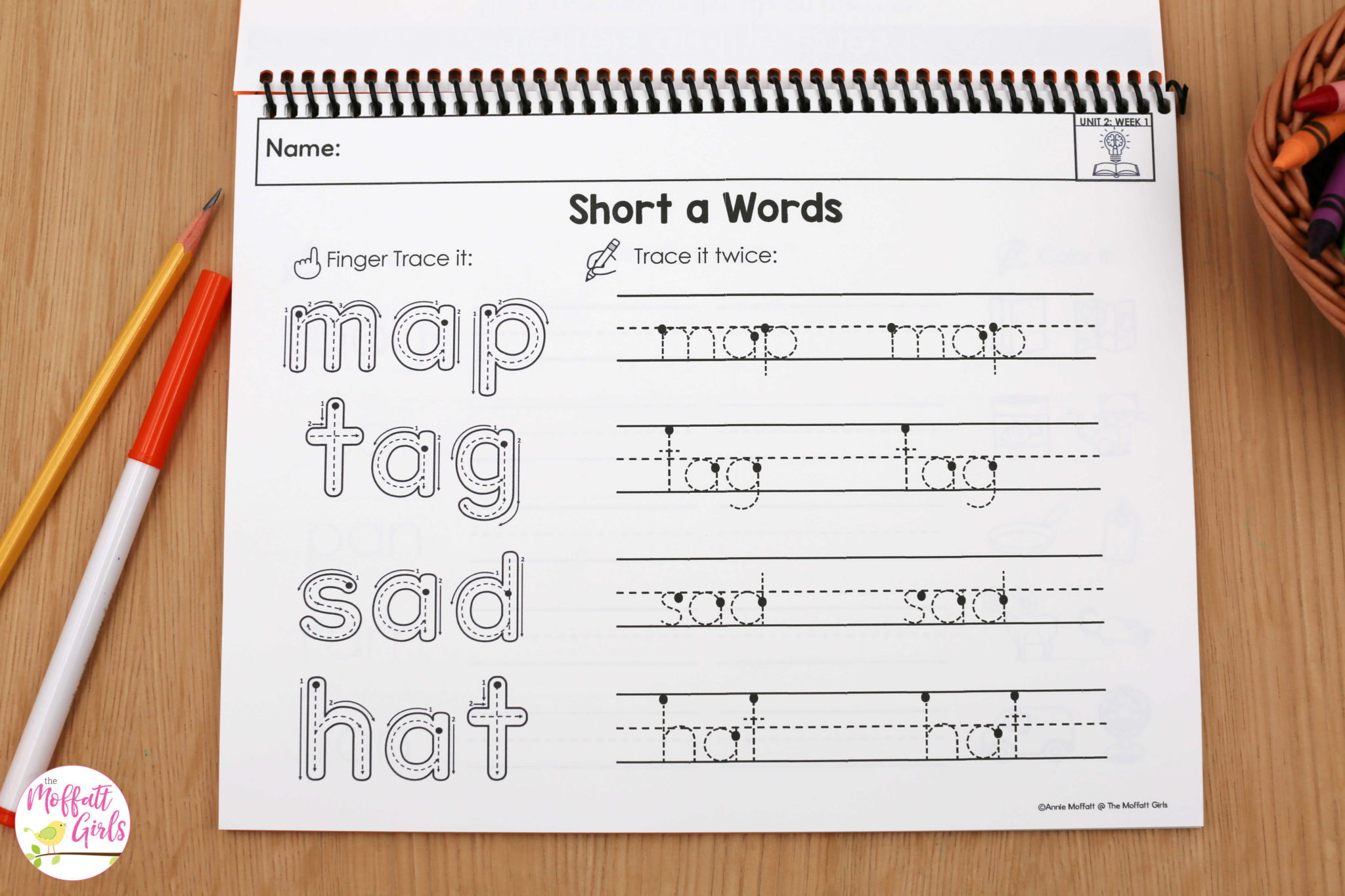


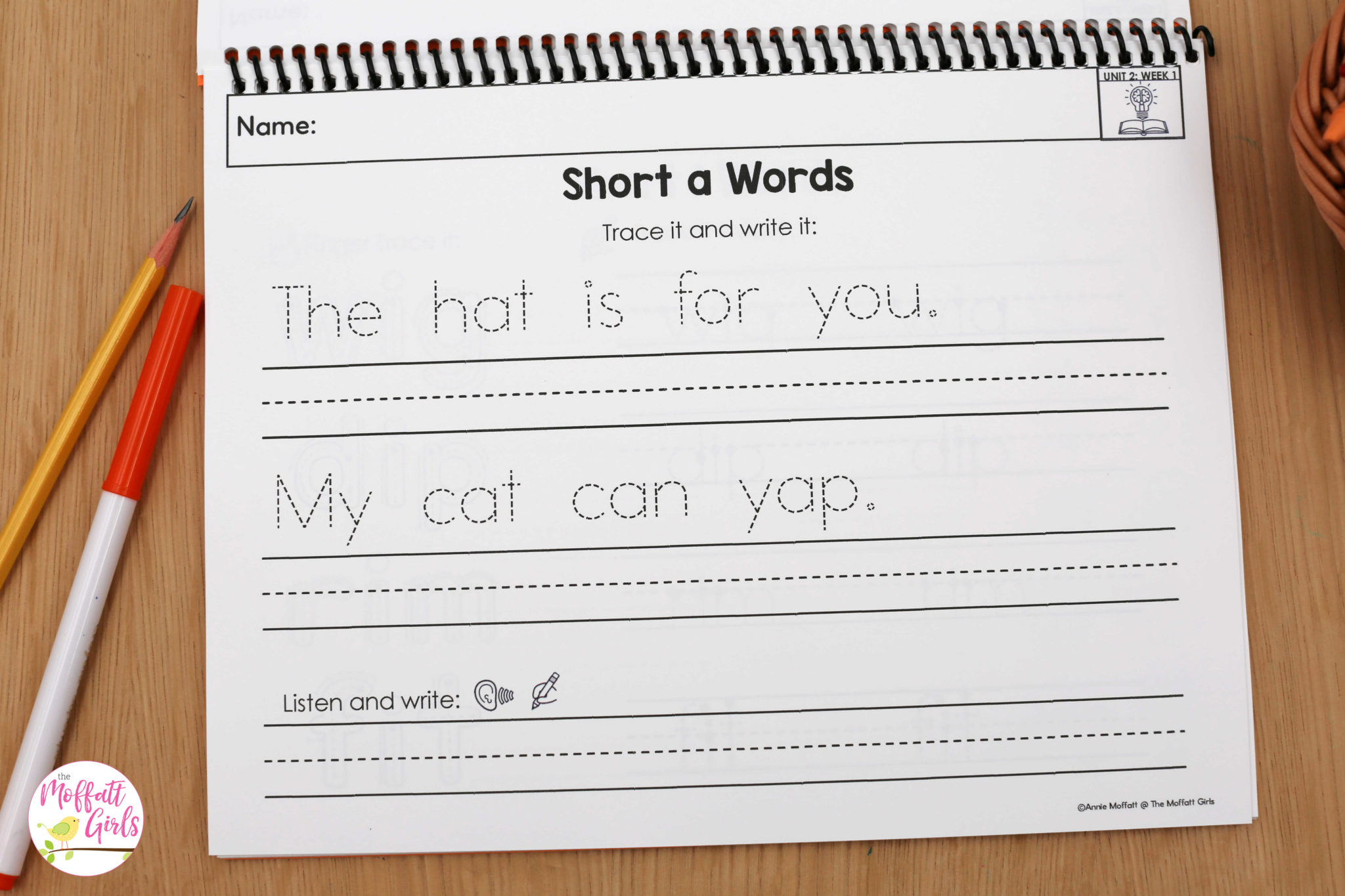
Here is a link the entire Level 1 of Pathway to Fluency!
I hope that you find this resource helpful! If you’d like to read about Unit 1, Click Here.
The post Pathway to Fluency: Unit 2 appeared first on Moffatt Girls.

